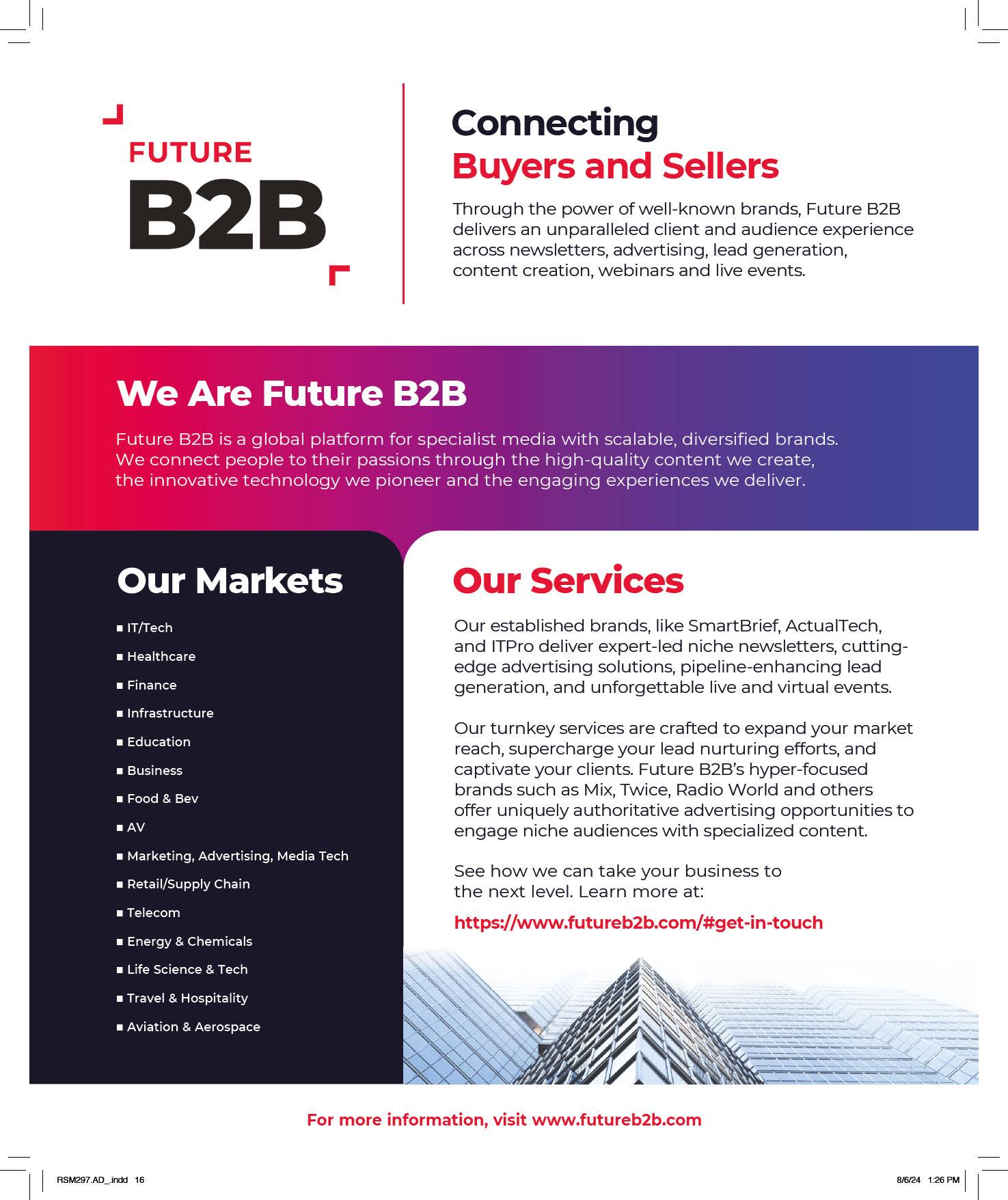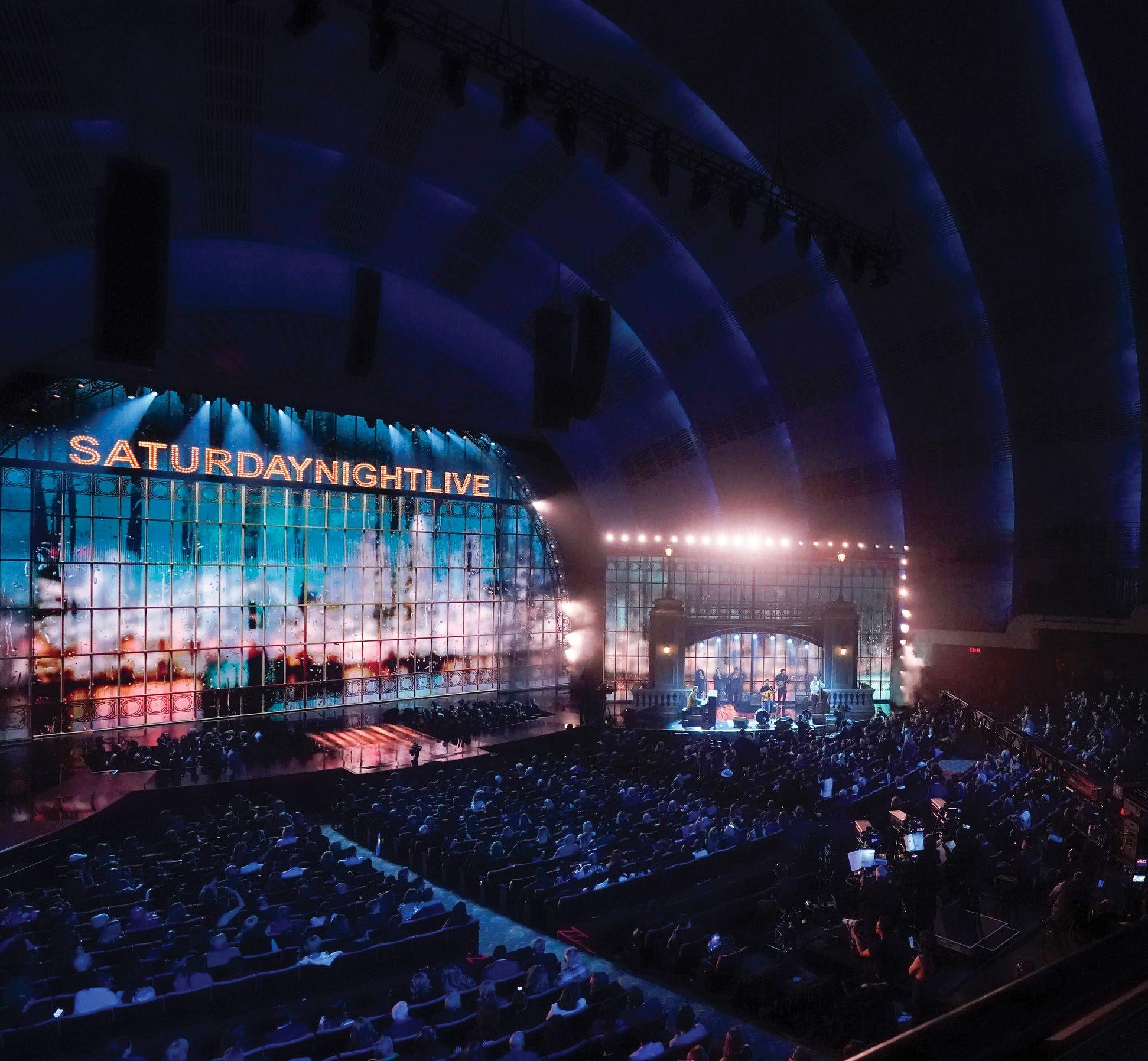

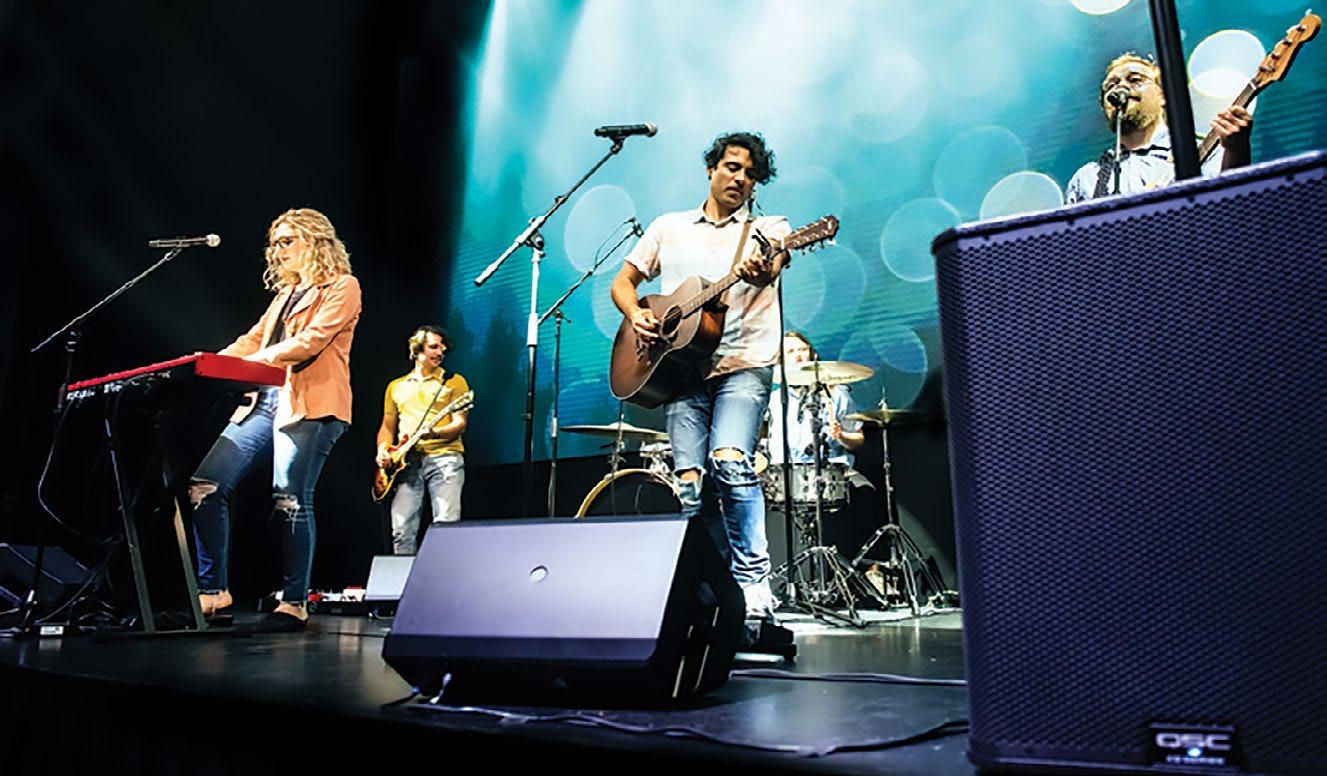
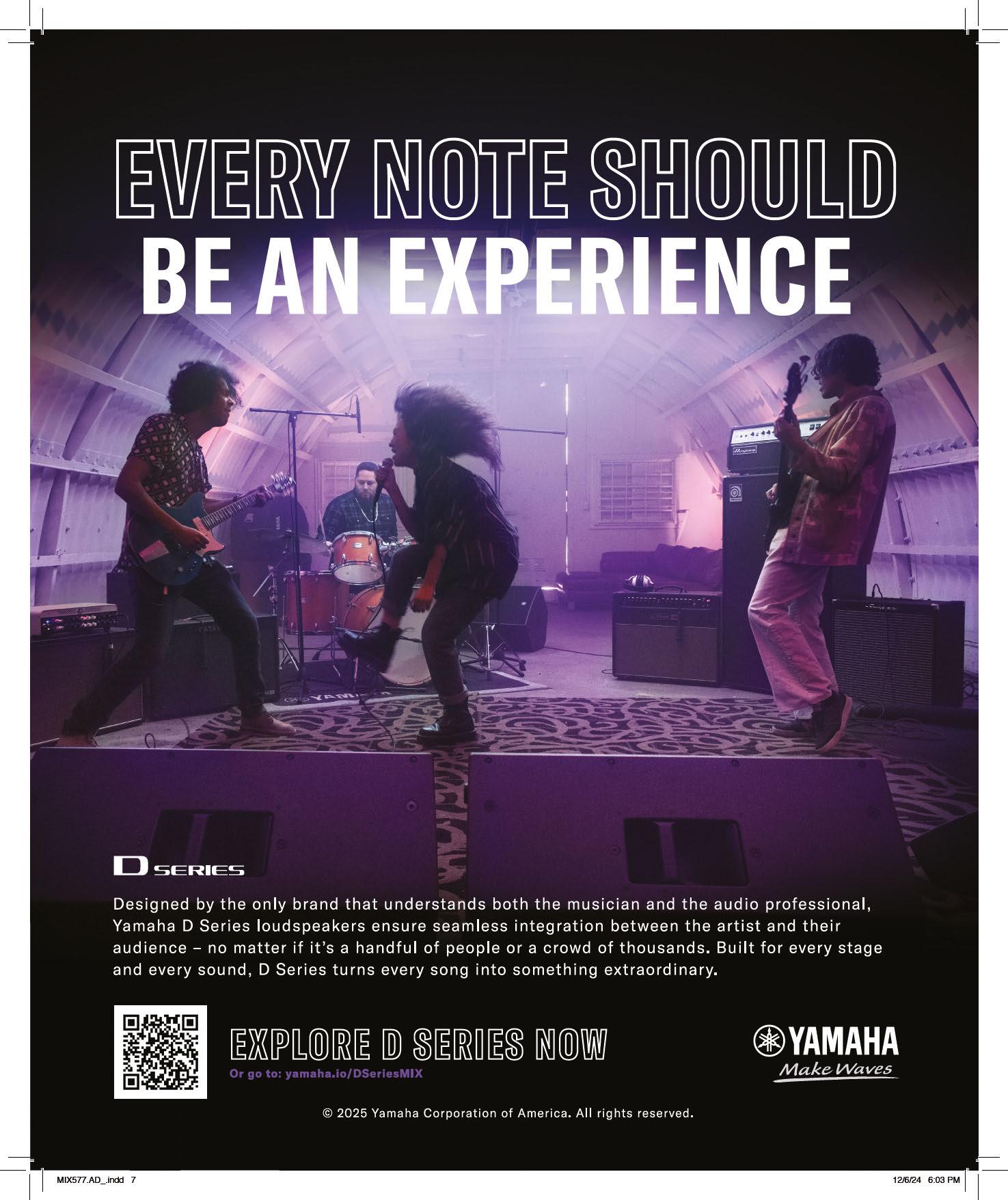



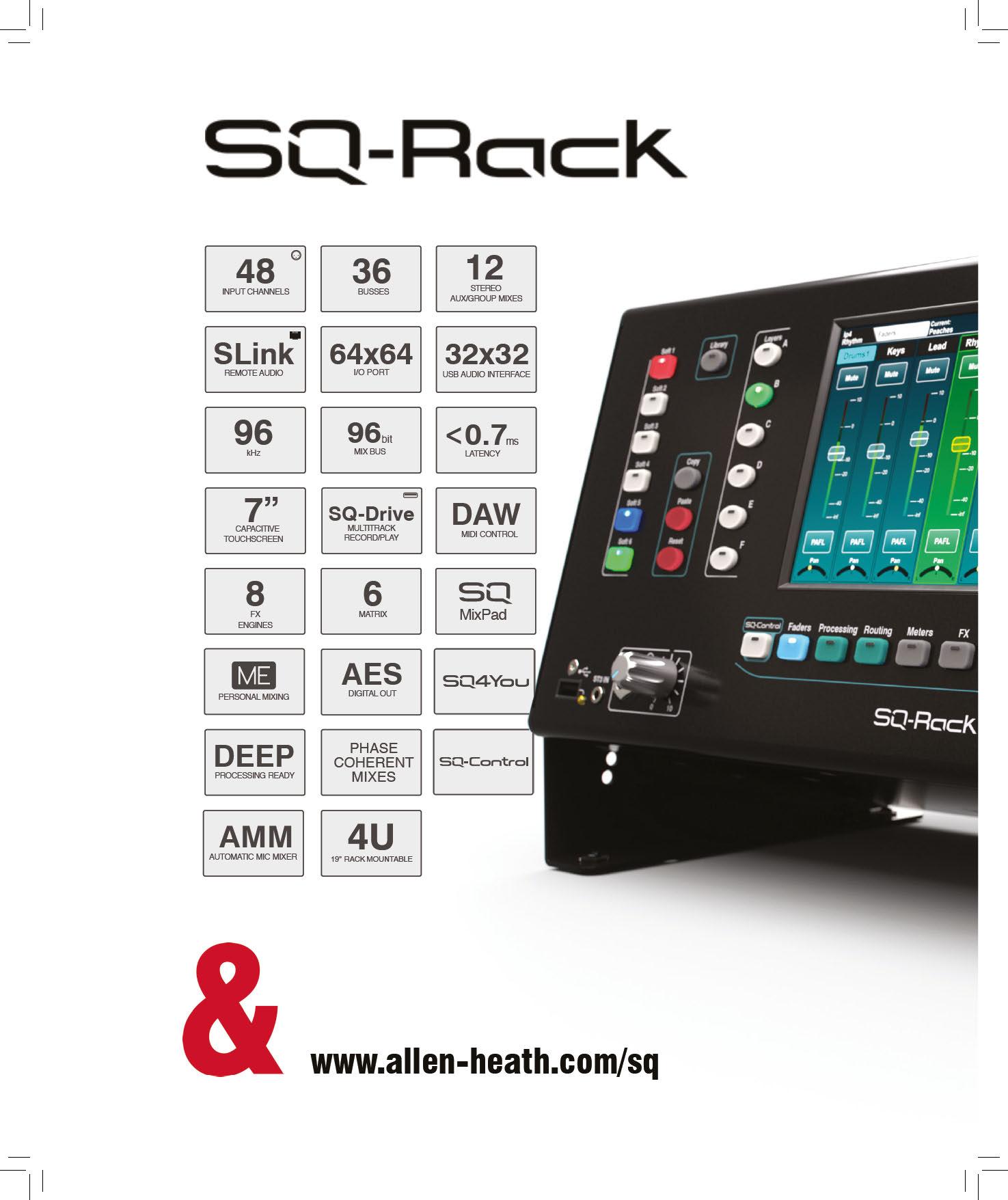
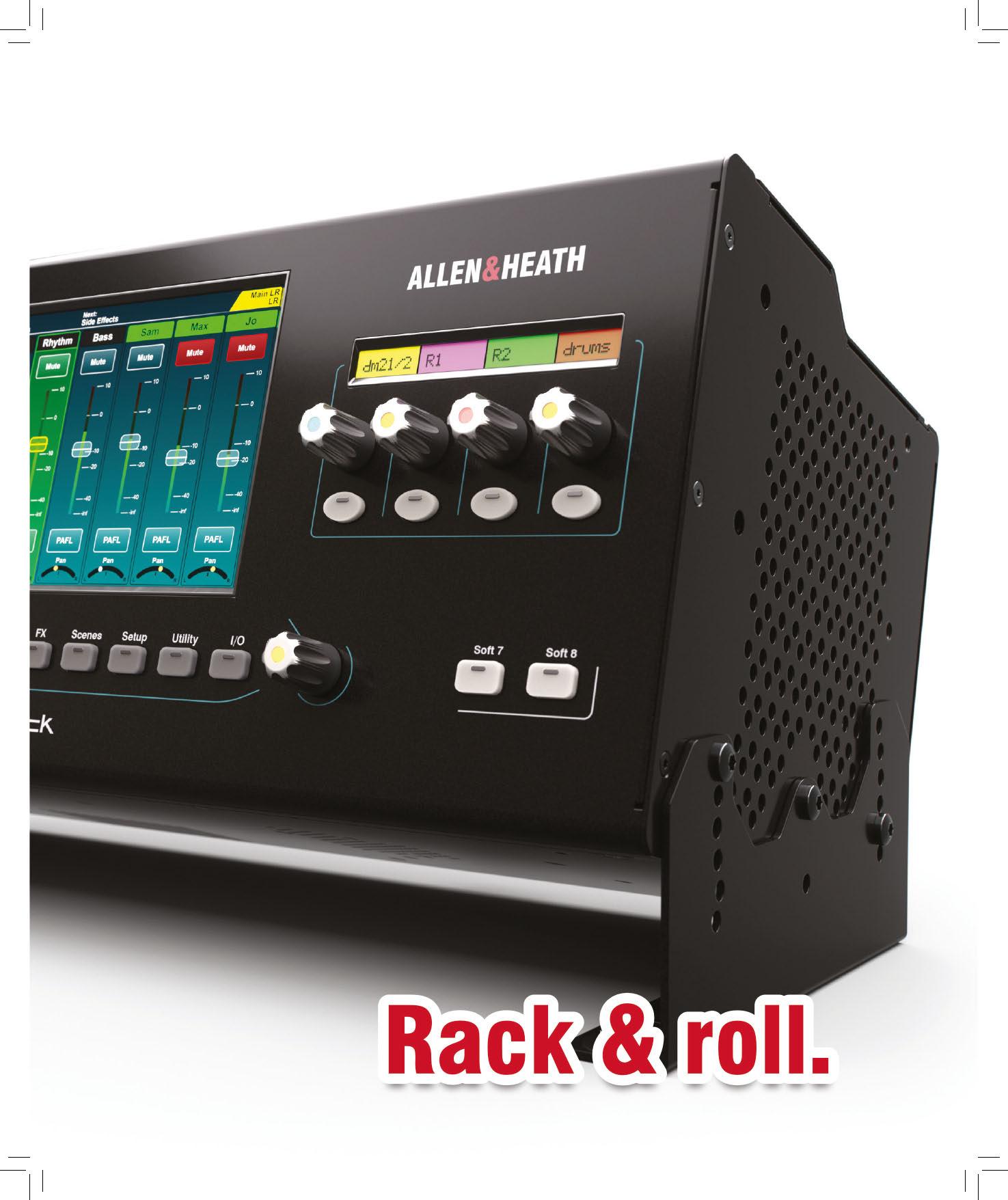
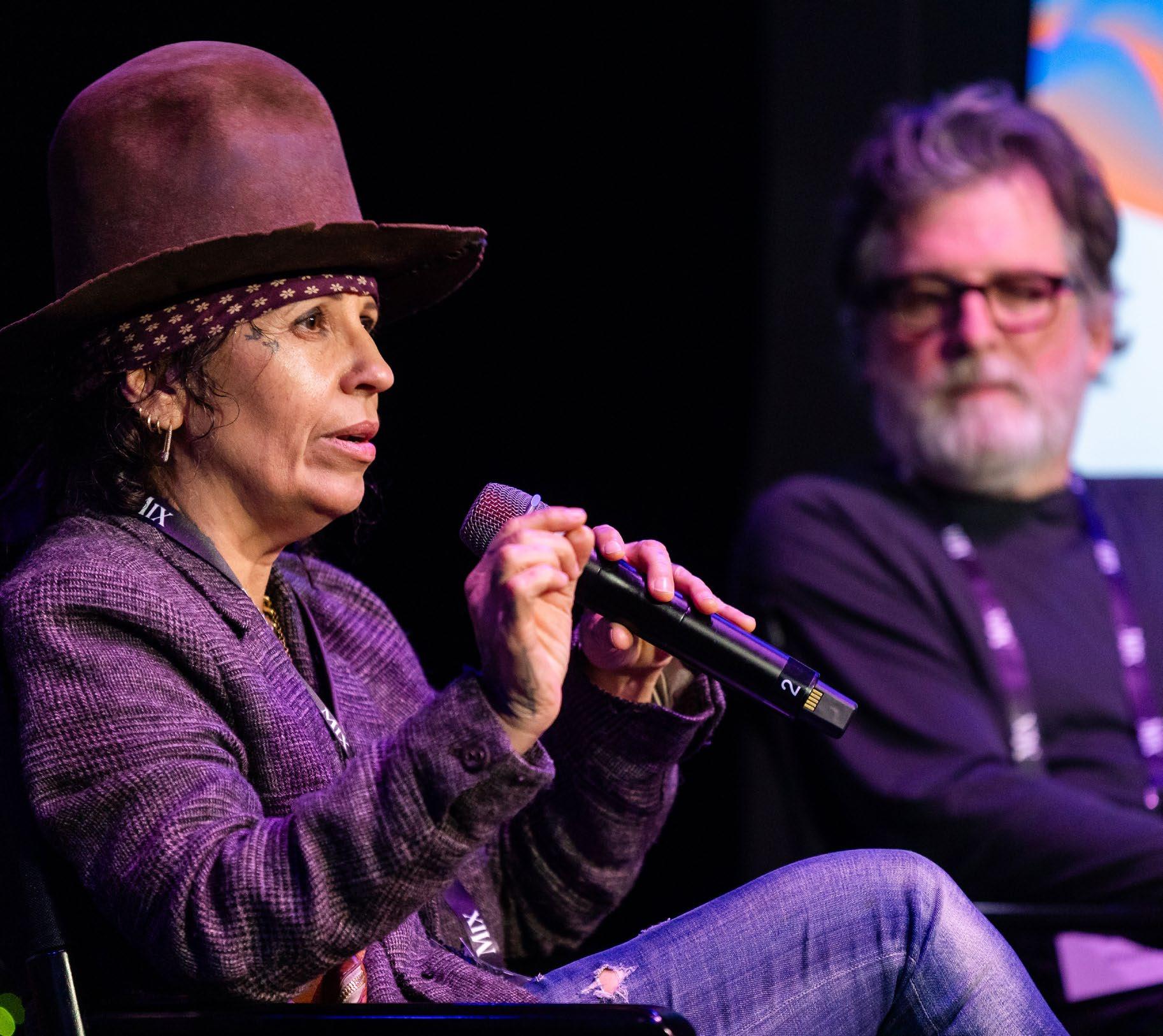











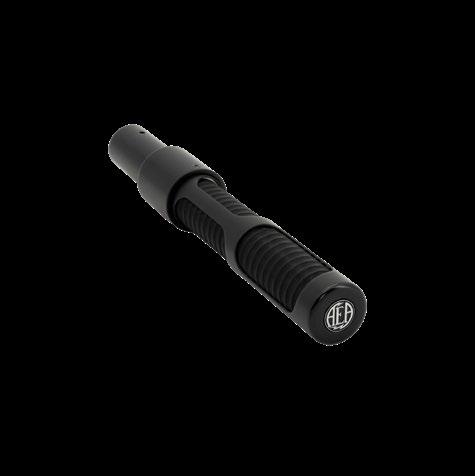
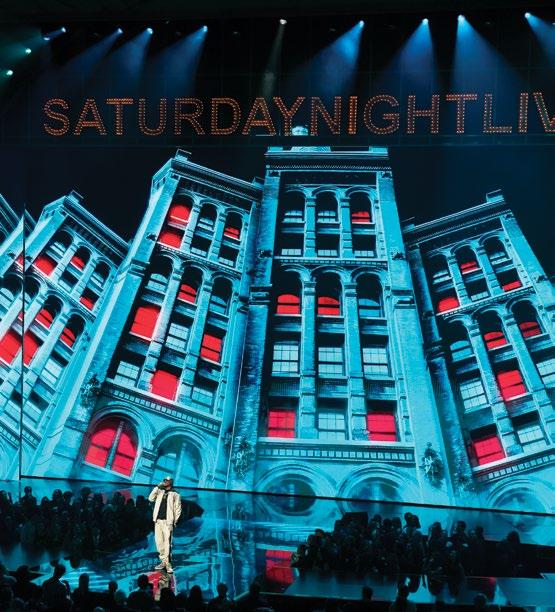
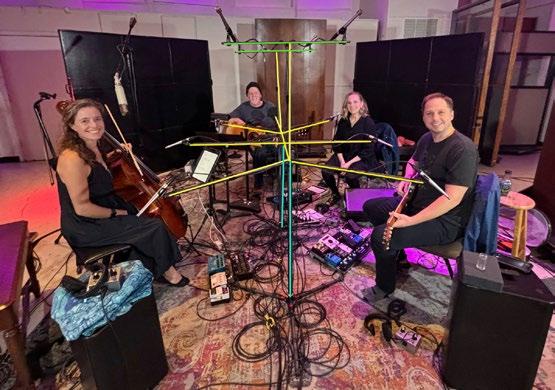
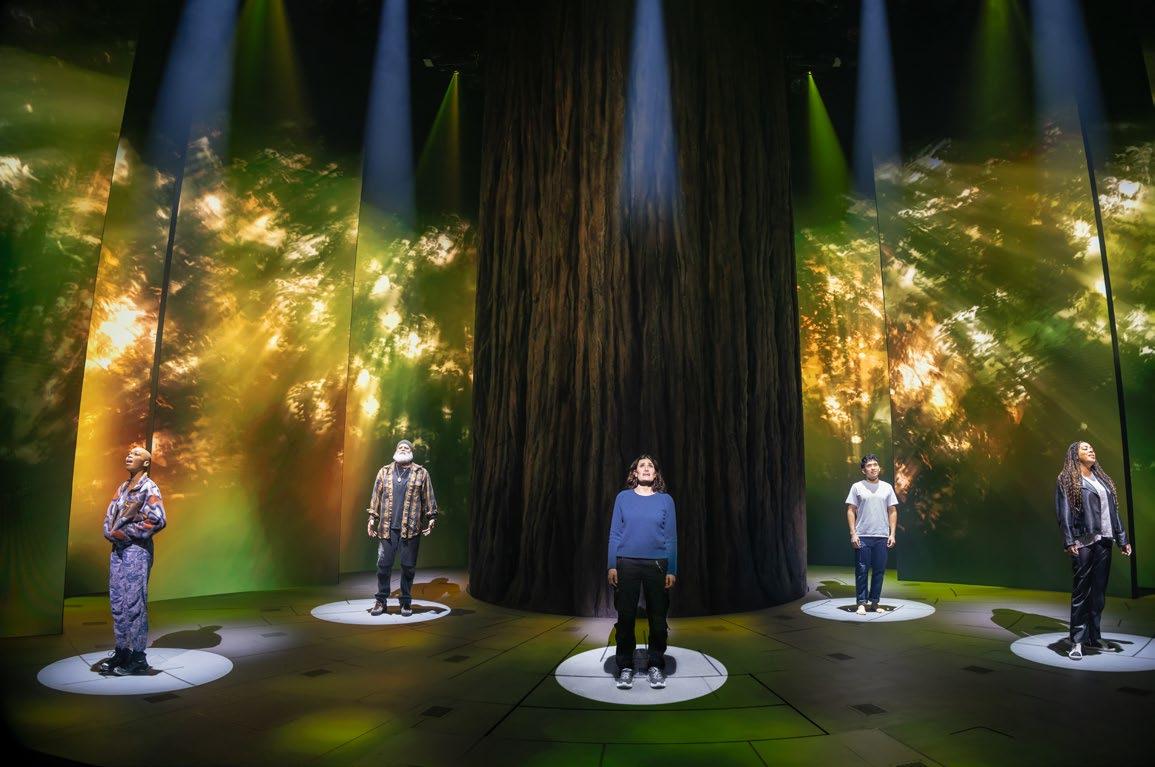
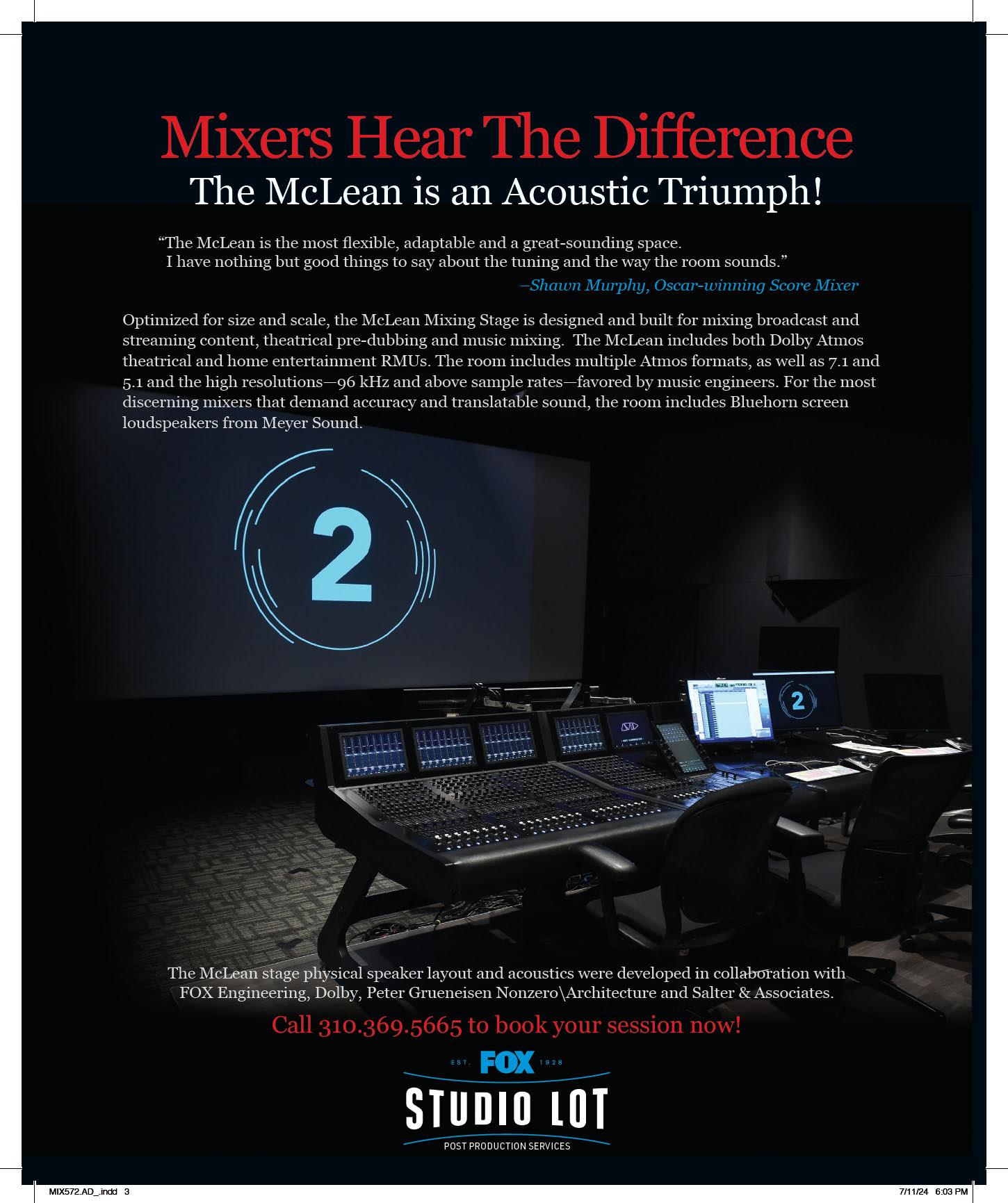
*
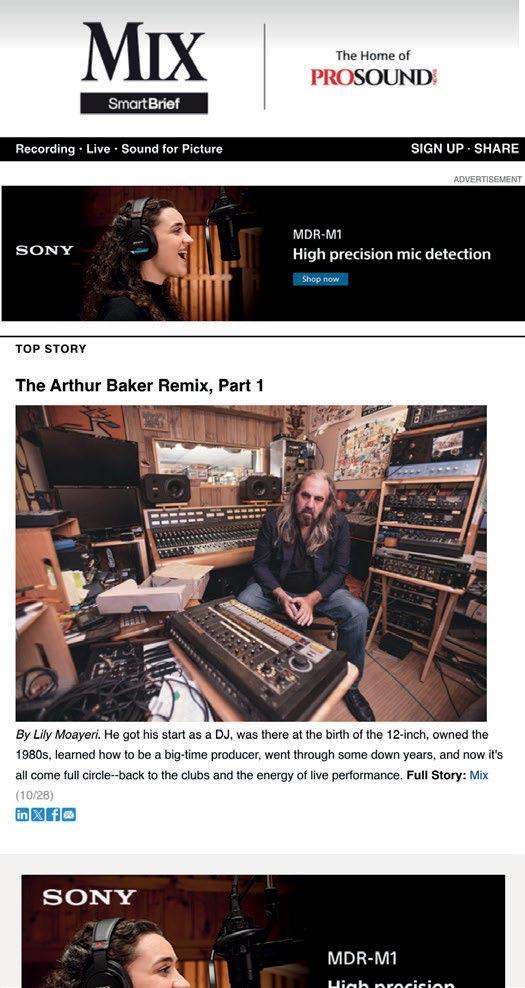
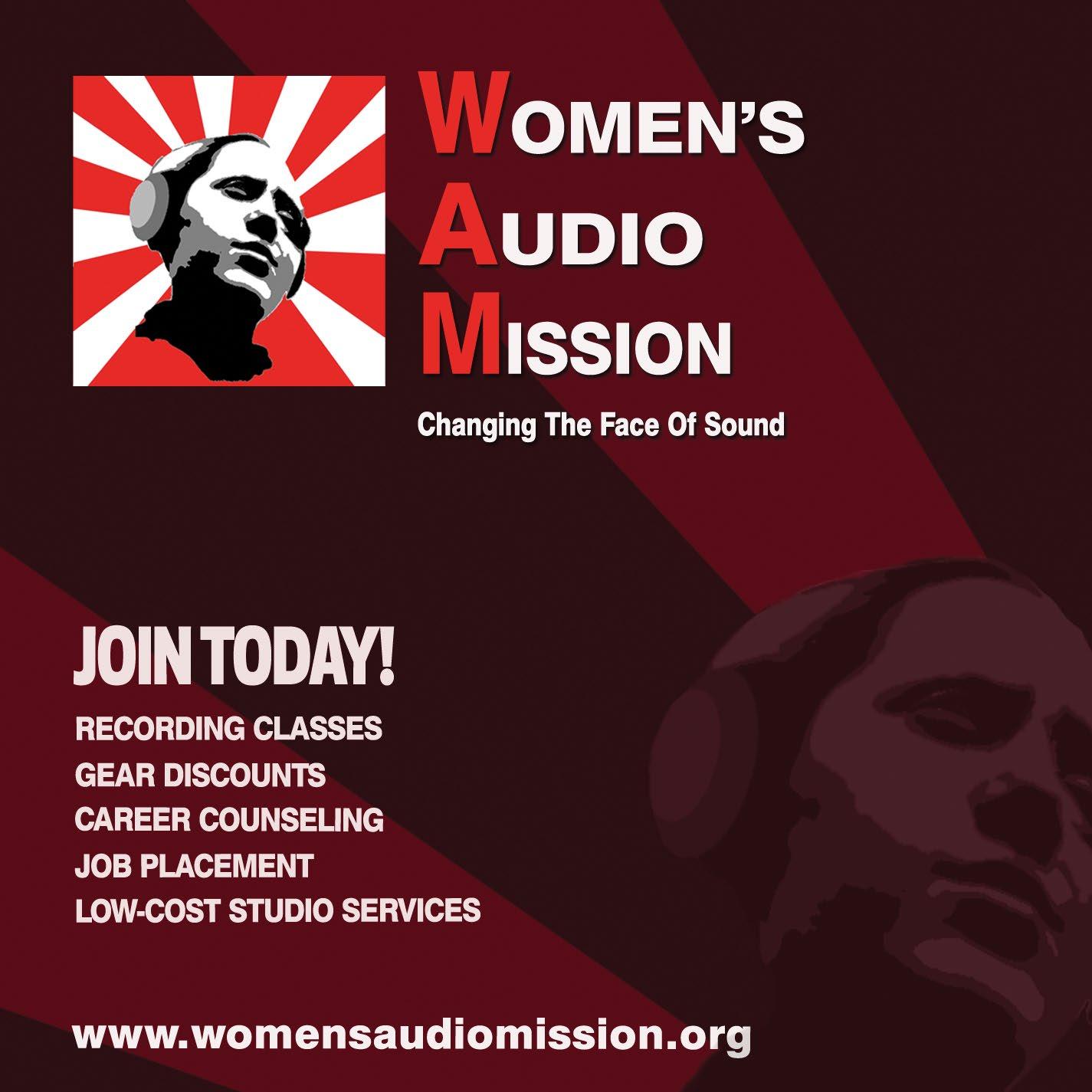


FOLLOW US twitter.com/Mix_Magazine facebook/MixMagazine instagram/mixonlineig
CONTENT
Content Directors Tom Kenny, thomas.kenny@futurenet.com
Clive Young, clive.young@futurenet.com
Senior Content Producer Steve Harvey, sharvey.prosound@gmail.com
Technology Editor, Studio Mike Levine, techeditormike@gmail.com
Technology Editor, Live Steve La Cerra, stevelacerra@verizon.net
Contributors: Craig Anderton, Barbara Schultz, Barry Rudolph, Robyn Flans, Rob Tavaglione, Jennifer Walden, Tamara Starr
Production Manager Nicole Schilling
Design Directors Will Shum and Lisa McIntosh
ADVERTISING SALES
Managing Vice President of Sales, B2B Tech
Adam Goldstein, adam.goldstein@futurenet.com, 212-378-0465
Janis Crowley, janis.crowley@futurenet.com
Debbie Rosenthal, debbie.rosenthal@futurenet.com
Zahra Majma, zahra.majma@futurenet.com
SUBSCRIBER CUSTOMER SERVICE
To subscribe, change your address, or check on your current account status, go to mixonline.com and click on About Us, email futureplc@computerfulfillment.com, call 888-266-5828, or write P.O. Box 8518, Lowell, MA 01853.
LICENSING/REPRINTS/PERMISSIONS
Mix is available for licensing.
Contact the Licensing team to discuss partnership opportunities. Head of Print Licensing: Rachel Shaw, licensing@futurenet.com
MANAGEMENT
SVP, MD, B2B Amanda Darman-Allen VP, Global Head of Content, B2B Carmel King MD, Content, AV Anthony Savona VP, Head of US Sales, B2B Tom Sikes
Managing VP of Sales, B2B Tech Adam Goldstein VP, Global Head of Strategy & Ops, B2B Allison Markert
VP, Product & Marketing, B2B Andrew Buchholz
Head of Production US & UK Mark Constance
Head of Design, B2B Nicole Cobban FUTURE US, INC.

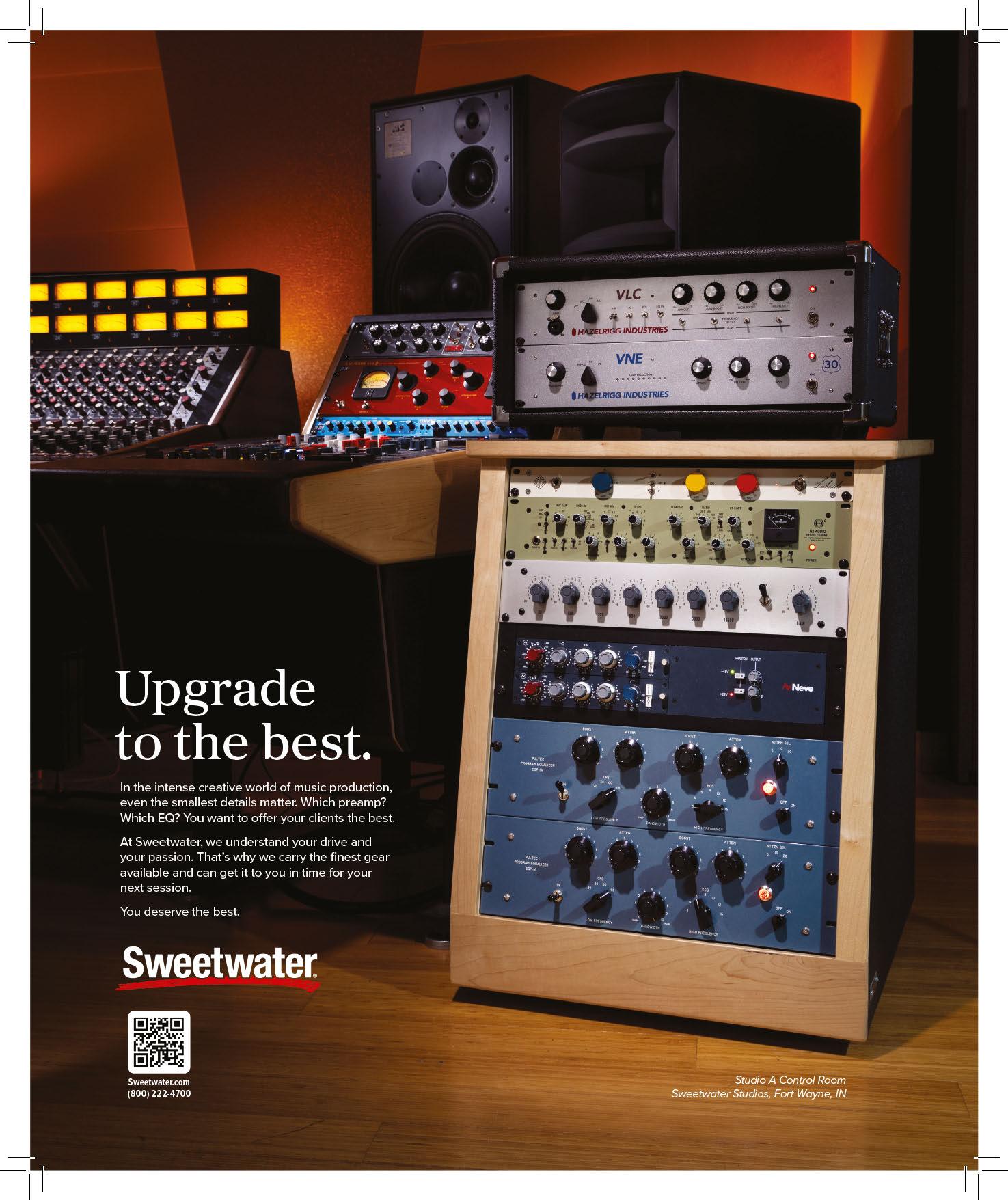
You never really know how things will when you wake on the morning of a big show. You can hold tech run-throughs and host prep calls and go over a thousand details to make sure that everything is aligned, from parking tickets audio and video playback. You can backup generators in place, provide a final guest list to security and start opening up concessions. You can pray for sunshine while stashing umbrellas in a nearby storage room. can in place, dialed in, with programming timed and fine-tuned down to the second….
You never really know how things will go when you wake up on the morning of a big show. You can hold tech run-throughs and host prep calls and go over a thousand details to make sure that everything is aligned, from parking and tickets to audio and video playback. You can have backup generators in place, provide a final guest list to security and start opening up concessions. You can pray for sunshine while stashing umbrellas in a nearby storage room. You can have everything in place, dialed in, with programming timed and fine-tuned down to the second….
Or, you might find yourself waking up on the morning of a massive, yet hastily together, live music broadcast with dozens of acts at two venues, with no time for rehearsals or soundchecks….
Or, you might find yourself waking up on the morning of a massive, yet hastily thrown together, live music broadcast with dozens of major acts at two venues, with no time for rehearsals or soundchecks….
Either way, until doors open and the crowd shows up, you never really know what’s going to happen. And that’s the whole magic of going live, whether it’s Game 7 of the Stanley Cup Finals or a Thursday night show at the Bluebird. There is preparation, followed by anticipation, followed by performance and then the payoff, whether good or bad. A few weeks ago in Santa Monica, we hosted the second annual Mix LA: Immersive Music Production event at our host partner UMG’s 21fifteen Studios, and it turned out to be a very good day.
It wasn’t a great day because we had a huge crowd; at 210 attendees, we were down 20 from the previous year. And it wasn’t a great day because we made a lot of money; we ended up slightly under budget. Much of that was expected, as we didn’t make a decision on actually going through with the event until a month prior, holding back out of respect for those who were still living through the devastation of the January wildfires.
Either way, until doors open and the crowd shows up, you never really know what’s going to happen. And that’s the magic of going live, whether it’s Game 7 of the Stanley Cup Finals or a Thursday night show at the Bluebird. There is preparation, followed by anticipation, followed by performance and then payoff, good or bad. few ago in Santa Monica, we hosted the second annual Mix LA: Immersive Music at our host partner UMG’s 21fifteen Studios, and it turned out to be a very good day. wasn’t a great day because we had a huge crowd; at 210 attendees, we were down 20 from the previous year. And it wasn’t a great day because we made a lot of money; we ended up slightly under budget. Much of that was expected, as we didn’t make decision on actually going through with the event until a month prior, holding back out of respect for those who were still living through the devastation of the January wildfires.
it was a day because of the people in room. The mood in the room. The way the molecules were vibrating in the air. It was because of the sponsors in the studios and the way they interacted with the audience, recognizing that this was something of a coming-out party for the local community. It was because of the engineering studio security guards 21fifteen. It was because of the attendees, a high-achieving and highly engaged group of audio pros who came in the doors with a true desire to be there.
No, it was a great day because of the people in the room. The mood in the room. The way the molecules were vibrating in the air. It was because of the sponsors in the studios and the way they interacted with the audience, recognizing that this was something of a coming-out party for the local community. It was because of the engineering team, studio staff and security guards at 21fifteen. It was because of the attendees, a high-achieving and highly engaged group of audio pros who came in the doors with a true desire to be there.
But most of all, it was a great day because of the talent up on the stage. They spoke openly. They spoke honestly. And they spoke truth.
most of it was a great because of the up on the stage. They spoke openly. They spoke honestly. And they spoke truth.
There was plenty of discussion about immersive music, of course, from using parallel compression on vocals so they will pop to unraveling the 40-year-old multitracks for an upcoming Atmos release. But the tone was set in the opening Keynote Conversation, “Rebuilding the Mix,” when Greg Wells and Bob Clearmountain, two of our industry’s giants, spoke candidly about the past two months, as they continue to work and scramble to
There was plenty of discussion about immersive music, of course, from using parallel compression on so they will pop to unraveling the 40-year-old multitracks for an upcoming Atmos release. But the tone was set in the opening Keynote Conversation, “Rebuilding the Mix,” when Greg Wells and Bob Clearmountain, two industry’s giants, spoke candidly about the past two months, as they continue to work and scramble to
adapt, all while trying to rebuild their lives following the fires. It was personal, gracious, heartbreaking and inspiring all at the same time. At one point, Bob told the audience he had already started construction on a new studio and was going to name it Mix This! FTA, shorthand for From The Ashes. A touch of self-inflicted gallows humor that hit the perfect note.
all while to their lives fires. It was personal, gracious, heartbreaking and inspiring all at the same time. At one point, Bob told the audience he had already started construction on a new studio and going to name it Mix FTA, shorthand for From The Ashes. A touch of self-inflicted gallows humor that hit the perfect note.
We were off to a good start.
We were off to a good start.
And then, a few later, Linda Perry closed the day and the show. Over the past year, the hitmaking producer, songwriter and artist has quietly but furiously written, recorded and produced her first album as an artist 20 and she closed Mix LA engineer Dave Way by debuting two songs from the Let Here, and talking about her journey through the music industry.
And then, a few hours later, Linda Perry closed the day and stole the show. Over the past year, the hitmaking producer, songwriter and artist has quietly but furiously written, recorded and produced her first album as an artist in 20 years, and she closed Mix LA alongside engineer Dave Way by debuting two of the songs from the soon-to-be-released Let It Die Here, and talking about her journey through the music industry.
It was the first time she would be hearing the tracks in Atmos, and we quickly set up three chairs in the front row so she and her daughter Rhodes could listen to the title track with the audience before we took the stage. Midway through the panel discussion, we paused and listened to a playback of “Sunday Best.” When Perry returned to the stage, she had a tear in her eye and said quietly, into the mic, “That’s a beautiful song—not because I wrote it, but because of how it made me feel.” Honest and true.
It the first time she would be the tracks and we quickly set up three chairs in the front row so she and her daughter Rhodes could listen to the title track with the audience before we took the Midway through panel discussion, we paused to playback of “Sunday Best.” When Perry returned to the stage, she had a tear in her eye and said quietly, into the mic, “That’s a beautiful song—not because I it, but because how made feel.” Honest true.
She also talked about her experience as a young artist and called out Jimmy Iovine by name. She challenged the audience, asking, “Where are all women designers, front of house mixers, managers, roadies, assistant engineers, educators and record executives?” She spoke openly and honestly about her mother. After 20 years of creating hits for others, she realized that she had never at herself. found incredible surge of creative energy and expression, and less than a year later, she is ready to release an album. It is largely about her mother.
She also talked about her experience as a young artist and called out Jimmy Iovine by name. She challenged the audience, asking, “Where are all the women mic designers, front of house mixers, tour managers, roadies, assistant engineers, educators and record executives?” She spoke openly and honestly about her mother. After 20 years of creating hits for others, she realized that she had never looked at herself. She found an incredible surge of creative energy and expression, and less than a year later, she is ready to release an album. It is largely about her mother.
I’ve been putting on events and hosting panels for 30 years, and I have never seen anything quite like it. I can’t put it in words; I doubt that the tone and feeling inside the room would even translate to YouTube. Everything that came out of her mouth was so genuine and authentic, so true to who she is and how she lives her life, that it was inspiring. I moderated the panel and was three feet away. More than a few times I remember thinking, “She is something special. This is something special.”
I’ve been putting on events hosting panels 30 and I have never seen anything quite like it. I can’t put it in words; I doubt that the tone and feeling inside the room would even translate to YouTube. Everything that came out of her mouth was so genuine and authentic, true to she is and how lives her life, that was inspiring. I moderated the panel and was three feet away. More than a few times I remember thinking, “She is something special. This is something special.”
All she spoke truth.
All because she spoke truth.
Tom Kenny, Co-Editor
Tom Kenny, Co-Editor
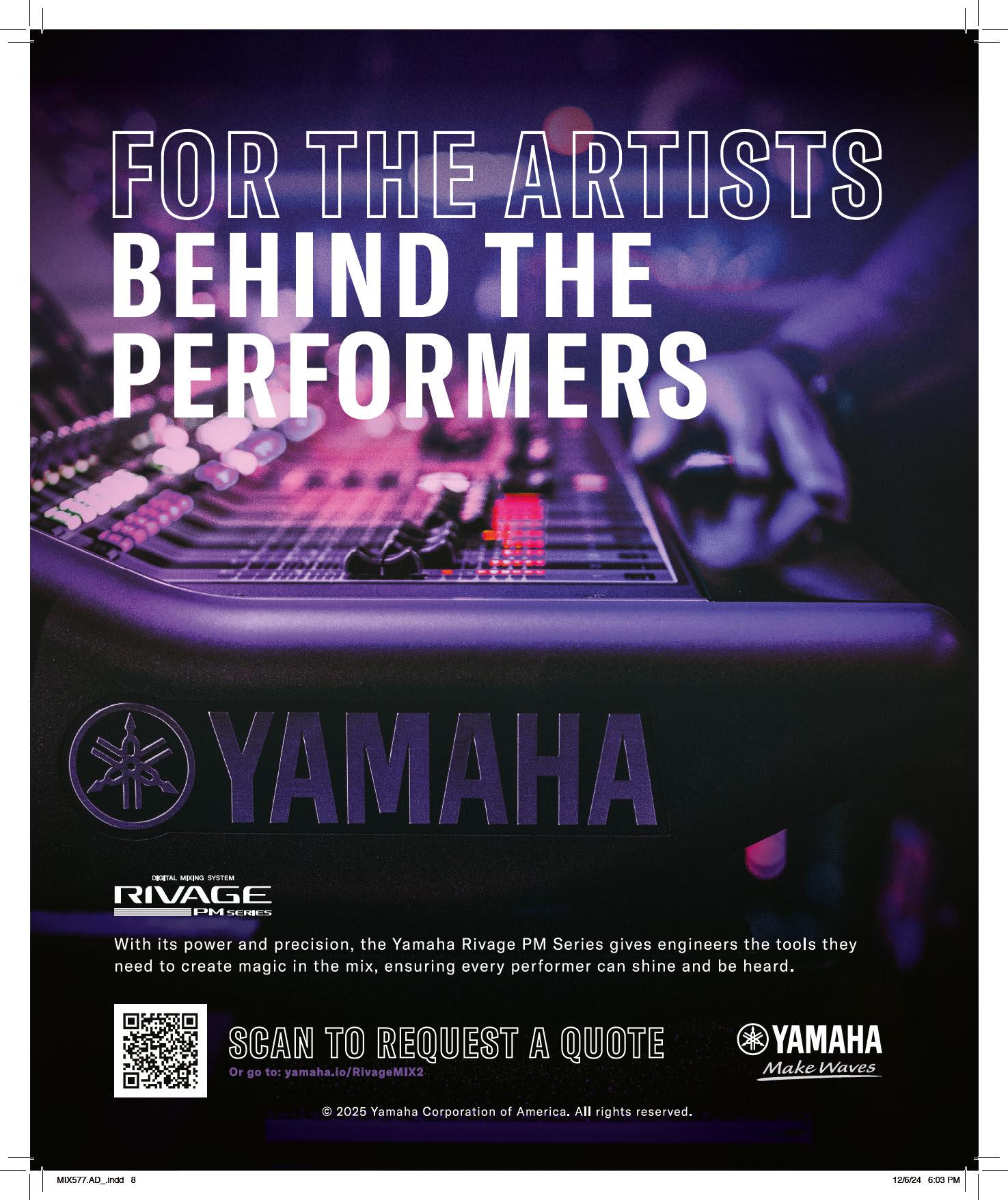
By Steve La Cerra
A hundred years of doing just about anything is a pretty impressive accomplishment, but a hundred years of innovation and helping lead your industry is a milestone. This year, Shure, Inc., reaches that milestone.
In 1925, Shure was founded in Chicago by S.N. Shure, primarily for the purpose of selling radio parts. Hard to believe that anyone would build or service a radio, but at the time, the format was a primary form of entertainment in the United States and across the globe (television was developing, but wouldn’t make its way into the majority of homes until 1950).
Several years later, in 1932, Shure introduced the Model 33N microphone, becoming one of a few American mic manufacturers at the time.
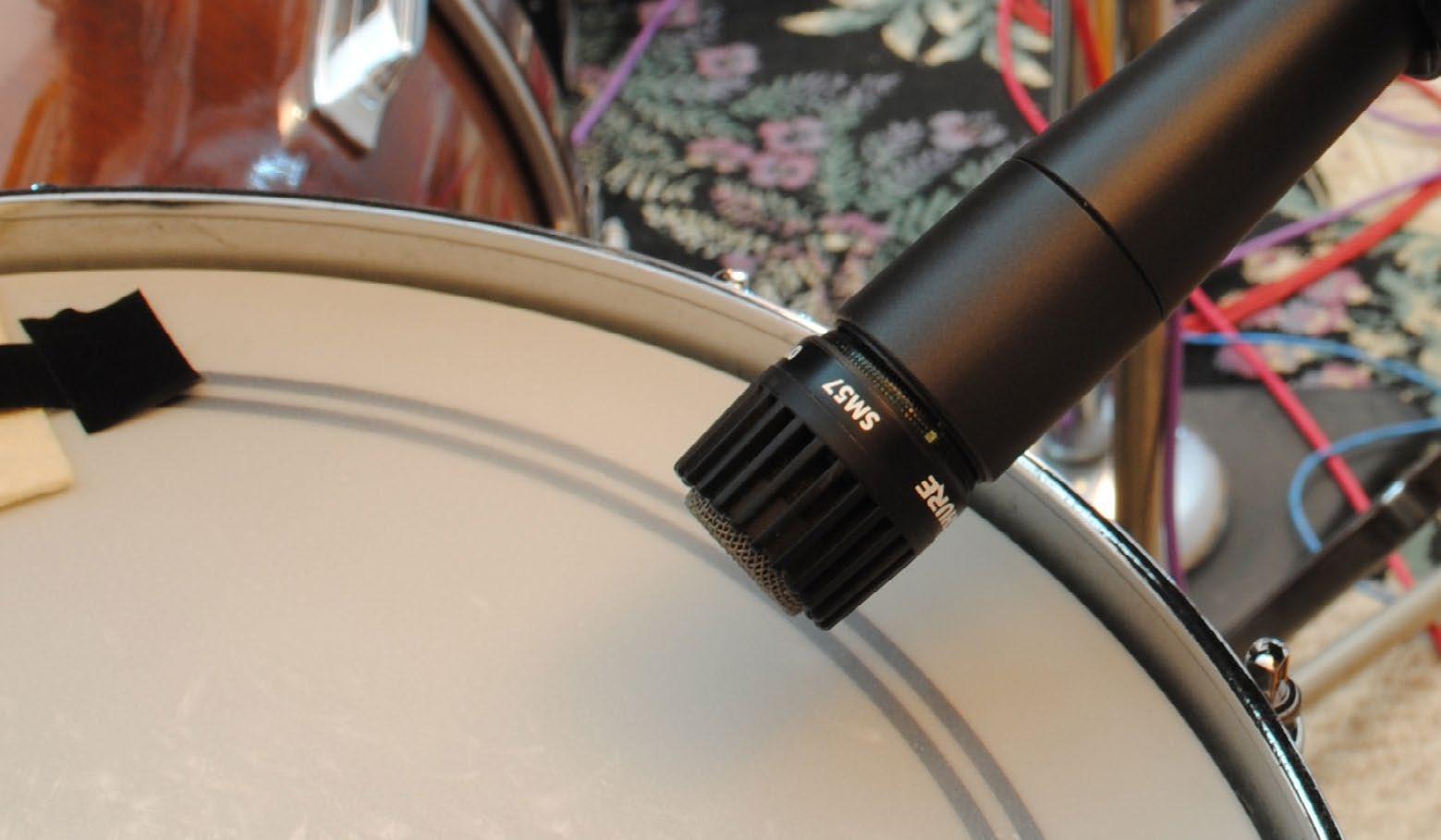
The Model 33N, sometimes referred to as a “ring and spring” microphone, was described in a Shure catalog (ca. 1933) as a “‘two-button’ carbon microphone… famous for its accurate reproduction of music.” Priced at 50 bucks (the equivalent of a hefty $1,200 in today’s dollars), the Model 33N wasn’t exactly affordable, and if you wanted the desk stand, you’d have to cough up an extra $10.
It boasted a frequency response of 30 to 8,000 “cycles,” as they referred to Hertz back then. For those unfamiliar with the concept, a carbon transducer uses vibrations from a moving diaphragm to compress and expand granules of carbon to which a charge has been applied. As the granules compress and expand, resistance across the granules changes, generating an audio output. Primitive by today’s standards, but state-ofthe-art at the time.
Let’s take a look at two iconic Shure products that have been in production for 60 years, for the most part unchanged: the SM57 and SM58.
The lineage of the SM57 goes back to 1959, when Shure developed the Unidyne III movingcoil capsule for the Model 545 microphone. A far cry from the capsule used in the Model 33N, the Unidyne III marked a significant improvement in performance because it was end-address (as opposed to side-address), a feature that made the polar pattern more consistent and reduced feedback.
The SM57 with the Unidyne III was
introduced in 1965 as a “Studio Microphone” (hence, the SM), referring to television studios and leading to the discreet color and finish. The microphone was quickly adapted by audio engineers as being capable of recording just about anything, including the President of the United States. In 1965, President Lyndon Johnson became the first U.S. President to deliver a speech over a Shure SM57, and since that time, not a single 57 has failed in that application.
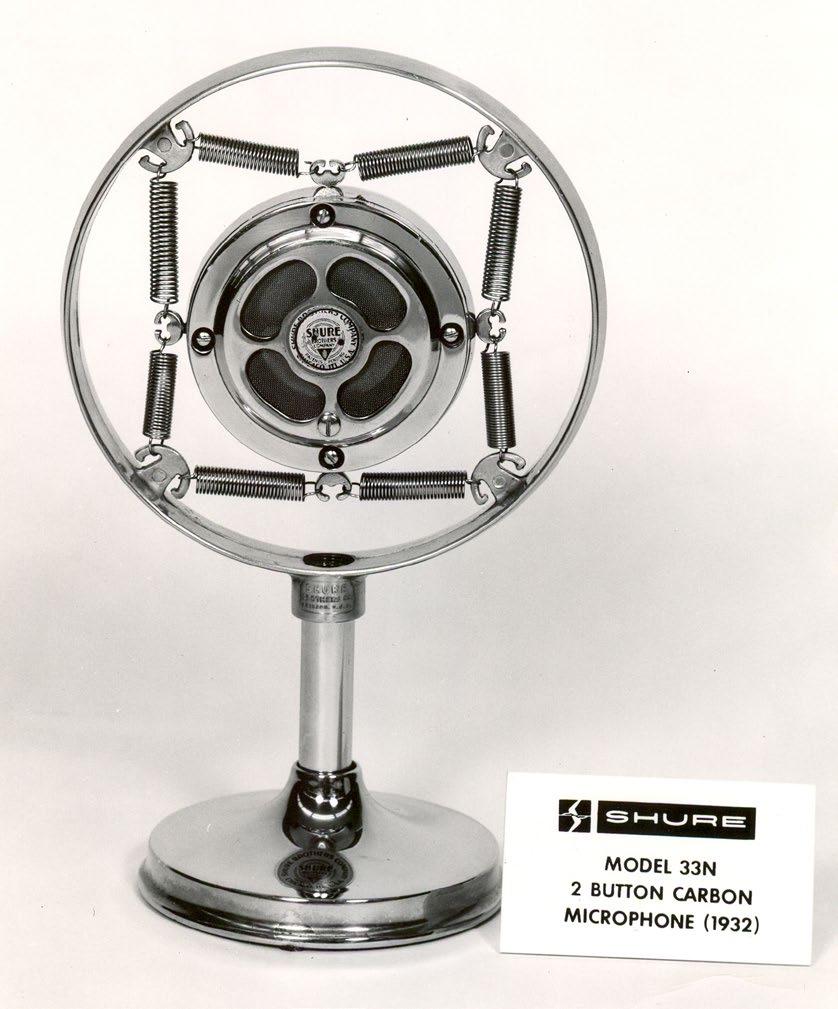
What about the Shure SM58? It was introduced one year later, in 1966, also based on the Unidyne III capsule. Perhaps the biggest difference between the 57 and 58 is the ball grille atop the latter. The size of the grille changes the minimum distance a source can be placed from the capsule, controlling proximity effect and yielding slight sonic differences.
If there are any microphones that deserve a place in music history, it’s the SM57 and SM58. The reasons are clear: They’re affordable, they deliver excellent sound quality, they’re versatile, and they are incredibly reliable—even when swung like a lasso from a mic cable.
In fact, I recall many years ago interviewing the FOH engineer for a famous rocker who would douse himself with buckets of water on stage while holding his SM58. The engineer told me they’d simply swap out the mic and let it dry, to be used again at the next show. Now that’s rock-and-roll. ■
Florence, Italy—It’s been busy times for Italian power amplifier manufacturer Powersoft. In late February, the company entered an agreement to purchase 51 percent of loudspeaker company K-array, and then in early March turned around and entered a strategic partnership with Cohesion, the sound reinforcement design and manufacturing brand within Clair Global Group.
Powersoft purchased the controlling interest in K-array from that brand’s corporate parent, HP Audio. Sweetening the deal, the agreement includes an option for Powersoft to obtain the remaining 49 percent at a later date.
Powersoft CEO Luca Lastrucci called the acquisition “a significant strategic step for our company and the professional audio market,” and added that the move would allow the companies to develop “integrated audio solutions” that will fall into current market segments where the amplifier company operates, as well as aid expansion into new areas.
The acquisition is also said to be part of Powersoft’s overall growth strategy to transform the group from a product company to a solutions provider, with a focus on the transportation and automotive sectors. Of note, Powersoft recently entered a technology partnership with Ferrari.
Both Powersoft and K-array are based in Florence, Italy. K-array, founded in 2005, designs and manufactures compact audio systems for three brands: K-array, the main line, focused on audio professionals; K-Gear, dedicated to traditional and more affordable audio solutions; and K-Scape, specializing in audio and lighting systems.
Meanwhile, under the strategic partnership with Cohesion, Powersoft will become a technological partner providing amplification and processing platforms for live touring and events audio, as well as installed sound systems.
“We’re excited to take live sound performance to the next level,” said Jeff Rocha, president of Clair Global’s product division and managing director of Cohesion. “We have a responsibility to meet or exceed the needs of our customers, and building this lasting collaboration ensures that we continue to do so.” ■
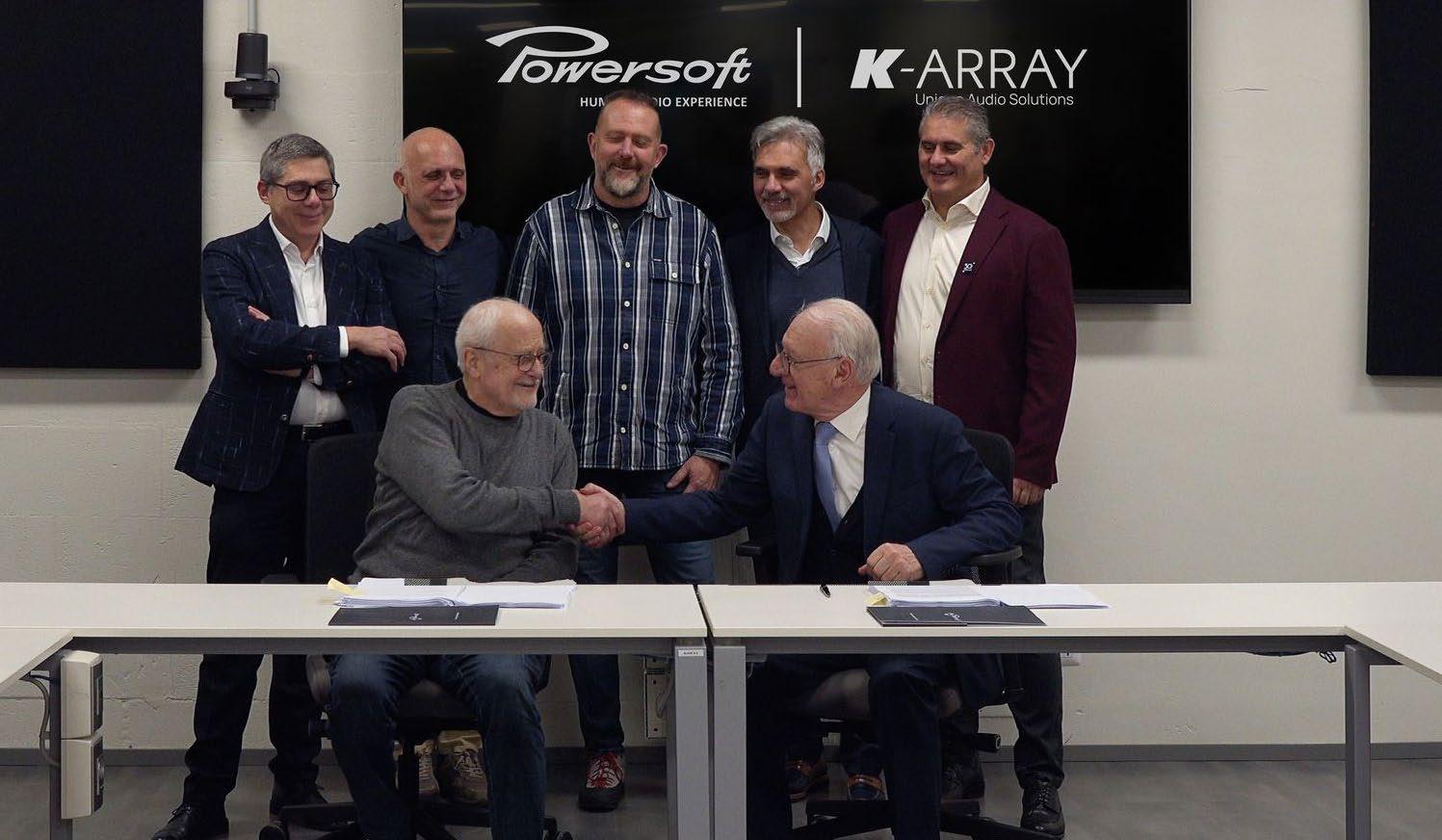
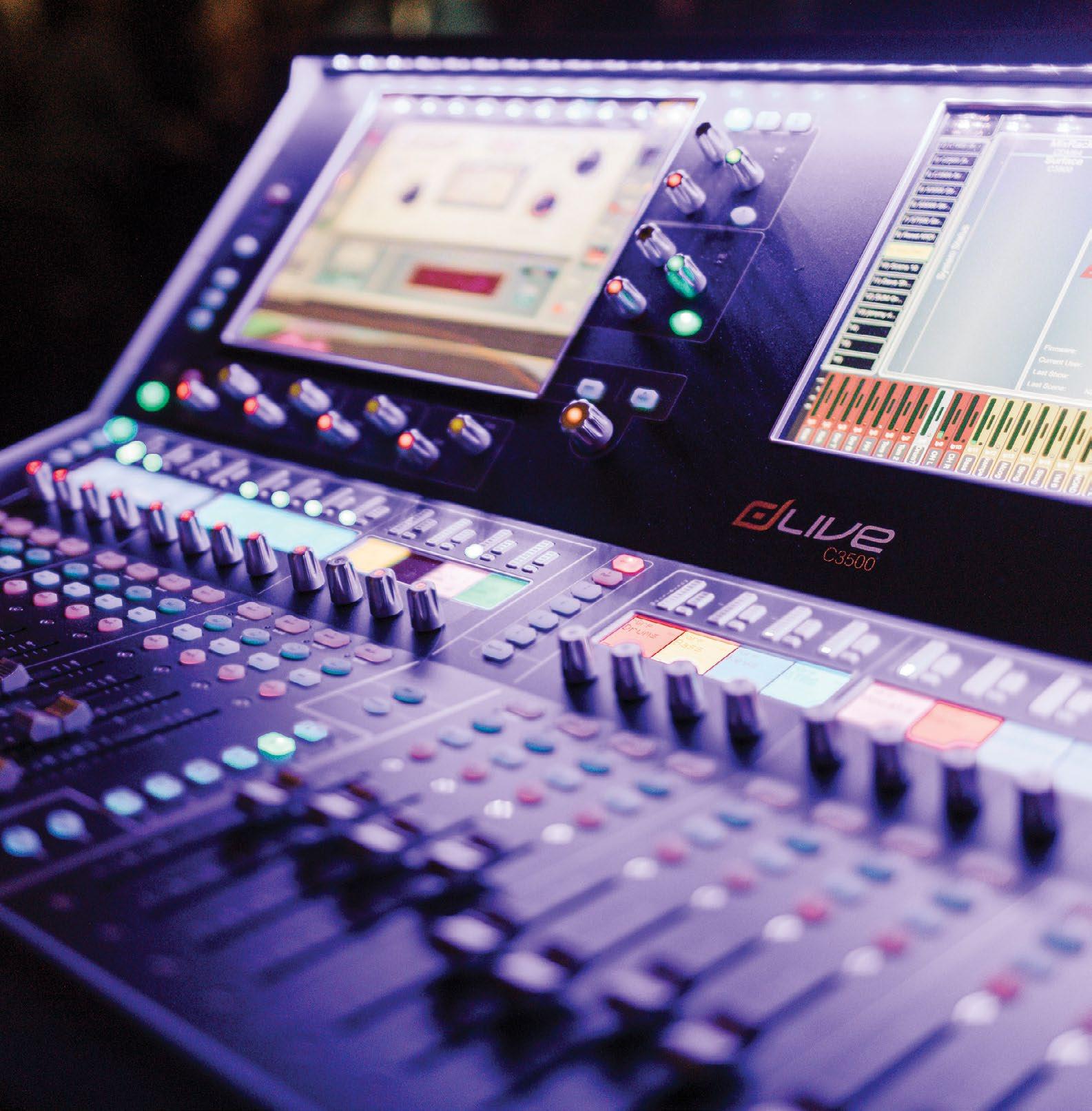
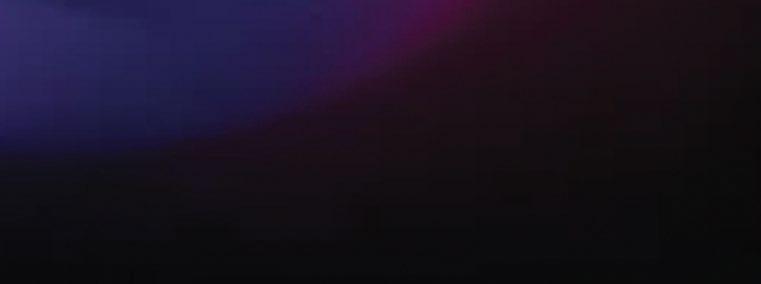
A memorable day of talent and technology at UMG’s 21fifteen Studios
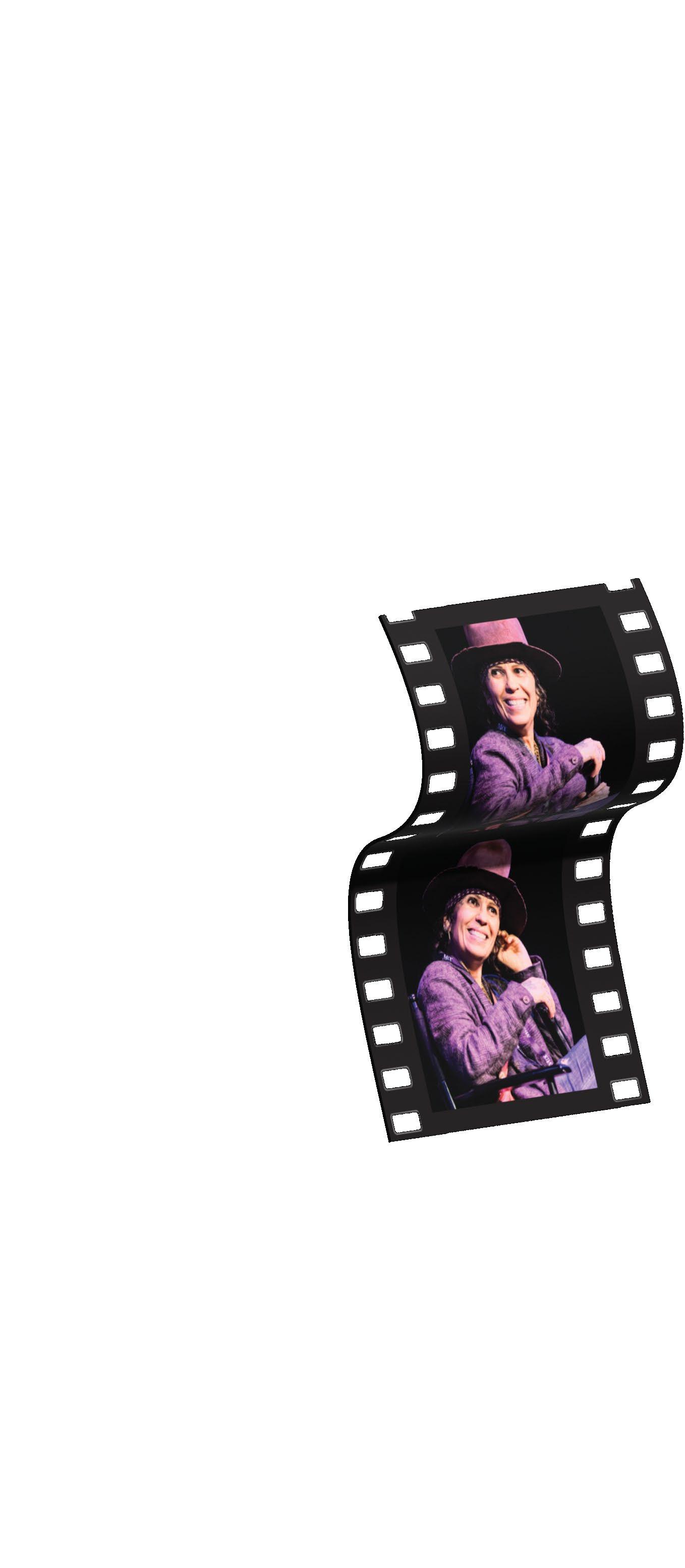
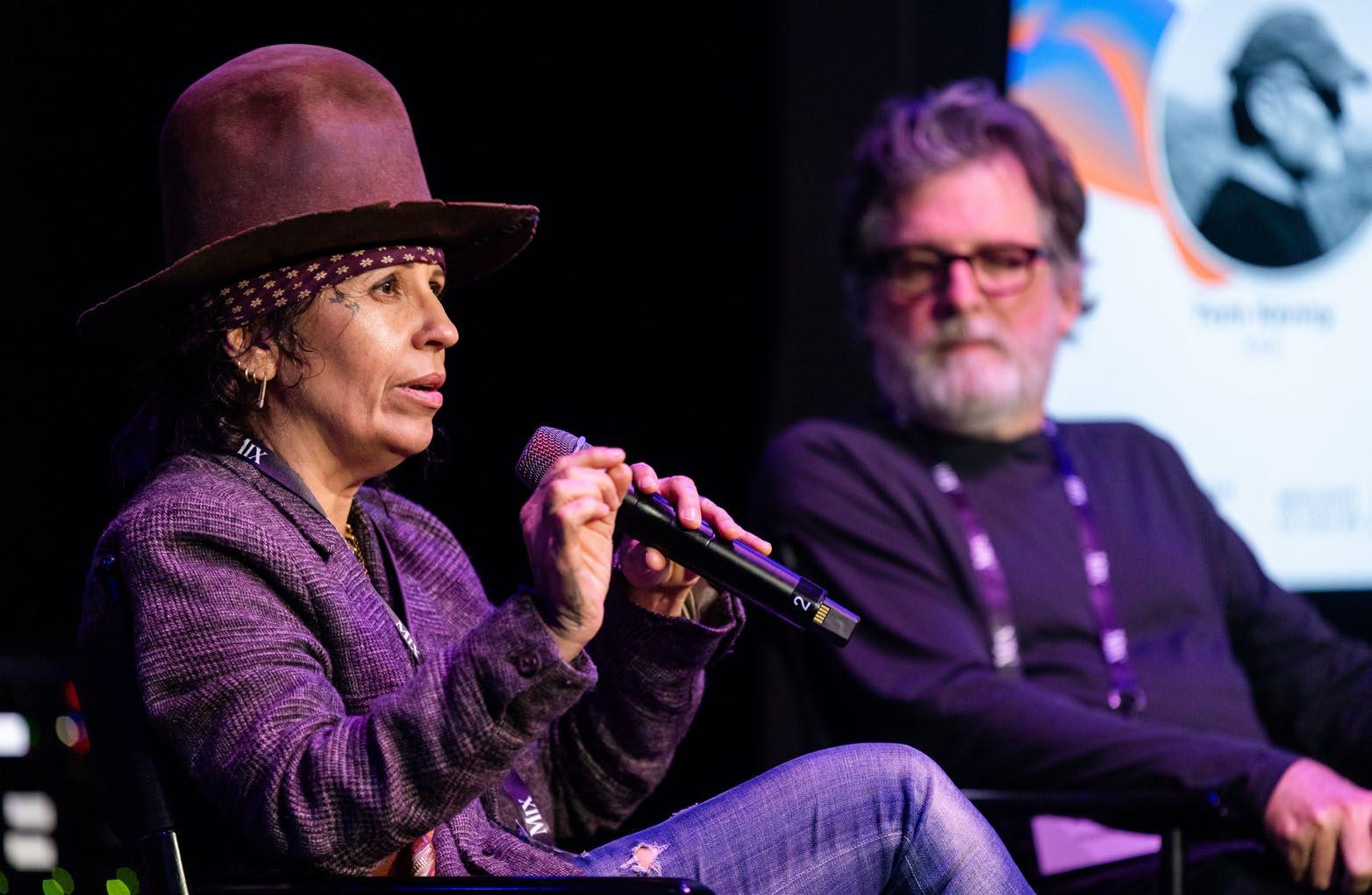
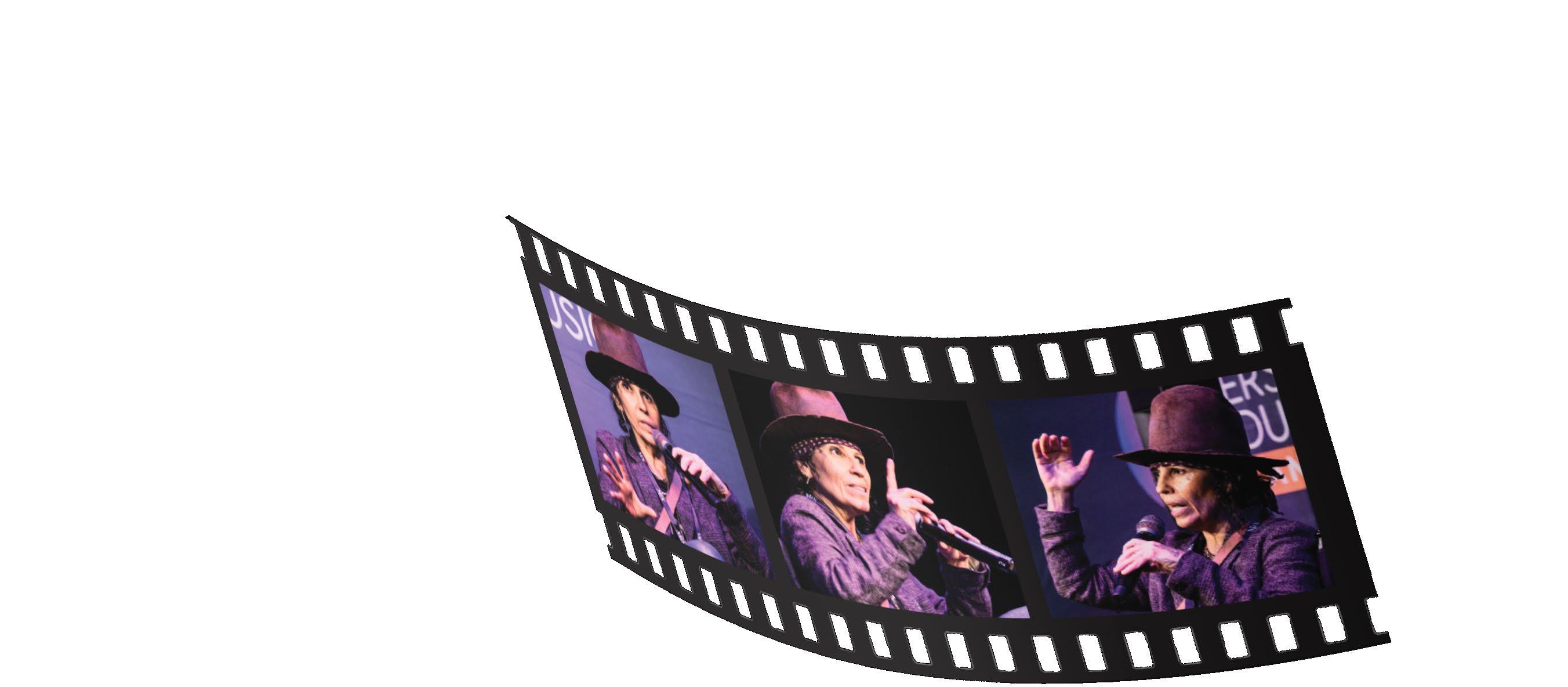
Producer/songwriter Greg Wells, left, and producer/engineer Bob Clearmountain set the perfect tone for the event by kicking it off with a special Keynote Conversation titled “Rebuilding the Mix.” Both lived in Pacific Palisades, both lost their homes and personal studios, and both spoke openly and candidly about their experiences. In a nutshell, they each shared that the work has never stopped. It’s what they do, they told the audience, and it has to be done. At the end of January, Bob spent three 18-hour days on the live streaming mix of FireAid, then a few weeks later started in on the construction of a new studio in the same building where he is temporarily living, through the alley behind Apogee headquarters. He plans to call it Mix This! FTA—short for From The Ashes. Greg, meanwhile, has set up a temporary space in Santa Barbara, moving the family and diving right in to producing the music for Wicked II.
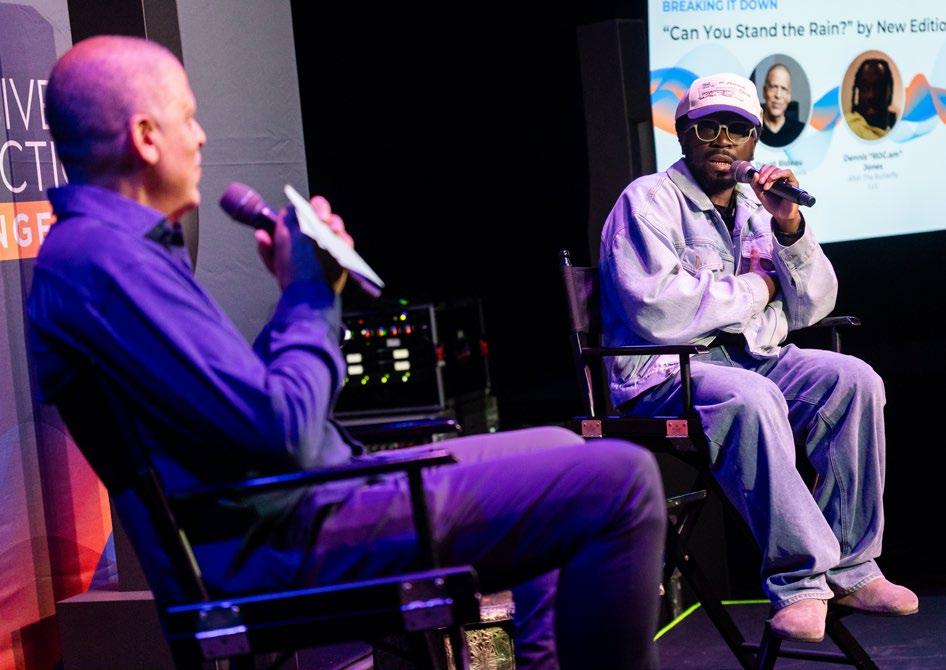
Mix engineer Dennis “ROC.am” Jones, right, spoke with moderator Dave Rideau about his work on the Atmos mixes for the full New Edition catalog, including the 1988 hit, “Can You Stand the Rain?” produced by Jimmy Jam and Terry Lewis. At one point, after Roc mentioned receiving stems, Rideau, who worked with Jam and Lewis regularly at the time, jumped in and said, “But wait, those were the dinosaur days. We didn’t make stems back then.” Roc laughed, and said, “You’re right! They were multis! Those are a lot harder to work with!” A great moment

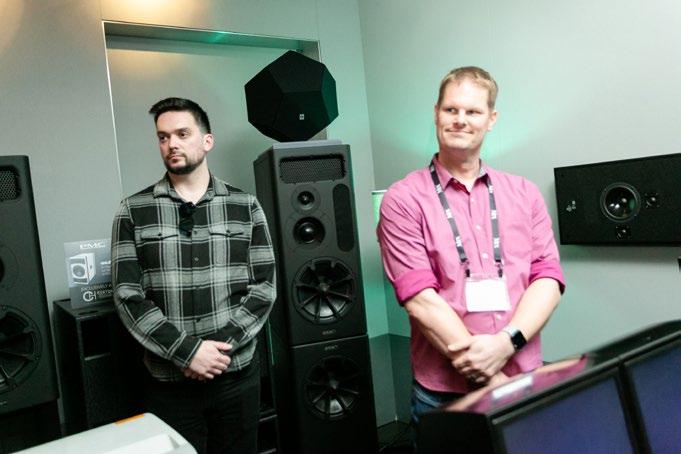
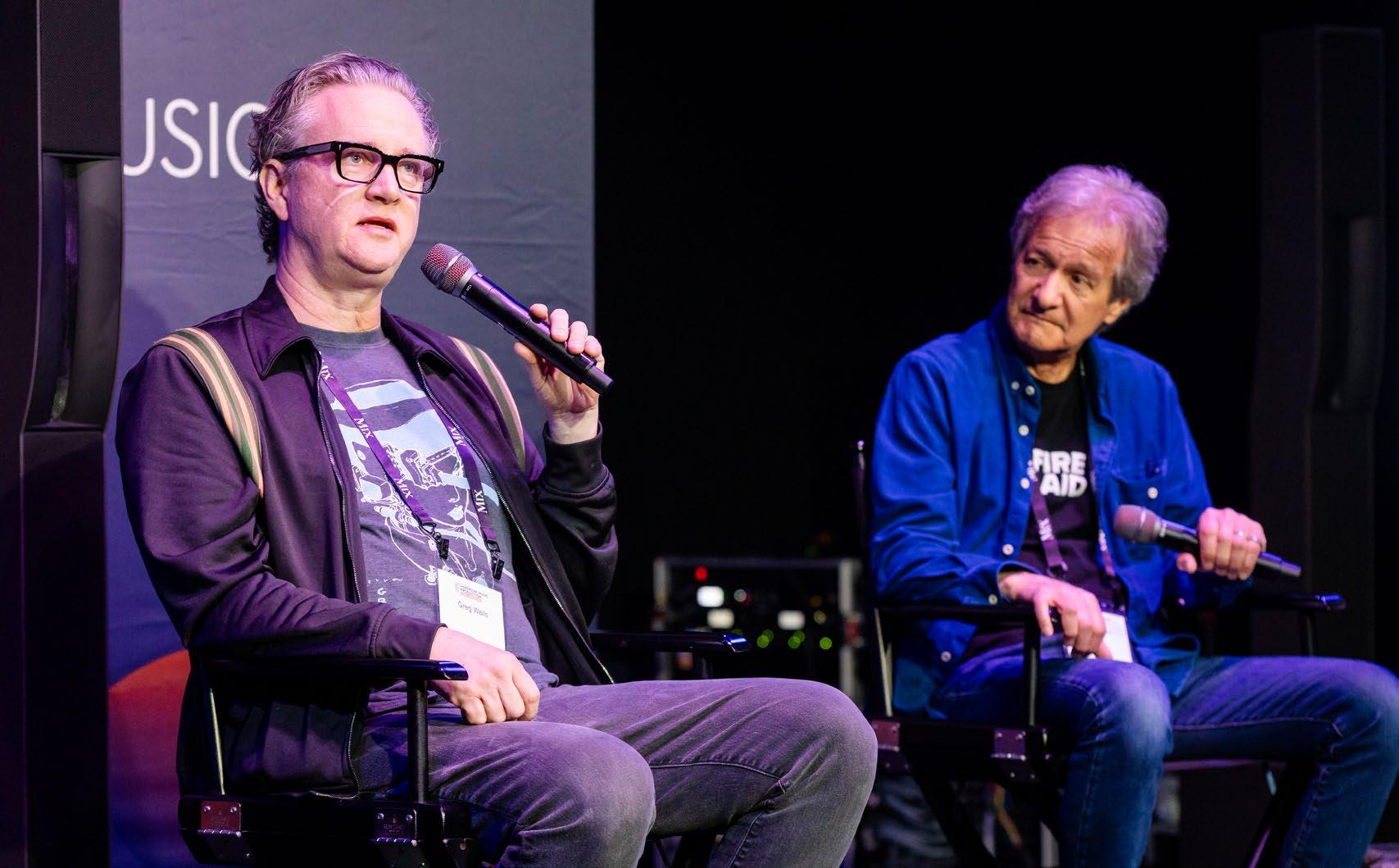

Up-and-coming mix engineer Jennifer Ortiz wowed the audience with the Atmos playback of her mix on “3:AM” by Rapsody feat. Erykah Badu, this year’s Grammy winner for Best Melodic Rap Performance. She likes parallel compression, she told the audience, and she likes big low end, noting the different ways in which immersive audio can be used creatively across a variety of genres. She also spoke eloquently about the need for more hands-on, smallgroup, techniques-based immersive mix training, noting, “YouTube can only get you so far.”
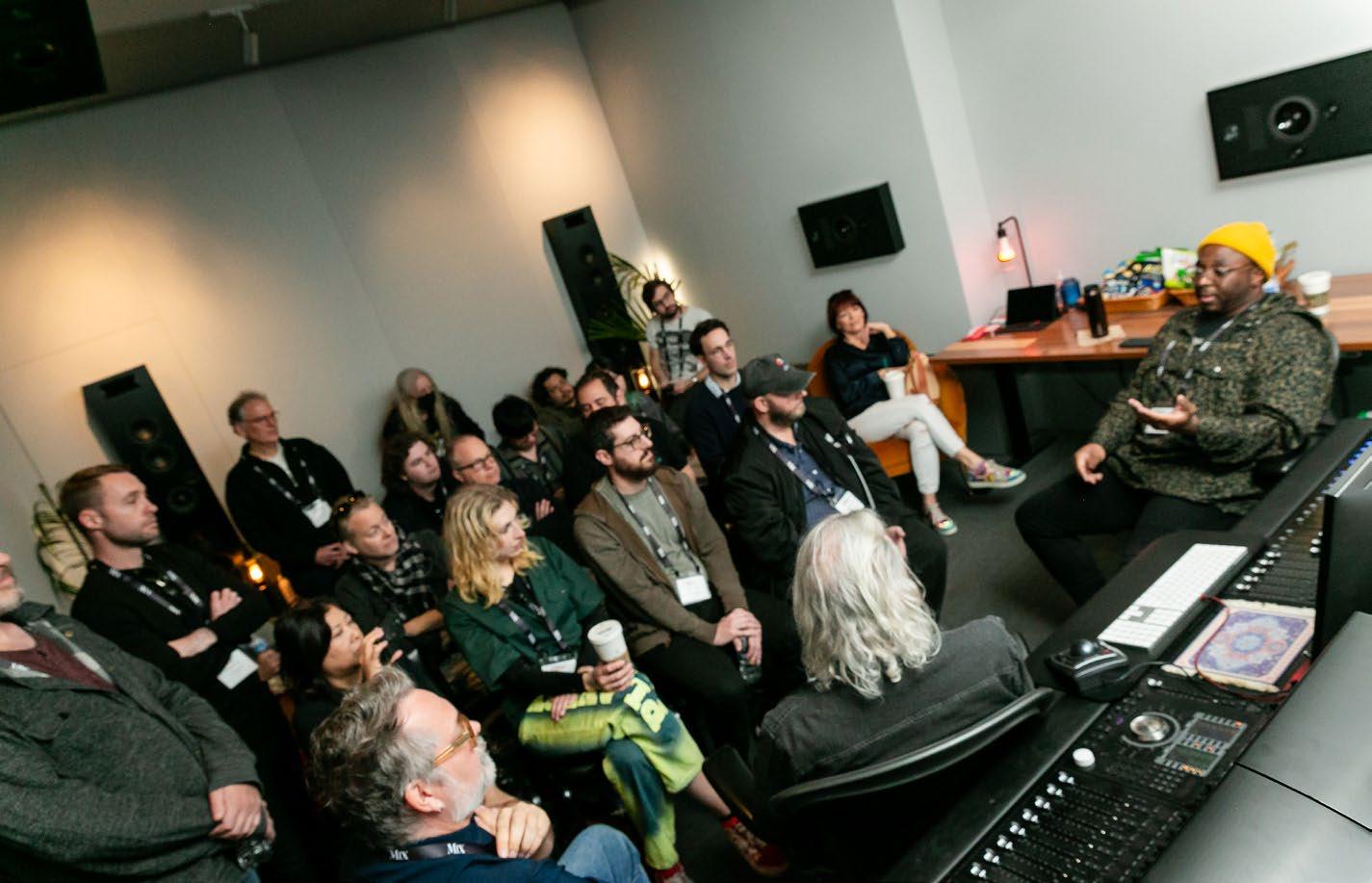
Producer/engineers Eric Schilling, right, and Herbert Waltl, center, spoke of their desire to “honor the original” and mostly stay out of the way in their work on the Atmos mix of the 2004 Ray Charles masterpiece Genius Loves Company, which received a Grammy nomination this year for Best Immersive Audio Album. It’s quite a legacy to live up to, as the original hauled in nine Grammys back in 2005, including Best Engineered, Non-Classical and the inaugural Best Surround Sound Album award, both accepted by legendary engineer Al Schmitt—whose assistant on the original mix, Steve Genewick, moderated the Mix LA session and is pictured at left.
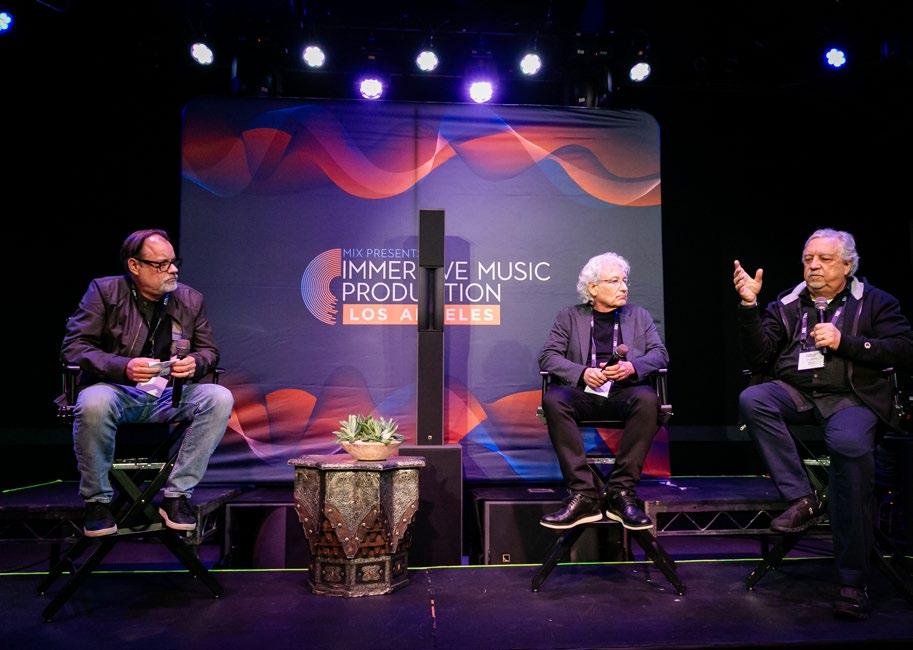
PMC and Custom House at Guitar Center sponsored The Mail Room, an 11.1.6 PMC-based Dolby Atmos mix room that has produced thousands of Atmos mixes for UMG artists over the past five years. It was SRO all day long as Maurice Patist and Davey Rieley brought in a series of A-list engineers, including J Clark, Infrasonic Mastering, playing back material by producer/artist Ryan Ulyate (back of head, sorry Ryan) in a session titled “Planning for Immersive From the Start.” Inset: From left, mix engineer Nick Rives, who calls The Mail Room his home base, and newly independent Ceri Thomas.
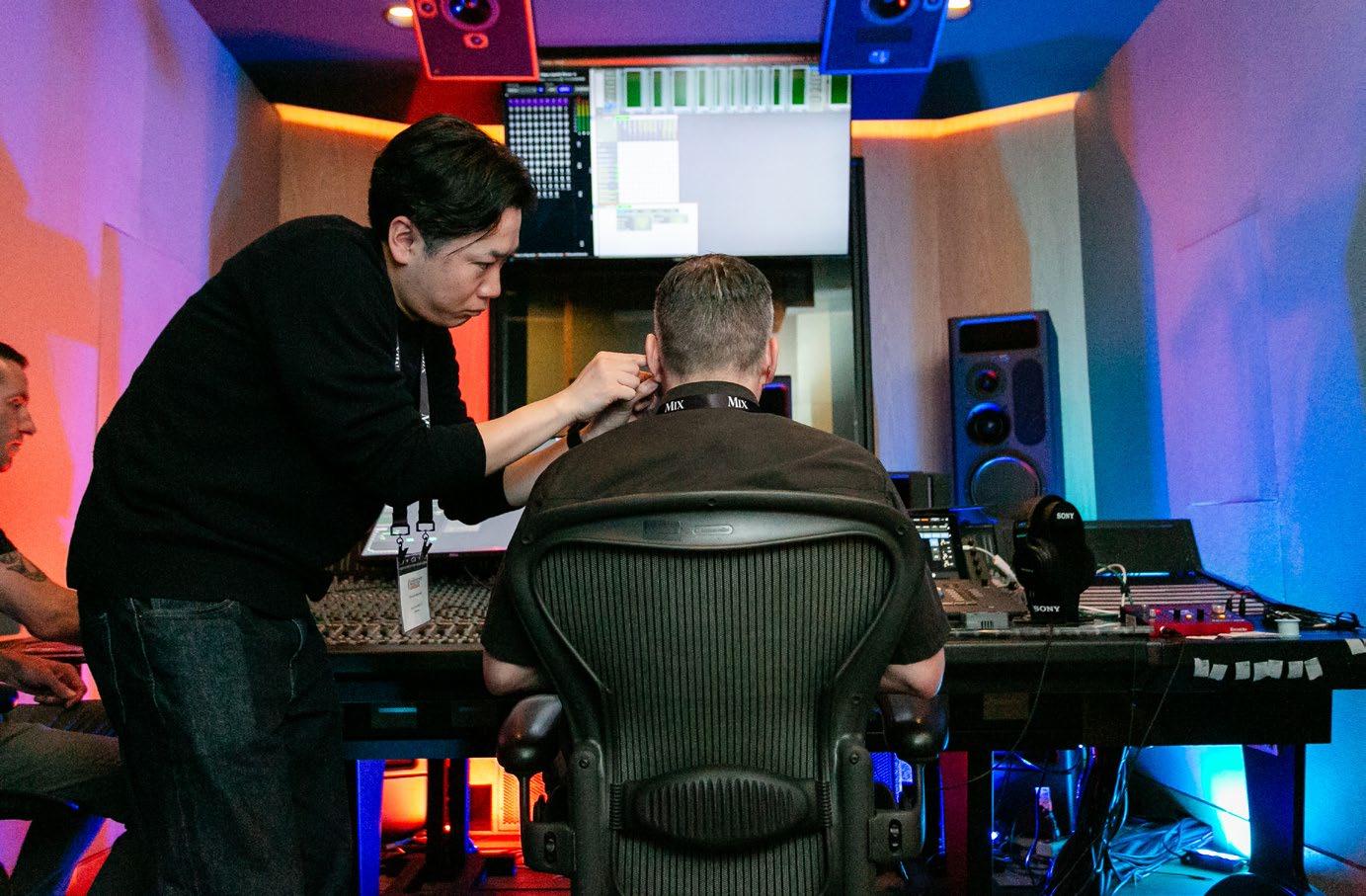
Sony, a longtime supporter of Mix events, set up in the 7.1.4 Studio 4 and offered attendees free 360VME measurement for individual hearing profiles, allowing each to walk away with the results on a USB drive, which will let them play back immersive audio through headphones as if they were sitting in Studio 4. Here, a member of the Sony team starts the 15-minute process by placing miniature mics in each ear and then shooting pink noise through each speaker channel. It is groundbreaking technology
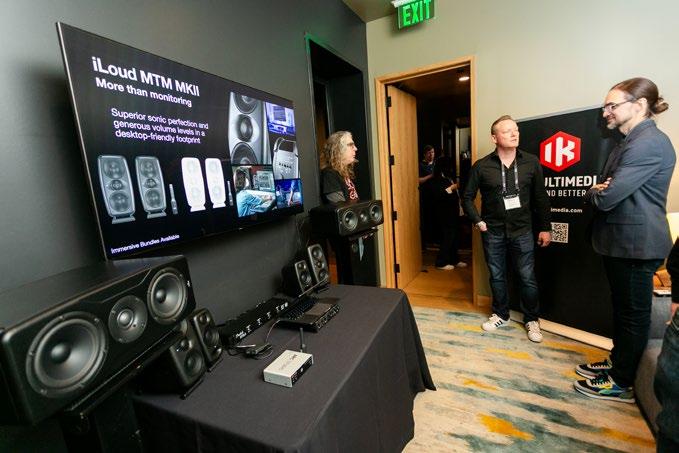
Bob Clearmountain speaks to a packed room in Studio 3, where Apogee and IK Multimedia showed their new Immersive Bundle, a joint offering of a complete, ready-made, affordable 7.1.4 or 9.1.6 setup featuring a Symphony Studio interface on the front end and 11 iLoud MTM MkII monitors for playback. All you have to do is add mic stands. For those who might want to get out of headphones but not tear into their walls and ceiling quite yet, it sure seems like a good way to get started.
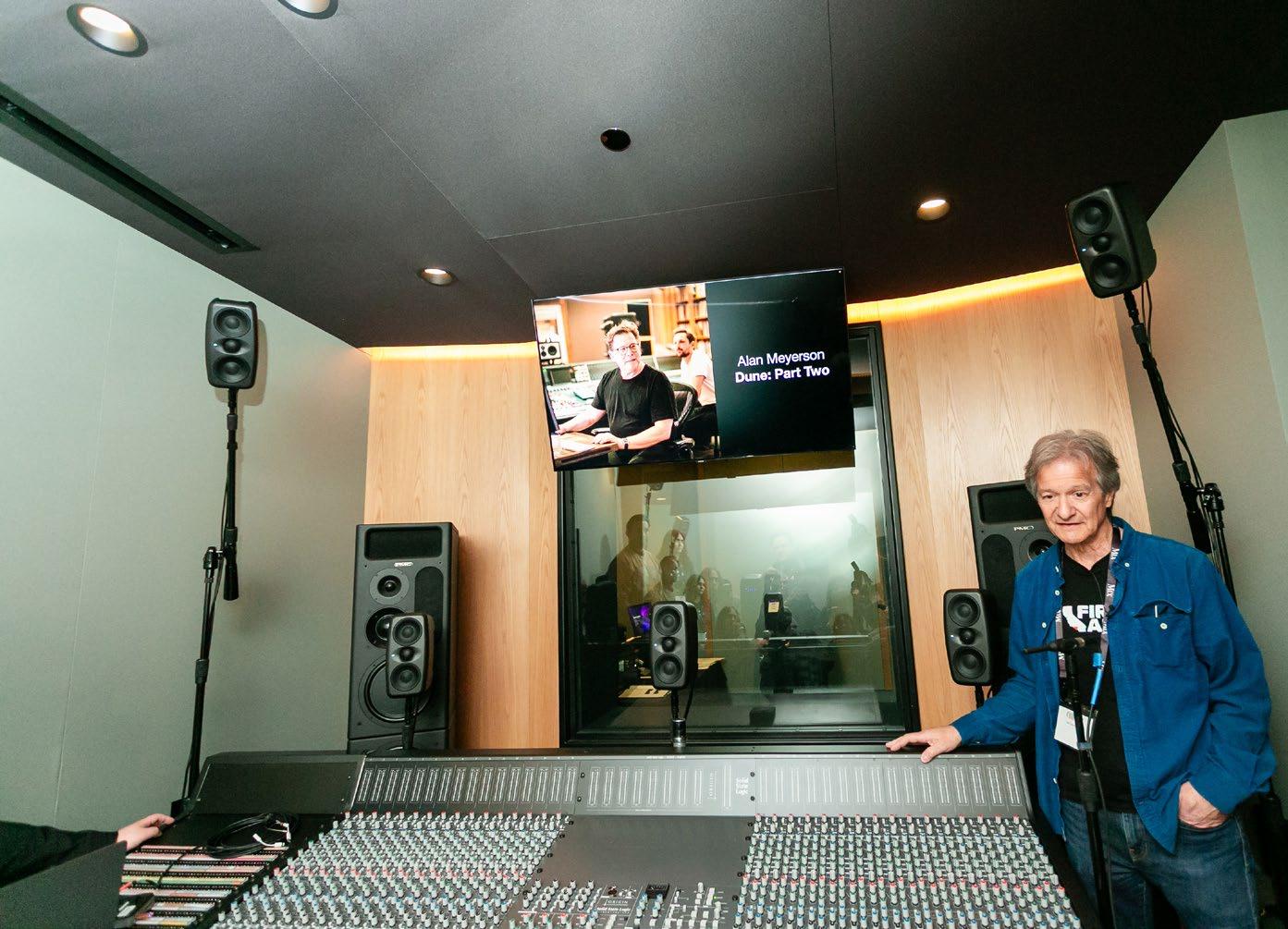
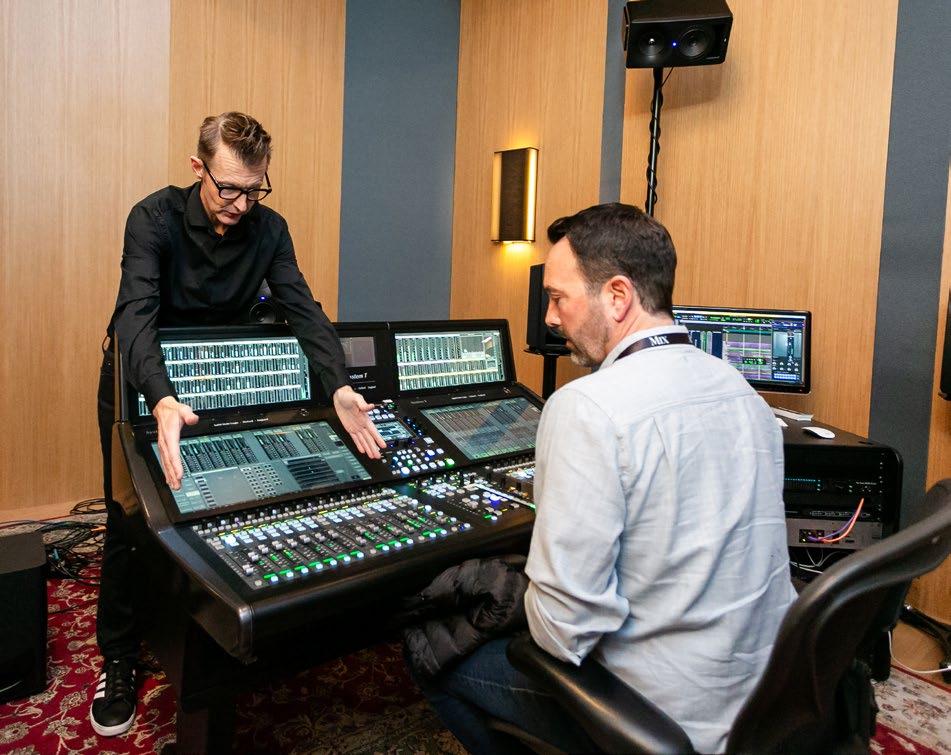
In the Studio 2 live room, SSL’s Phill Scholes takes an attendee through the unique immersive music features built into the System T500 console, with playback from a 7.1.4 rig built and tuned for the day by Kali Audio, featuring SM-5 monitors
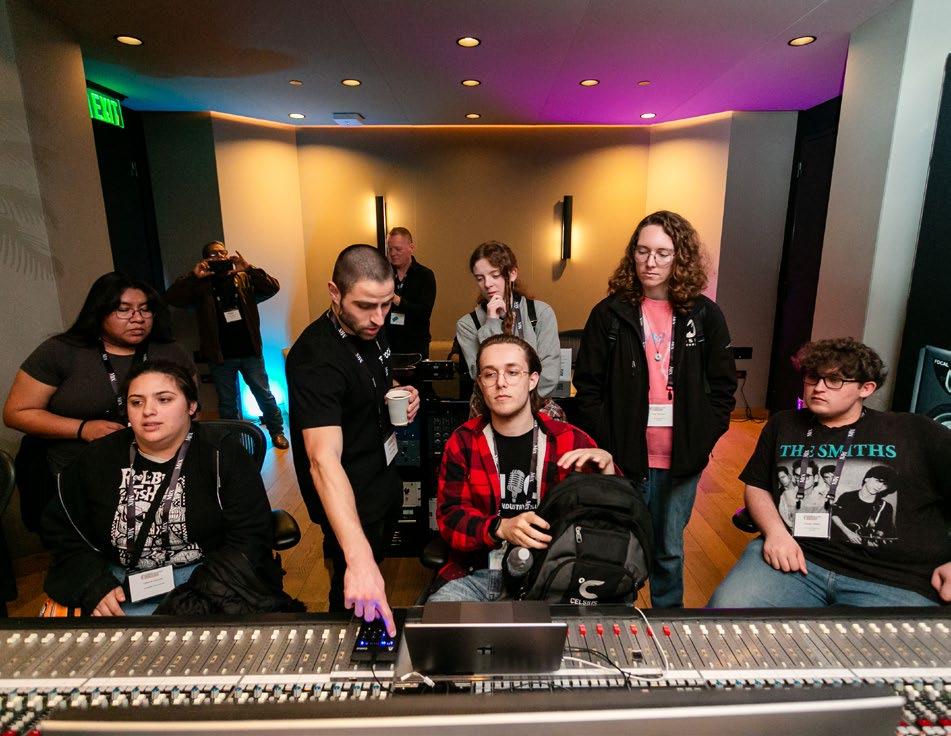
set up pairs of
Peter Grueneisen, left, of nonzero\ architecture has designed hundreds of top commercial and private studios throughout Los Angeles over the years. Here, he shows a few examples to producer/engineer Dave Way.
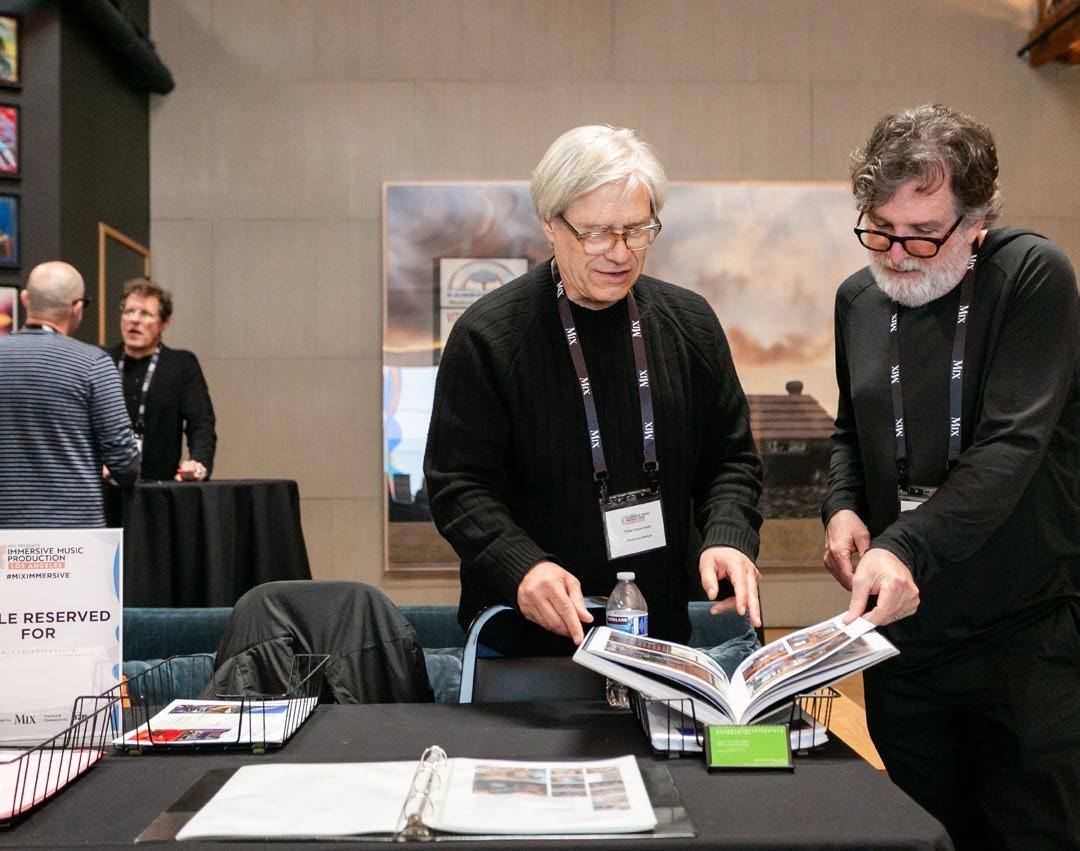
and though you
see them
from the
Barefoot Sound showcased its new Footprint03c center-channel monitors, solidifying the company’s recent moves in immersive playback, while Advanced Systems Group, which has been very active in L.A. the past two years, spotlighted its offerings in everything from sales and consulting to design-build and integration.
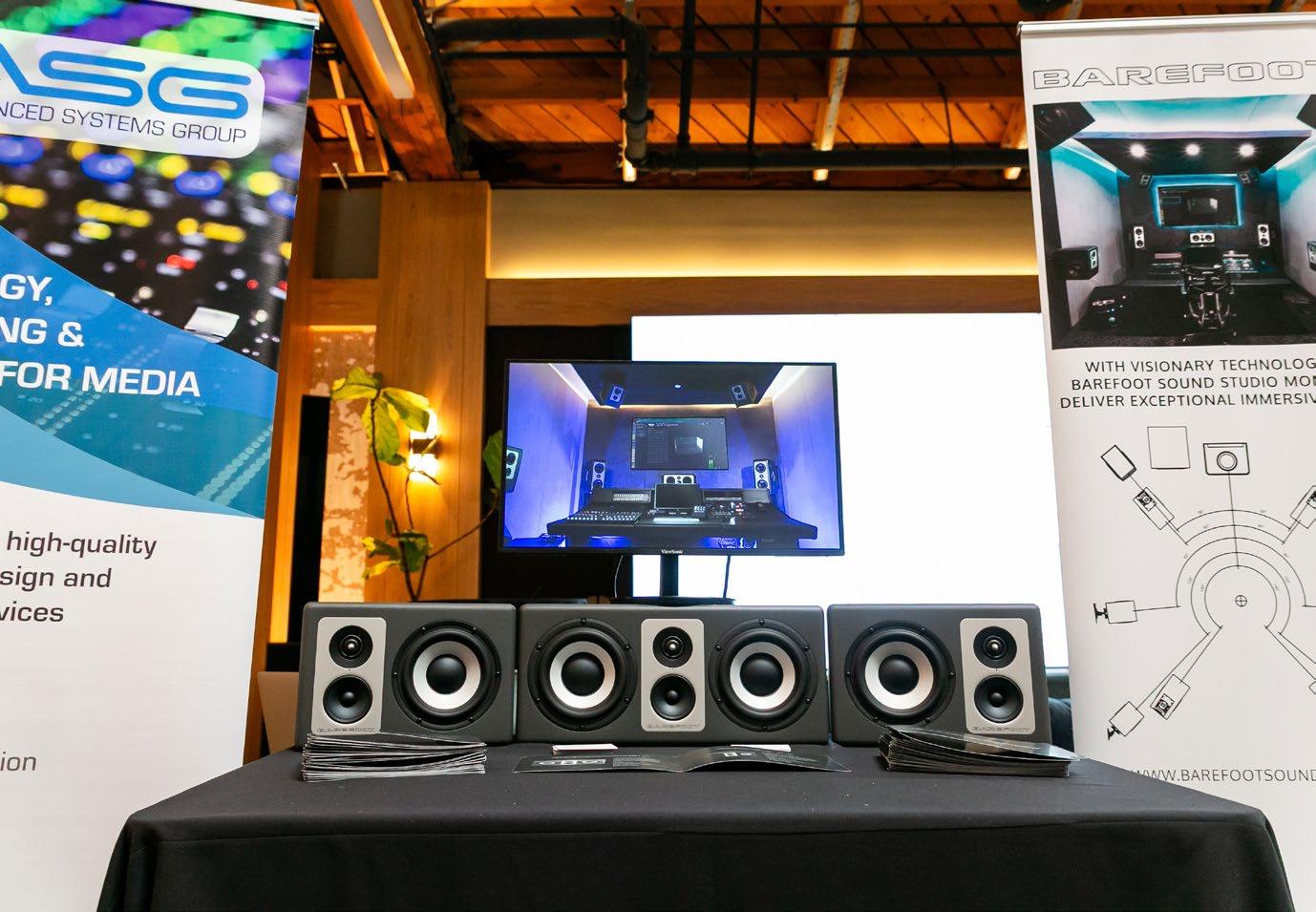
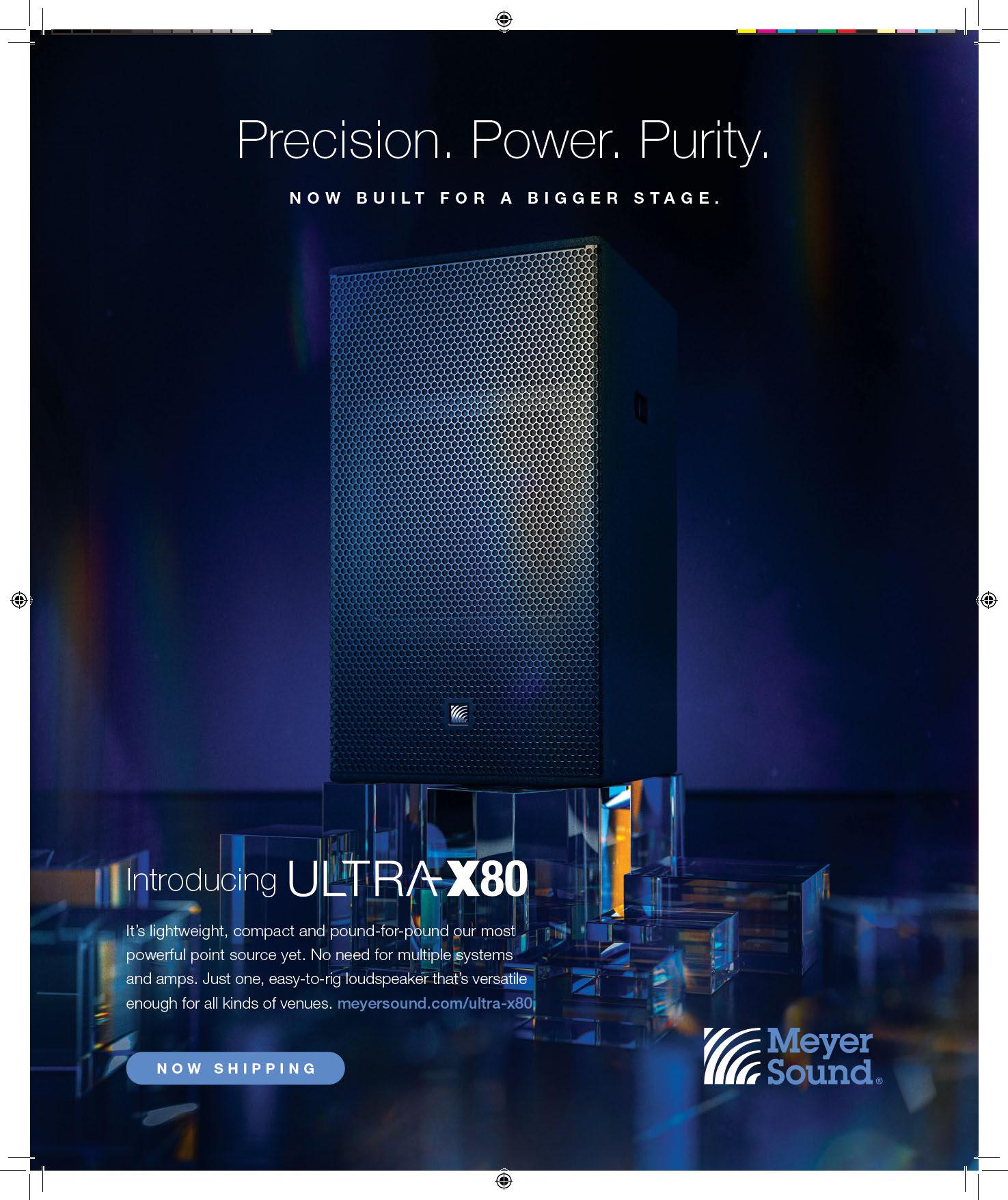

By Robyn Flans
The Speaker Wars was born while Stan Lynch was producing a solo record for Jon Christopher Davis and, at the last minute, Davis goaded him into making it a band. A friend of Lynch’s said, “While you still can and want to, you may as well.” Surprisingly, he wanted to.
Lynch left the Heartbreakers as Tom Petty’s drummer in 1994 and was fairly public about not having had a great experience. That was his last band. He has become a notable songwriter and has spent most of his time behind the glass since. Now he’s joined with Davis, Jay Michael Smith on guitar, Brian Patterson on bass, Steve Ritter on percussion, and Jay Brown on keyboards to create some kick-ass Americana rock ’n’ roll.
The self-titled album, to be released May 30 on Frontiers Music, was recorded to Pro Tools between Lynch’s Clay Hill Studio outside Gainesville, Fla., and 5M Studios in Denton, Texas, owned by Davis’ friend Mike Pisterzi. Pitsterzi co-produced the record and became the final arbiter of the songs.
Lynch fashioned Clay Hill after an Old West church with a 28-foot ceiling and a huge drum room. It houses a 1980s Trident console with a great selection of mics, including vintage Neumanns and others he accumulated through the years. “When I’d hear a good mic,” he laughs, “I’d ask the studio, ‘Any chance I could buy this one?’”
The record was pieced together during the various
stages of Covid restrictions, and Lynch wore many hats—co-producer, engineer, songwriter, drummer, background vocalist (as well as lead on “Trader South”)—and on some songs, he played multiple instruments.
“I can only wear one hat at a time,” he says, explaining that he’ll set mics before playing, but then all bets are off. “When I’m playing drums, I have a lobotomy. I just have to play, and the next day I can go back and put on my producer hat and listen.”
Lynch says that he hopes the record does well enough to shed light on what a “sweet, soulful cat” Davis is. “I went to produce him, and at the first meeting with the label, they pitched us these five shitty, generic, puppy-mill songs, and I said, ‘What are these songs?’ They said, ‘These are the five writers du jour.’ Without realizing this was verboten, I said, ‘This stuff is terrible; Jon is really good. Why would we do this?’

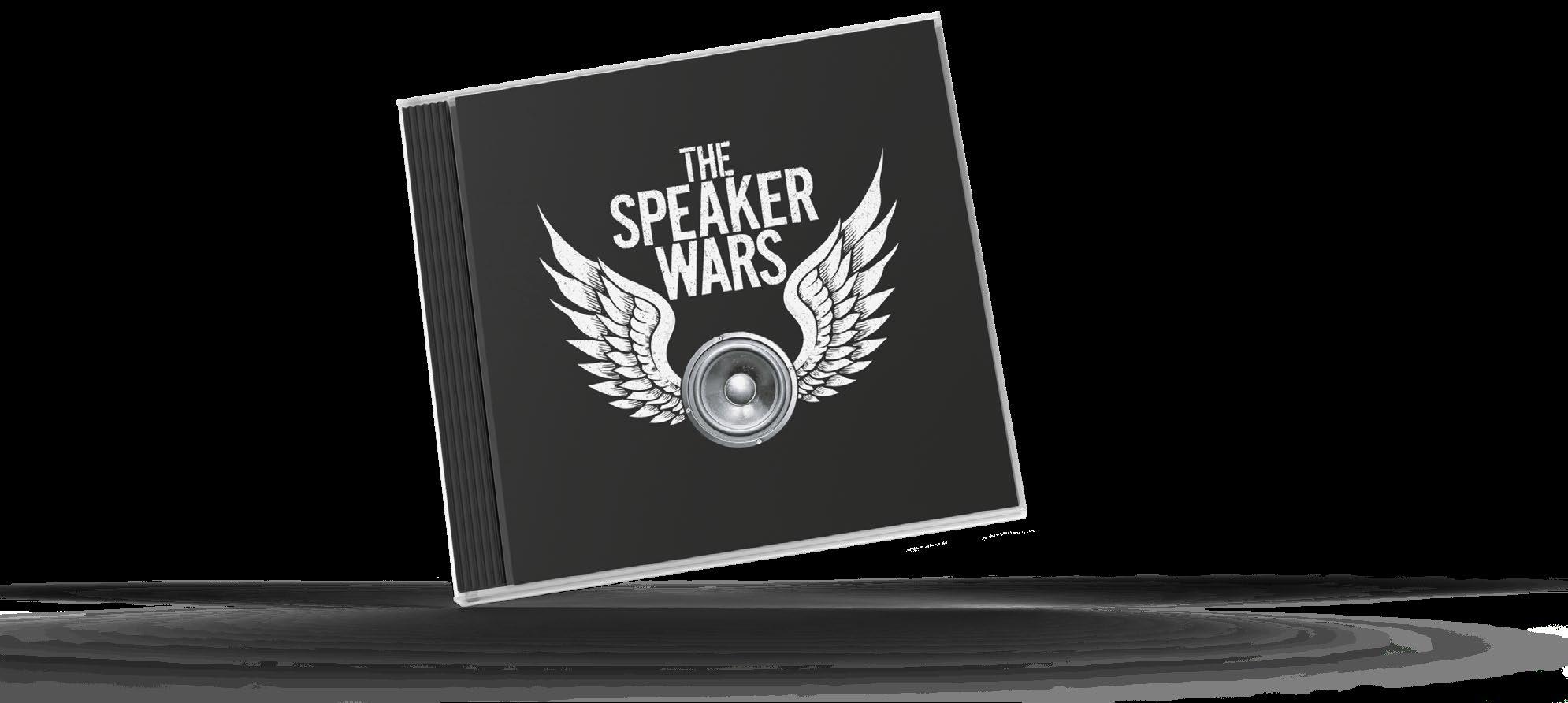
“I’m in the parking lot and Jon is running after me and I’m thinking, ‘Is this where he kicks me in the nuts and I end up in the hospital?’” he continues. “But he catches up to me and gives me a big hug and goes, ‘Thank you, man; nobody has ever stood up for me.’ I thought, ‘I don’t know this guy that well, but the fact that I could get his ass fired and all he could do is say thanks, this guy is really walking the walk!’ Then he called me the next
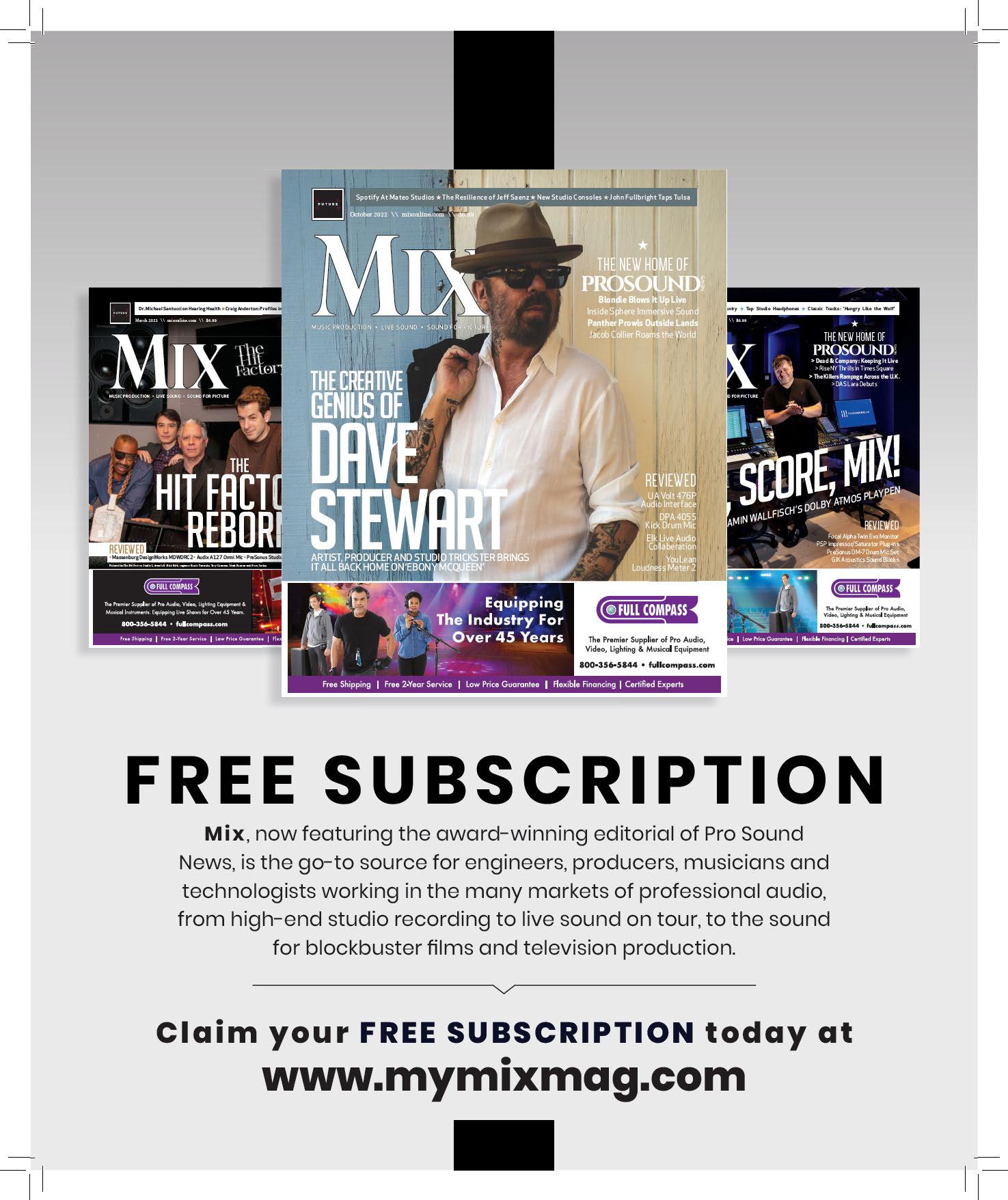
Evergreen Enterprise Experience LLC has unveiled a new room at its expansive music production and post-production campus in Burbank, Calif. The facility also announced upgrades to its Dolby Atmos dub stage.
Studio One, the flagship production room at the revitalized, historic Enterprise Studios, features a new 72-channel SSL Duality Fuse SuperAnalogue mixing console. Evergreen Studios, Enterprise’s sister complex on the campus, home to Harvey Mason Media, installed the very first Duality Fuse in the world in Studio A when that facility opened in 2021.
Enterprise’s Studio One will principally serve as a home base for songwriter and producer Freddy Wexler, but will also be available for commercial bookings. Wexler’s songs have been recorded by numerous artists, including Selena Gomez, Justin Bieber, Ariana Grande, Lil Wayne and others. Most recently, he persuaded Billy Joel to record his first new song in more than 30 years, a writing and production collaboration that included recording string overdubs through the Duality Fuse at Evergreen Studios.
“Everyone knows what an SSL sounds like and what a G Series Bus Compressor sounds like,” says Laurence Anslow, chief engineer at Evergreen Studios, who worked on the Billy Joel strings session, “but the number-one thing for me about the Duality Fuse console is the reliability. In all the time that we’ve had it, nothing has ever gone wrong with it. We haven’t had a channel fail; we haven’t had a fader go bad. It sits there and it just works.”
The new Enterprise Studio One control room is huge, according to Neil
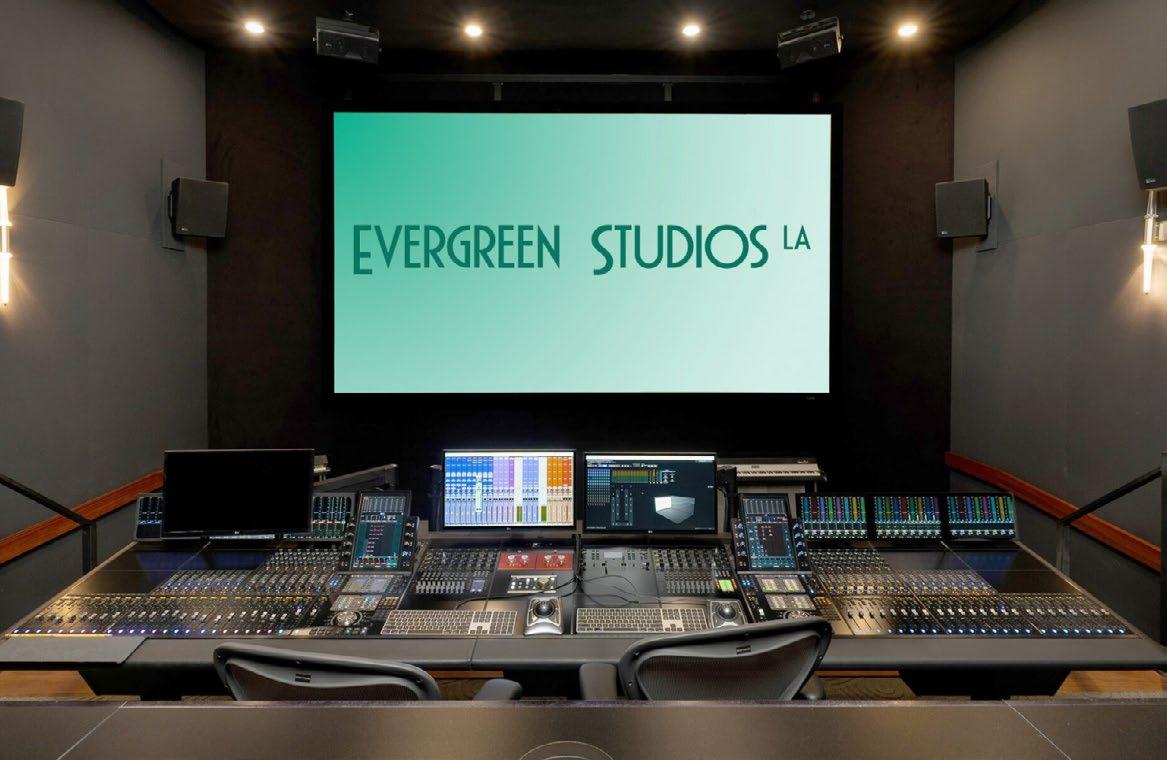
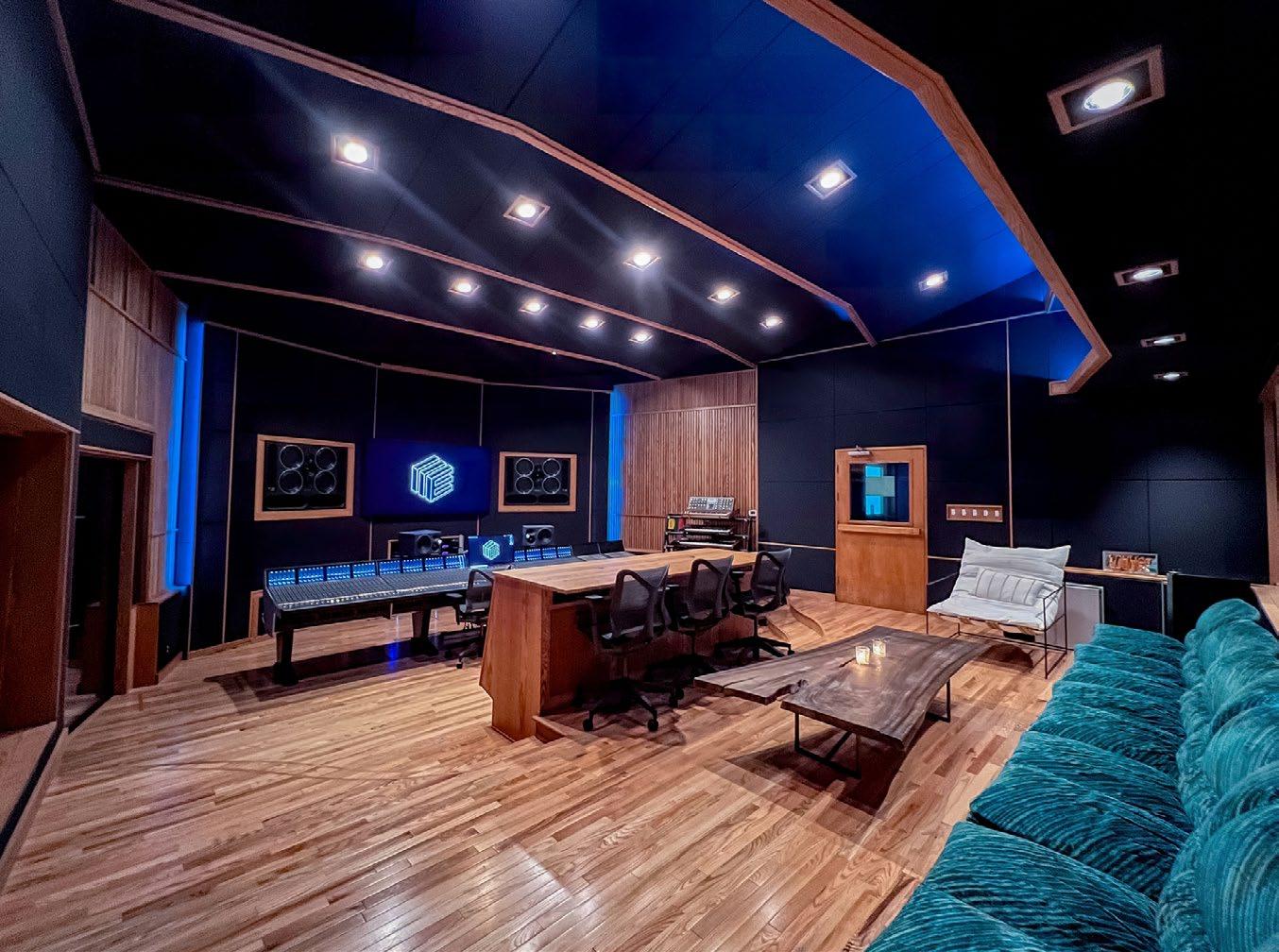
Evergreen Enterprise Experience partner. “It was previously a production room and is three or four times the size of the control room at Evergreen. The live room is spectacular, too, with really high ceilings and a great iso booth.”
Renowned acoustician George Augspurger consulted on the new Studio One build-out. “We found out that he had been involved in the original design and acoustics for both Evergreen and Enterprise,” Portnow says. “He gave us a blueprint for the room design work that he thought we should do, which we followed.” Augspurger also consulted on Evergreen Studios’ acoustic design.
The Evergreen Studios complex, in addition to Studio A and the Evergreen Stage—a 3,000-square-foot scoring stage/live room with three iso booths—also houses a Dolby Atmos-certified TV and film dub stage, editing suites/post-production rooms, and additional studios and writing rooms, as well as conference rooms, kitchens and lounges. There is a large outdoor courtyard and parking space for 50-plus vehicles.
Evergreen’s Dolby Atmos dub stage recently underwent an upgrade when Bay Area-based systems integrator and equipment provider Advanced Systems Group, a Dolby-certified partner, converted the stage’s existing single-operator Avid S6 console into a dual-operator system to handle more complex workflows. The ASG team also redesigned and rewired the machine room to integrate both new and existing equipment. The expanded room can now support any format from stereo to Dolby Atmos. Gadget Hopkins of ASG explains the upgrade: “Audio standards continue to evolve, and by scaling Evergreen Studio’s dubbing stage to a dual-operator setup, its facility can now accommodate larger, more complex productions. Clients and collaborators can work together during the process. Engineers can work simultaneously on the mix for different aspects like dialog, sound effects and music. It meets all the requirements set by Dolby for Atmos mixing, providing confidence to clients that the studio can deliver Atmos content to industrydeliverable standards.”
Over the past 40 years, Evergreen Studios has hosted some of the biggest performers in musical history and mixed the music for film and television projects including Back to the Future, When Harry Met Sally, The Blues Brothers, Star Trek: The Motion Picture, The Simpsons Movie, Friends and many others. Under the leadership of Harvey Mason, Jr., a record producer, songwriter and president/CEO of the Recording Academy, it has been revitalized as a music, creativity and entertainment hub. ■
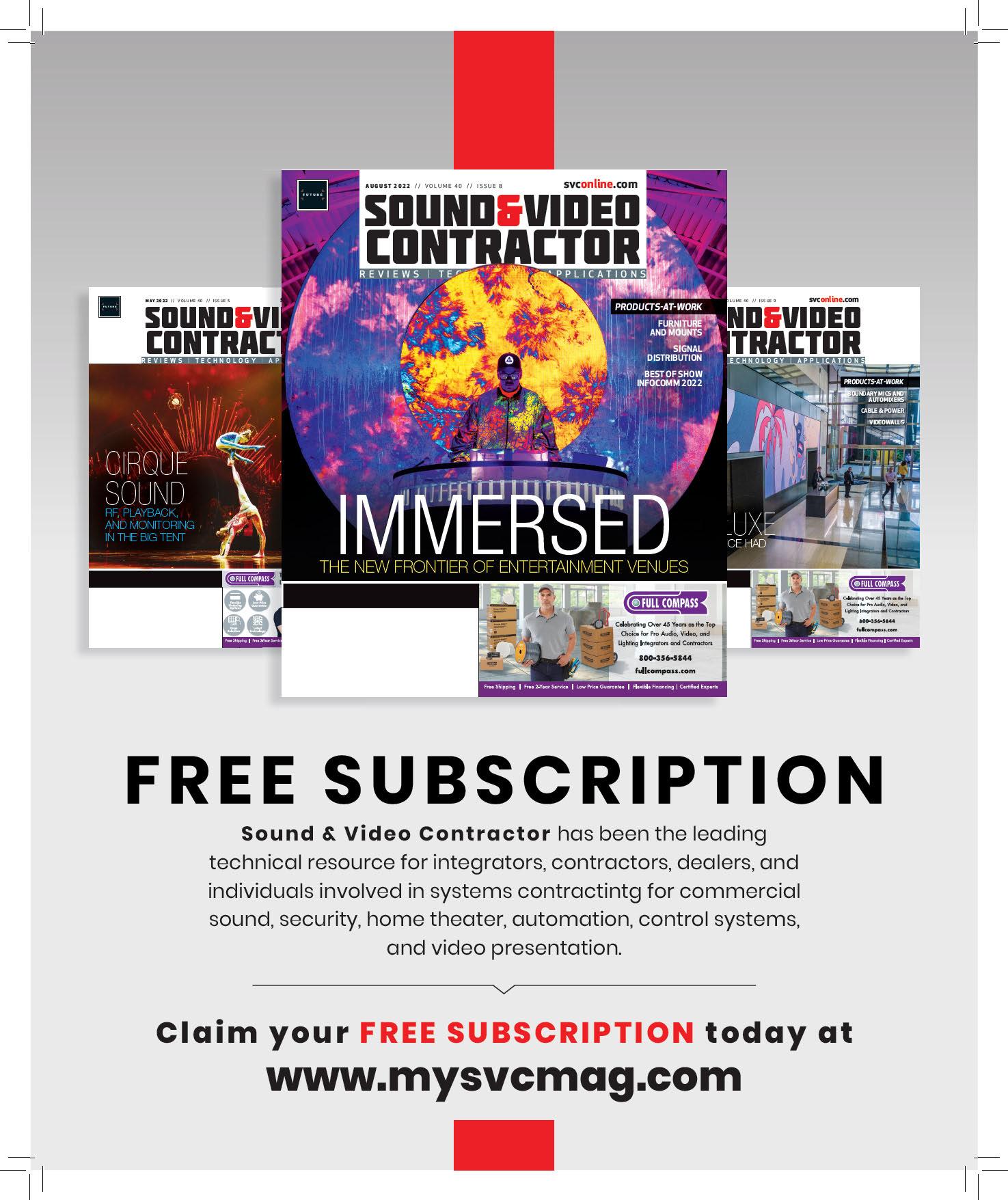
By Robyn Flans
There was life before ‘Luka’ and there was life after ‘Luka,’” engineer/producer Steve Addabbo says of the impact the Suzanne Vega 1987 hit had on the lives of those involved.
The song about child abuse took on a life of its own; aside from the topic of war, “Luka” was definitely a forerunner in musical social consciousness. Vega never thought it would be a single, but the record company released the song as the second offering from the album Solitude Standing in May 1987 and it rose to Number 3 on Billboard’s Top 100, yielding major attention and three 1988 Grammy nominations for the artist and her team.
Even though the song flowed quickly out of Vega, it was conceived toward the end of the recording of her debut, self-titled album, so the entire production process ended up taking nearly two years. There was an initial recording of the song that included session drummer Andy Newmark. That was followed by a run of live shows with a band—Marc Shulman, guitar; Anton Sanko, keyboards; Michael Visceglia, bass; Stephen Ferrera, drums—that established the rocking version.
Following the tour, everyone, including producer Lenny Kaye, convened at Bearsville Studios in upstate New York for the album sessions that produced “Luka.” They spent 10 days woodshedding before tracking, and then five minutes before recording “Luka,” Addabbo recalls, he nervously put headphones on Ferrera, played him the Andy Newmark version, and said, “Listen to this drum part.”
They cut basics live (aided by Rod O’Brien) with Vega in a separate booth singing and playing guitar. Shulman’s guitar part was overdubbed later. There was a Studer A800 2-inch tape machine with no noise reduction,

Addabbo notes, as well as a Neve board “with a lot of history. The preamps sounded great, and we added a compressor here and there. I wasn’t gear-centric at that point.”
Vega’s final vocal was recorded at RPM Studios back in New York City, where Addabbo discovered that a Sanken CU41 was a match for her voice. “Up in Bearsville, we probably used some tube mic and it probably sounded great,” the producer says. “We recorded the original ‘Tom’s Diner’ up in Bearsville, and it’s hysterical because we were in this huge barn of a studio, the size of a football field, and we had to record the ‘Tom’s Diner’ a cappella vocal; that was probably a 47, but the Sanken CU41 just captured an edge on her voice. We probably did her guitar part over again at RPM, too and we did Jon Gordon’s guitar solo at the end.”
Addabbo also brought Shawn Colvin—whom he had known for a while and would later be involved with her exposure and subsequent record
deal—into RPM to sing backgrounds on “Luka.” He says that he “probably used a U47 through a UA 1176” on Colvin’s backgrounds. “I had this idea of a part echoing what Suzanne was singing, like a thought inside Luka’s head, and also a singlenote ‘aah’ on the solos—pretty subliminal,” he explains. Colvin would end up joining Vega on tour following the album’s release.
Divine intervention also occurred at RPM in the final stages, when the song’s identifying synthesizer opening—a hook played by Anton Sanko throughout the song—came out of one of those “happy accidents” late in the production process. Originally, the track began with Vega on acoustic guitar before the band joined in, but one day, as they were working on the rough mixes and getting ready to hand them over to mix engineer Shelly Yakus, the automation was going and the synth part just came in.
“Lenny and I looked at each other and went, ‘Oh, my God, that’s the beginning of the song!’ Addabbo says. “There are those three synthesizer
notes and then the band just kicks in. It was such an exciting moment. You know what song is coming in three seconds.”
Addabbo was excited to work with Yakus on the mix. “Before I was working with Suzanne, for five years, I had teched at Sterling Sound, so I was there when they brought the first Damn the Torpedoes tape in, and Shelly was there mastering with Greg Calbi. I had never heard anything sound so good, except maybe when Greg Ladanyi brought ‘Africa’ and ‘Rosanna’ in to master.”
Following the work at RPM, Addabbo flew out to Los Angeles with the music whittled down to four reels of multitrack. When he arrived at A&M Studios, he recalls, Marc DeSisto, the assistant at the time, said, “Where’s the rest of it?” Once they sat down to mix, Addabbo says, Yakus was very generous in including him, having the producer sit beside him at the board throughout the process.
“I mixed Suzanne’s first record, which was okay, but I wasn’t a master mixer at that point; I didn’t know all the tricks,” Addabbo admits freely. “So working with Shelly, who had been through everything, was like going to the Harvard University of Mixing. First of all, A&M Studios was phenomenal. Studio B had an SSL E Series at that point. I had zero experience on SSLs back then; I had grown up on MCIs and Neves. They also had a small warehouse of outboard gear, and you could pick from 10 Pultecs for the lead vocal, and, gee, which Fairlight do you want to use?”
Addabbo says the level of detail and choice of outboard gear was phenomenal and he has a distinct memory of seeing Herb Alpert sitting in back of the studio, taking in a mix of one of the other tracks and commenting on how beautiful it was.
“The thing is, Shelly took the time. We spent an entire three days on ‘Luka.’ I wouldn’t have had the balls to spend that much time on a mix,” he says, “but we had a lot to deal with because we had Suzanne’s voice, which is not the most powerful. It’s beautiful, but it’s not powerful, and we had all these parts and we had to make it competitive for the radio.”
As he recalls, the vocal chain was straight off the Studer, probably into a (handpicked) Pultec EQP-1A, into a Fairchild 670 compressor, with a bit of the SSL channel compressor/de-essing on it.
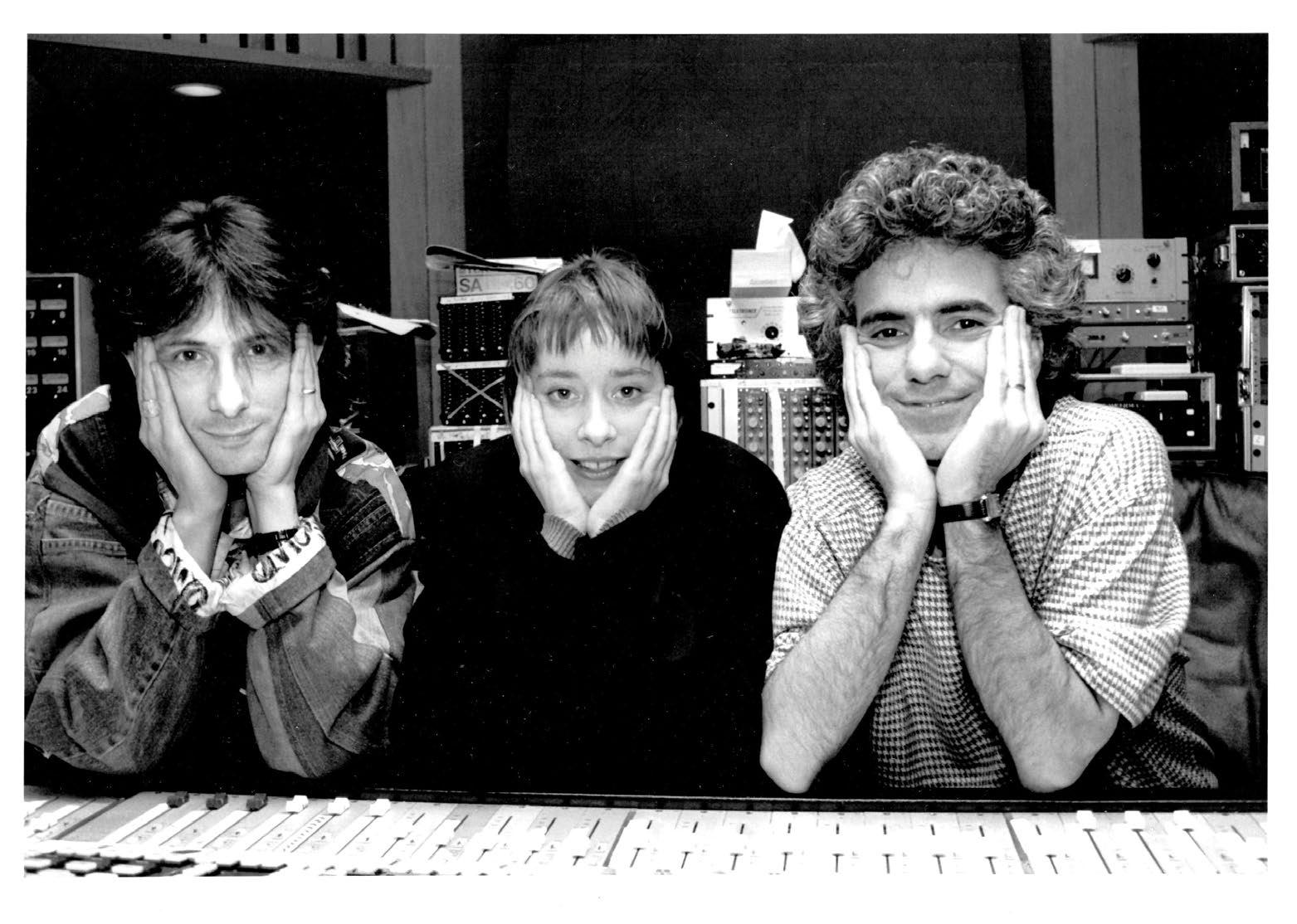
“With that vocal and that band, we were trying to get a pop impact while keeping her vocal above everything,” says Addabbo. “It took time, a lot of finessing, a lot of riding and getting syllables up that were getting lost, and at the same time not making it too loud—not any different than what I do today,” says Addabbo, who today works out of Shelter Island Sound in New York. “It’s always the same challenge of getting the vocal to sit just right. We spent a lot of time on that—not making it too bright and not making it too loud. No major secrets—it was just time, and we took the time to really get every syllable out there.”
Addabbo mentions that Yakus was a fan of the small Neve console compressors (using a a 2262, supposedly very similar to a 2264) on the stereo bus, and he remembers that Yakus liked the bass
going through a Rockman. Addabbo also recalls Vega’s comment after playing her the mix for the first time was “Do the drums have to be that loud?” So, they dialed them back just a little.
“Shelly was a powerhouse in getting the vocals to sit on top of all of this and not be too loud but be a part of it, and manipulating it with the outboard gear,” Addabbo praises. “He was very inclusive and really tried to please me and honor the production.”
It was the production that helped present a potentially uncomfortable subject matter in a way that could open a conversation; it didn’t hit the listener over the head. “What’s so great about that song and why Suzanne is such a brilliant writer is that you don’t know what it’s about initially,” Addabbo says. “It doesn’t sink in until about the middle of the second verse. Shelly didn’t know what it was about and I didn’t say anything, and all of a sudden, he was sitting there and he had been working on it for about a day. He looked at me and said, ‘I just got it.’ It was that reaction that made it
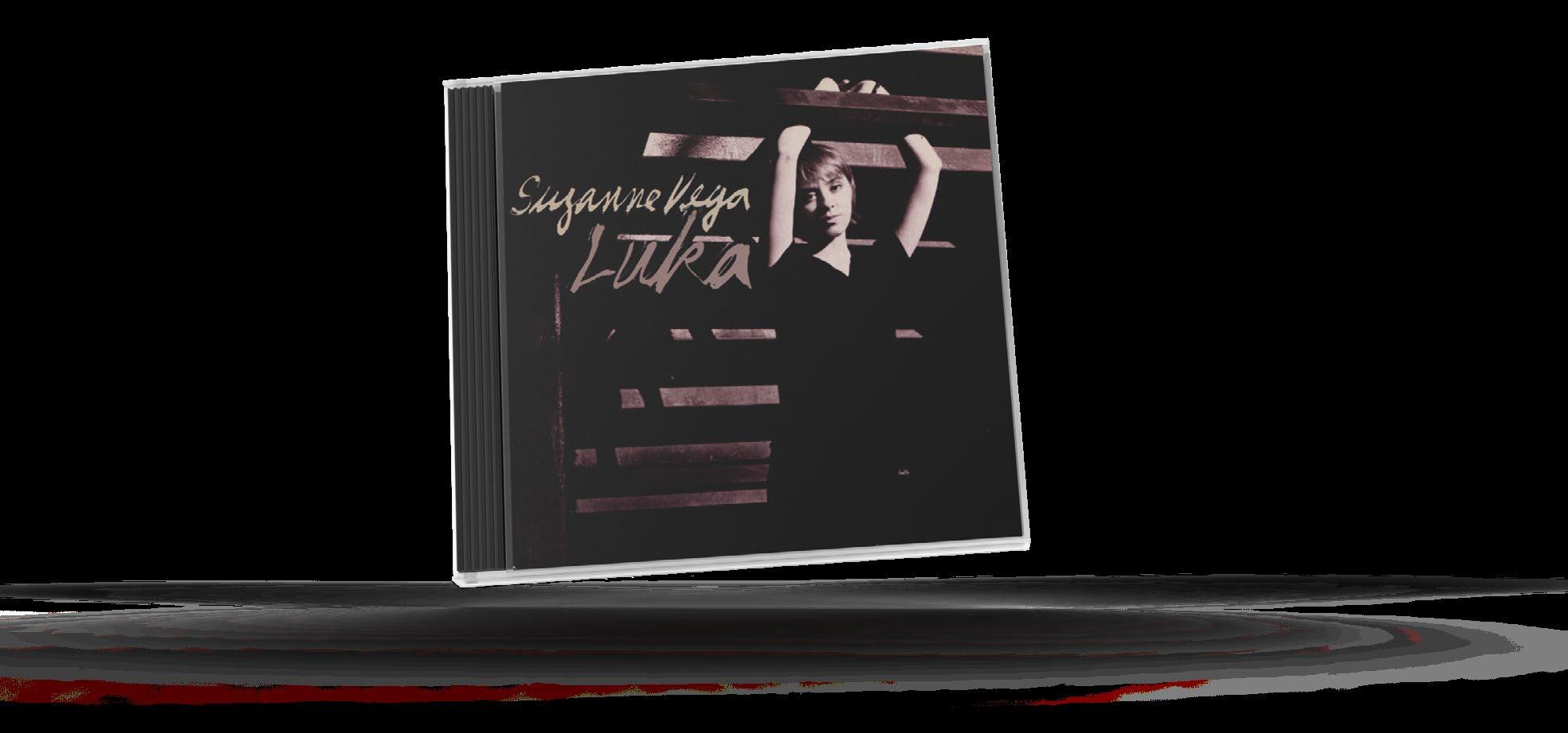
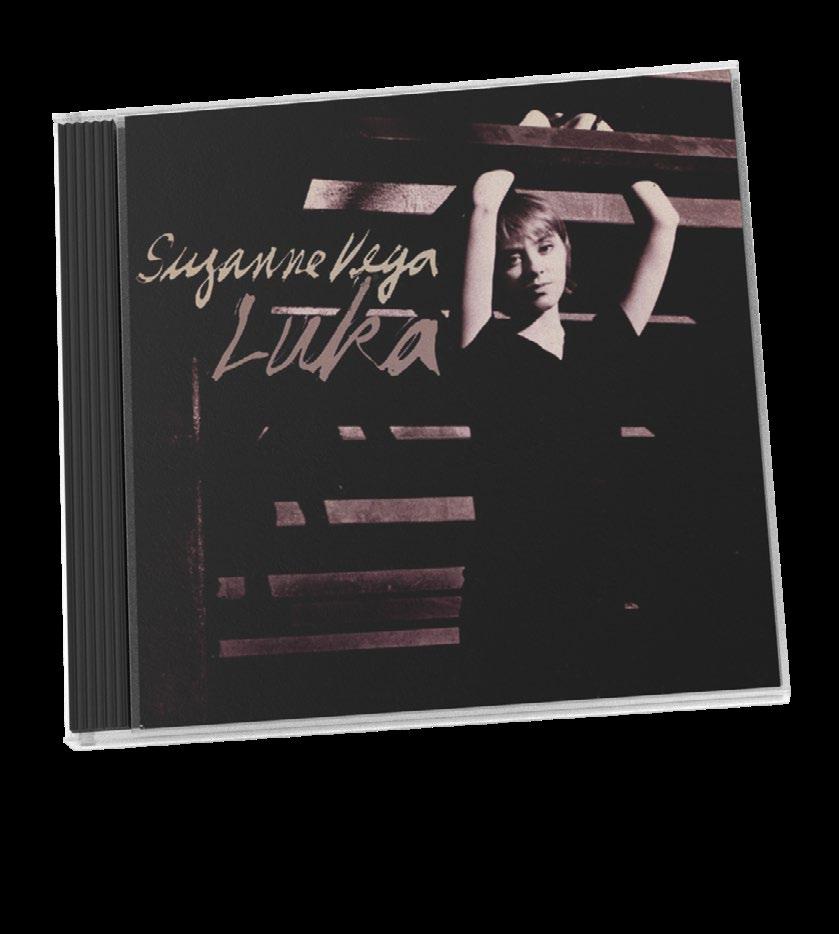
Addabbo says every time he listens to the song, it’s still very emotional for him: “When I listen to what we did, what I hear is all of us trying to get to the next level. Suzanne is singing her heart out, everyone is playing great, Shelly mixed the hell out of the thing and put all the pieces together, like there was some master plan.
PRESENTED BY

By Clive Young
Ideally, theater takes us away from our surroundings, transporting us far from our seats to other places—so long as those places fit on a stage. However, Redwood, a new Broadway musical, takes audiences to a space that can’t fit in any playhouse, hundreds of feet above the ground in the canopy of the show’s namesake trees. Creating a multi-sensory experience that envelops audiences and brings them closer to the sky, the show cleverly makes use of integrated staging, lighting and video, all
bolstered by an immersive soundscape created by sound designer Jonathan Deans.
Staged at Broadway’s Nederlander Theatre, the show stars Tony Award-winner Idina Menzel as Jesse, a New Yorker recovering from a horrible tragedy. Impetuously driving cross-country to Northern California, she soon meets a pair of scientists…and a tree. Before long, they suit up in rappelling equipment and climb among the redwoods, where Jesse’s emotional journey continues.
Throughout the show, Deans’ sound design, heard through audio equipment provided by PRG, evokes the characters’ surroundings, whether it’s the familiar jostle of New York City just outside the theater itself or the undulating serenity of a forest 3,000 miles away. However, the soundscape also underscores Jesse’s psychological state at any given moment, immersing the audience not only in the peacefulness of the redwoods, but also the emotional thunderstorm raging within the character as well.
“This production needs a multichannel, immersive system because of the kind of music and the type of visual impacts,” said Deans. “The sound has to ‘belong’ to what you’re seeing. The thing about sound is that if you’re doing something badly and it doesn’t belong at all, then it becomes noticeable and that’s a problem. The more it belongs, the less it’s noticed—so I’m very aware of the audience not being aware of it.”
As a result, the audio is enveloping, but not immersive in a showy way, as Deans opted to make the sound and even the music feel organic to the story’s surroundings. “I want to create the feeling that you’re in it,” he explained. “It’s not coming at you; you’re in the middle of it. The orchestra feels like a blanket of sound that comes around you and keeps you warm, so it’s a cozy feeling to go with what you’re seeing.”
Most of the story takes place among the redwoods, so Deans duly went to Northern California to capture binaural recordings of the forest. “I went to record ‘nothing’—well, what would be considered nothing, but actually it’s a lot,” he laughed. “I had to find somewhere where people were not—which took a long time because people are always milling around. You need an open space where you can just feel and hear the air. The recording on its own has movement to it, purely as a factor of where the microphones were placed. I didn’t add to the sound, but I did pull the sound apart in order to make that recording work in the format of a theater. I had to make sure it didn’t break—and it didn’t; it became true, so we play the binaural back every time you’re in the redwoods in the show.”
Creating a sense of veracity for the audience, where every seat in the house feels like it’s up in the redwoods canopy, paid off in other ways, because that realism let other potential audio issues slide. Jesse and the scientists spend much of the show wearing rappelling harnesses, but that climbing gear includes metal buckles and carabiners that noticeably clank together and are picked up through the cast’s DPA headset microphones.
Deans remembers, “The carabiners clinking on each other—initially, it was, ‘Oh, this is never going to work; can we do something about this?’ And of course, no, you can’t, because this is a safety issue; they’re climbing.” The actors were taught how to put on harnesses and climb for the show, and as they became more familiar and confident with the equipment, it turned out they
made fewer errant clanks as a result. Now the occasional jangles that are picked up by the mics simply blend in as an organic part of the moment and don’t distract the audience.
The five-member cast and nine-piece orchestra are mixed on a DiGiCo Quantum 7 console, chosen for its DSP and integrated control of Meyer Sound’s Spacemap Go immersive loudspeaker system. The entire P.A. is controlled by Meyer’s Galileo Galaxy and D-Mitri network platforms. “We use D-Mitri to handle the multichannel output of all the surrounds, and within that, we use Spacemap for the movement of the surrounds,” Deans explained.
Recognizing that audience members will see
Elsewhere, there are UPA-2P and UPJ-1P boxes, as well as a variety of subwoofers, including four 1100-LFC, three 900 -LFC and two 750LFC.
A further 26 loudspeakers are installed onstage. “I put stage monitors in the floor pointing up whenever I can on a production, because when you’re walking around up there, it provides a very even dispersion,” said Deans. “That sounds a little intense, but it’s really not— and it sounds a little expensive, but it’s really not. It gives the actors a constant, unified level of what’s happening onstage, and you don’t have a sidefill speaker in the proscenium potentially feeding back as they move closer to it.”

the show differently depending on where they’re seated, Deans opted to embrace that and design four multichannel surround systems—orchestra, under balcony, front and rear balcony—that lean into those unique experiences. “We don’t want to make it all the same, because otherwise you end up with mono,” he said. “You get to enjoy the fact that you’re in this space, having this sonic adventure.”
The result is a complex loudspeaker arrangement based around 16 Meyer Sound Leopard and 18 Lina line array speakers. Also employed are two Ultra-X40, 14 Ultra-X20, and 16 Ultra-X22 point-source loudspeakers and 56 UP-4slim ultracompact loudspeakers, many of which are used throughout the underbalcony area to the very back of the auditorium.
The tightly integrated performances, direction, staging, lighting, video and sound combine to create a literally evocative experience for theatergoers. “There’s a number of reviews that mentioned an environmental sound in a particular scene—but we don’t have that sound in the show!” Deans said in amazement. “That’s all the elements working together—the visuals and where the music’s placed and the intensity of Idina Menzel singing and performing. It creates this incredible feeling that conjures up personal experiences, and clearly it triggers these things that people then comment on. That is incredibly exciting, actually, because that’s what you want to give the audience: a unique experience that you cannot have anywhere else. That’s what I’m interested in—creating that experience in the theater.” ■
London—UK troubadour Ben Howard first rose to prominence a decade ago with his number-one album, I Forget Where We Were, and recently played a 10th anniversary tour for the collection around the UK, Europe and Ireland. The tour carried a large band and audio gear provided by Eighth Day Sound, and the FOH position was filled by John Cornfield, who has also worked with the artist in the studio.
Cornfield mixed on an Allen & Heath S7000 console with a DX32 Prime rack for local I/O and a DM64 stage rack with a 32-way Prime preamp rack for additional I/O. Other gear includes an Allen & Heath Ultra FX DSP card for “wonderful-sounding FX.” He added, “I’m running a MADI card at FOH for virtual soundcheck and record it all on Pro Tools on my PC laptop using an Avid HDX card from the BNC out with an Avid MADI HD interface. I also have a Mac Mini with an RME MADI FX card from the optical out. We have eight channels of Rupert Neve Designs’ 5045 Primary Source Enhancers which I run alongside the AHB Primary Source Expanders, on all vocal channels.”
Production manager/system engineer Bobbie Caris looked after the L-Acoustics K1/K2 system for the tour, noting, “This systems’ musicality reinforces the tone and harmonics of Ben’s music very well, and in
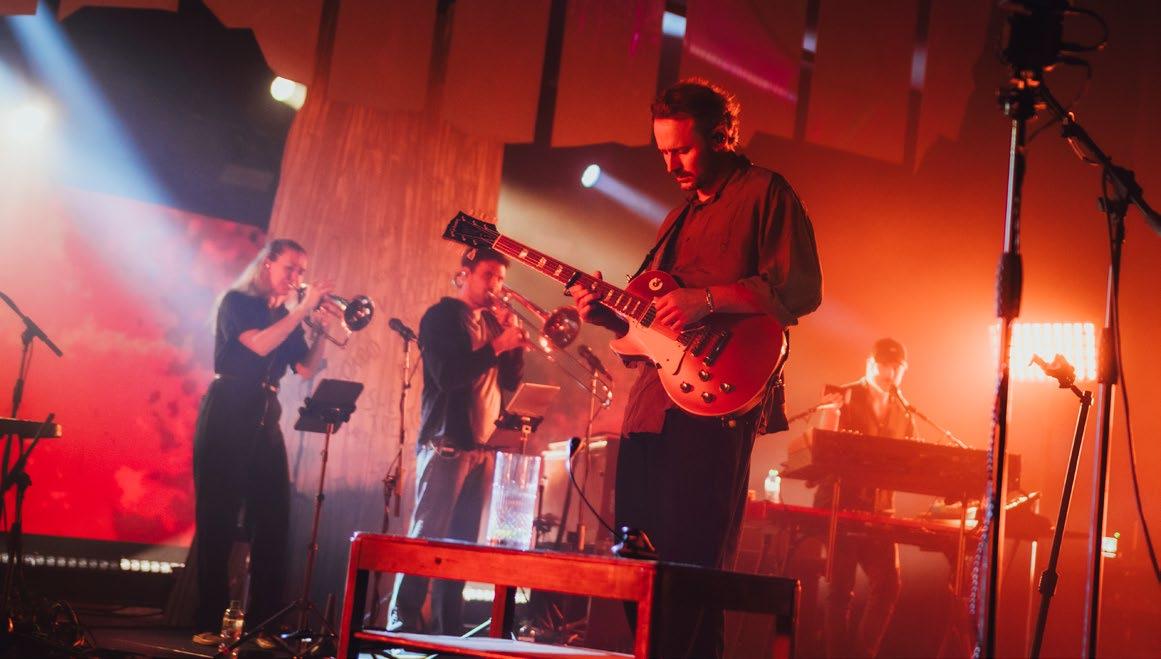
acoustically treated venues, the transients of an L-Acoustics system can really work to your advantage. I have a lot of information coming my way from the nine-piece band on stage, and the system is fully capable of translating the finest details therein.”
For vocals, the sE Electronics V7 Dynamic Microphone was used on most band members, while Howard’s guitar went through a variety of guitar pedals and an LR Baggs acoustic guitar pickup system to bring out the high end of the acoustic, which was fed out to a separate input via a volume pedal.
Monitor engineer Sander Van Laere tackled stage mixes on a DiGiCo Quantum 5 console, sending signal to a baker’s dozen of Shure PSM 100 in-ear monitor systems. Throughout the run, Van Laere found he had everything he needed for the complex production, which often featured atypical instruments (flugelhorn, trombone, cello and a live analog tape looper) for a mainstream pop show. “It was great working with Eighth Day,” he said. “Every package, anywhere in the world, was built to my wants and needs; I couldn’t have asked for anything more. I’m especially thankful for all the fantastic techs that joined us along the way; every single person was outstanding.” ■
Nashville, Tenn—First Apostolic Church in Nashville recently updated its audio system with the goal of improving the congregation’s worship experience through improved sound. Services at the church center around a full band, powerful vocals, and a mix of music and speech, so fielding a system that could do justice to the performances—and which could be installed in time for the church’s annual conference—was a must.
First Apostolic Church got in touch with All Seasons Audio (Jesup, Ga), where Brian Bush was tasked with finding the right system. Conceiving a tailored audio solution for the site, Bush arranged a live demo led by Carlos Henao, DAS Audio’s East Coast senior sales engineer for pro audio, which quickly sealed the deal.
The decision was made to go with a DAS Audio system based around the ARA Series. The left-right main hangs are SARA-100 line array boxes, providing 3,000 watts RMS of uniform audio with a 142 dB max SPL. Those hangs are bolstered by left-right LARA-Subs, providing controlled low frequencies with cardioid dispersion to minimize rear sound energy. The subs feature dual 18-inch transducers in the front and a single 18-inch in the back to create the cardioid dispersion pattern used to avoid unwanted energy behind the system.
Also part of the installation are Artec-510A outfills, each based around a 10-inch loudspeaker and 1-inch compression driver, and designed for installations; a Matrix-66, which streamlines audio and data management for DAS Audio systems with six inputs, six outputs and an integrated
Ethernet switch; and Alma, DAS control and management software used to manage and optimize systems.
For Jody Shoulders, audio engineer at First Apostolic Church, the upgrade made a noticeable difference, as he pointed out: “The system is really nice—clear, clean and musical. Spoken word and vocals come through beautifully, and the low end is exactly what we were looking for. It brings power without overwhelming the room.”
Bush of All Seasons Audio concurred, adding, “The church was blown away. They got exactly what they needed: clean, balanced sound with a punch. It doesn’t overwhelm, but it fills the room beautifully. The clarity is unmatched, and the subs bring a fullness that the old system couldn’t touch.” ■

West Point, N.Y.—United States Military Academy at West Point has trained United States Corps of Cadets for centuries, as generations of officers-intraining have passed through its halls. There’s more to the campus than just classes, however, as exemplified by The Eisenhower Hall Theatre—colloquially known as Ike Hall—which seats 4,400 and has hosted acts such as Elton John, Gabriel Iglesias and Luciano Pavarotti, in addition to the West Point Band, touring theatrical productions, and musicals over its 50 years. Ensuring the facility stays in step with the times, the venue recently acquired a new DiGiCo Quantum338 audio mixing console at front-of-house.
“We were just looking to upgrade the theater into the next century,” said Kiehl Morris, Ike Hall’s Audio Visual and Theatre Specialist. “We were also looking to incorporate Dante and running fiber throughout the theater.” Morris also works at nearby Bethel Woods Performing Arts Center, where he initially became familiar with the desk, noting, “I brought the Q338 to the table; our people liked it, so we went with it.”
Learning that the Quantum338 could also handle monitors from its
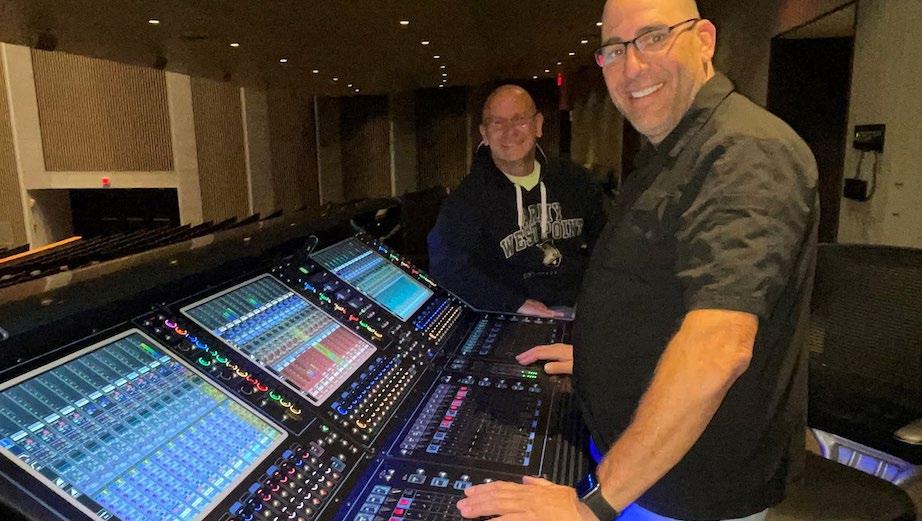
location at FOH and that it integrates with Klang’s immersive in-ear monitor mixing system, which is earmarked for the next round of upgrades at Ike Hall, were points in the console’s favor, Morris said, adding that they purchased the new console from Washington Professional Systems.
Morris and technical director James Voltaire installed the Quantum338. The new console drives an EM Acoustics Halo line array system configured with two main left/right hangs and a center cluster, together with three delay clusters covering the two balconies, plus under-balcony delays and front fill. More than a dozen stage monitors as well as side-fills can also be controlled from the FOH position.
The implementation of a Dante network at the venue was additionally spurred by the purchase of a Shure Axient digital wireless microphone system, which integrates with the Quantum338. “Incorporating the DiGiCo console with our new Shure Axient over Dante gave us significantly more gain control than we had previously. Our gain structure is much better now,” Morris noted. ■
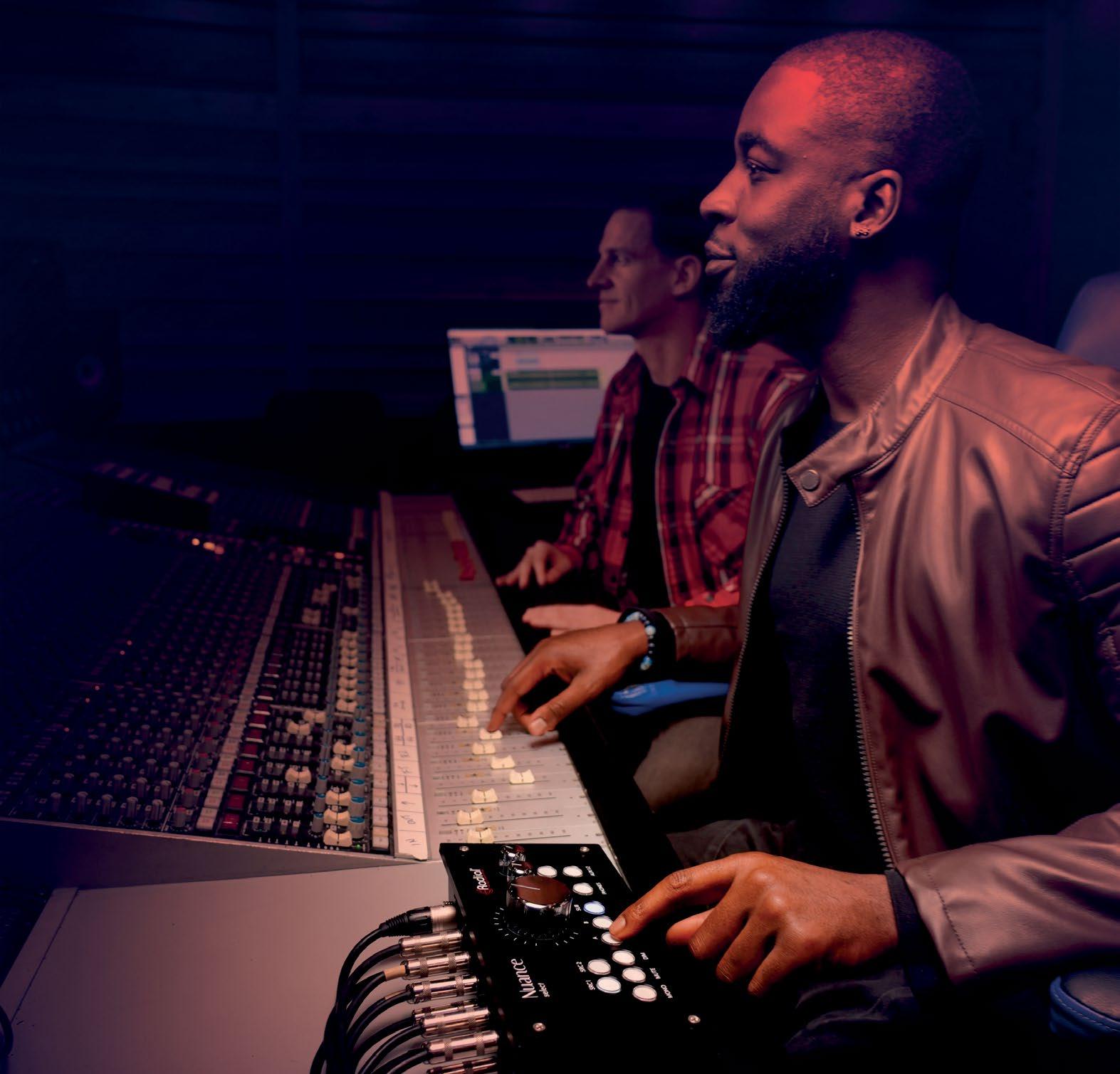

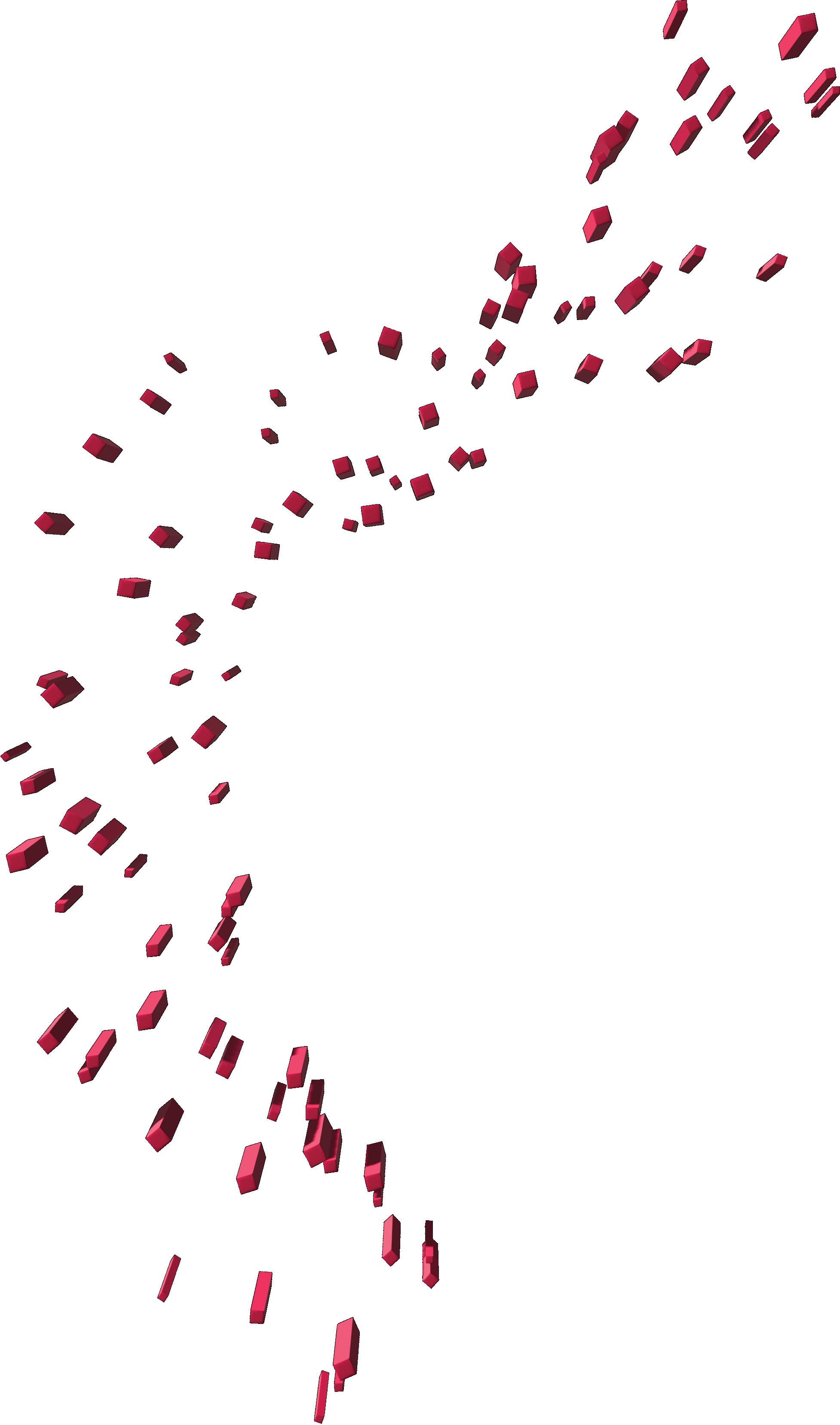
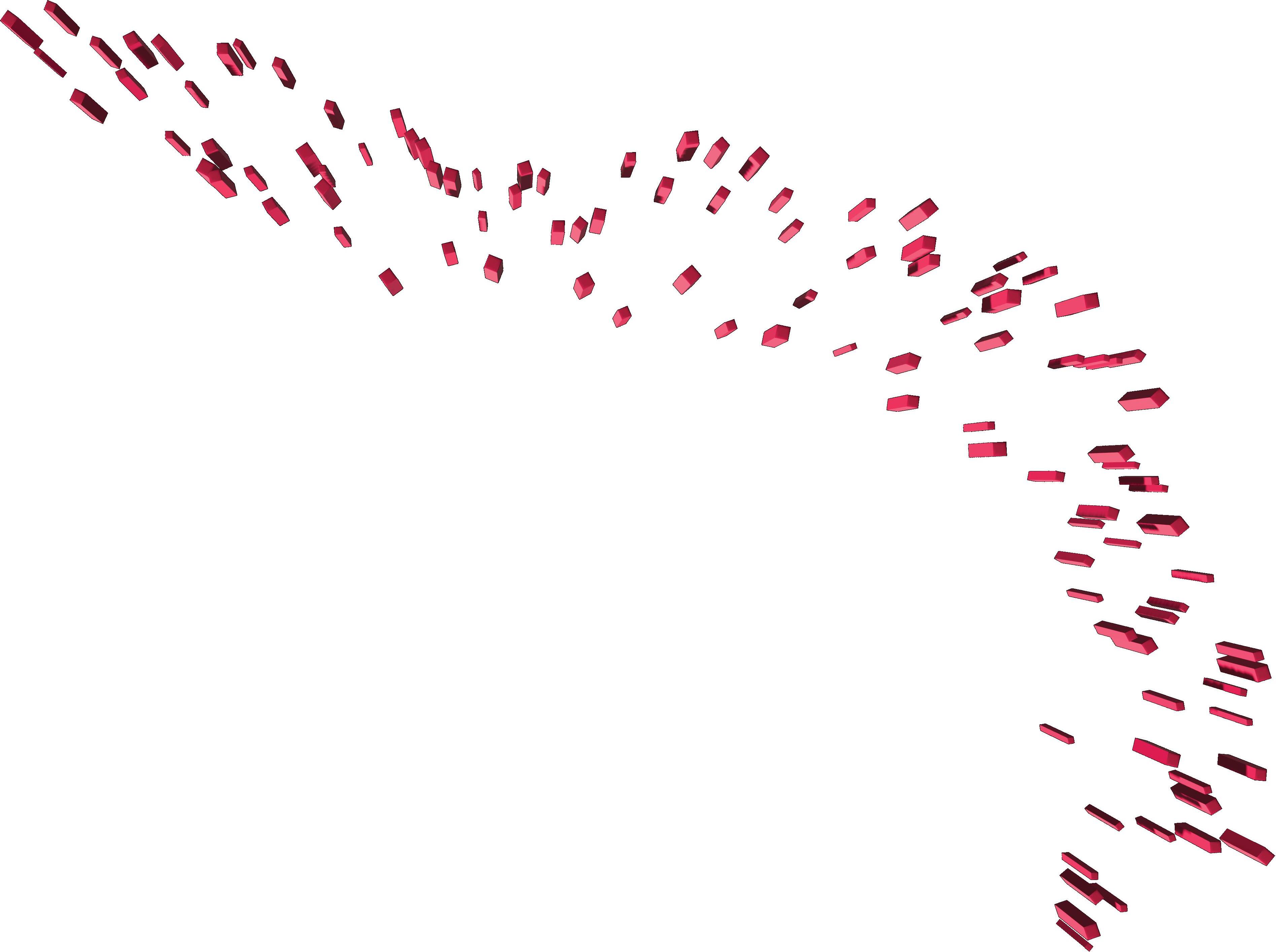
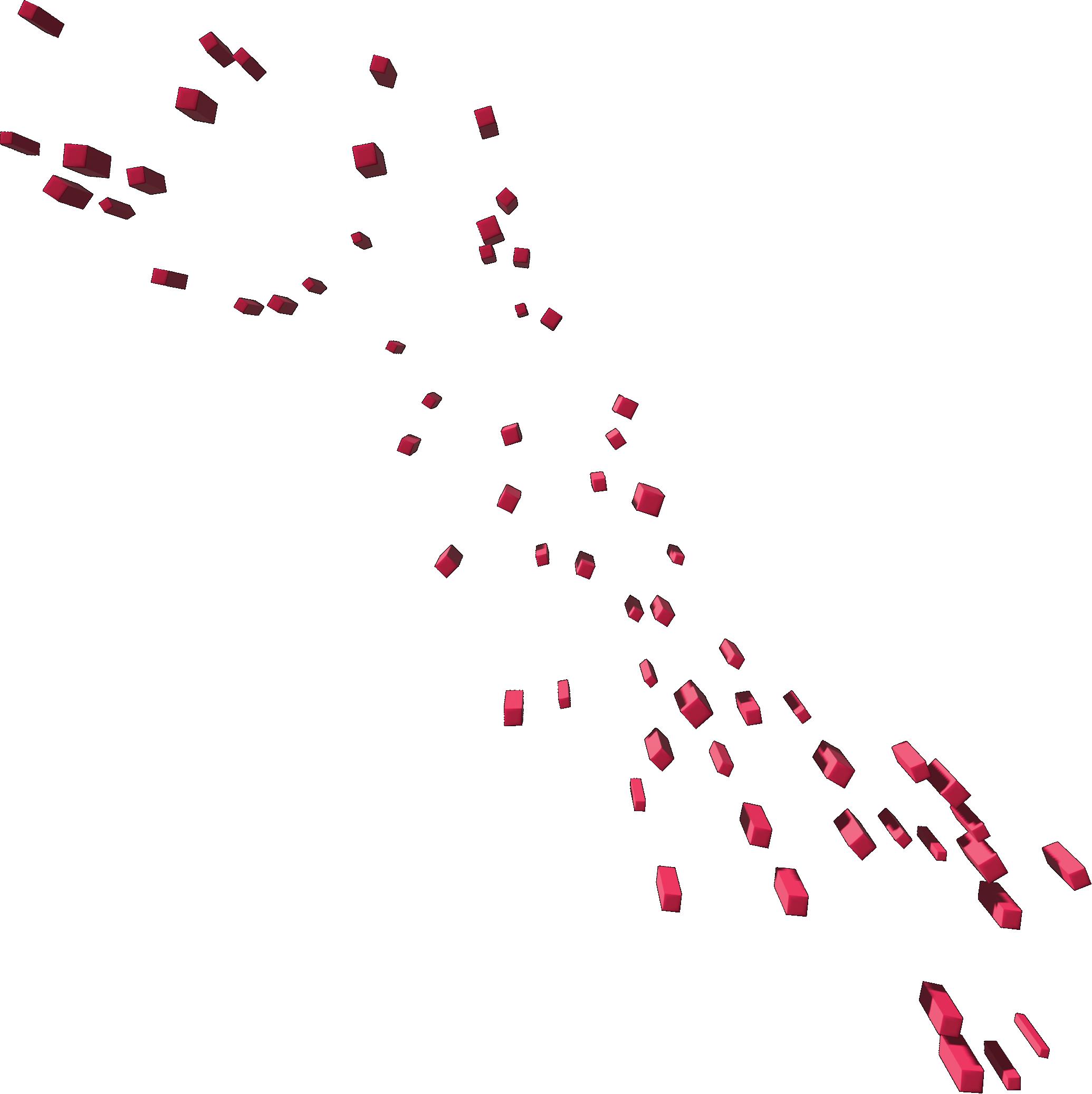


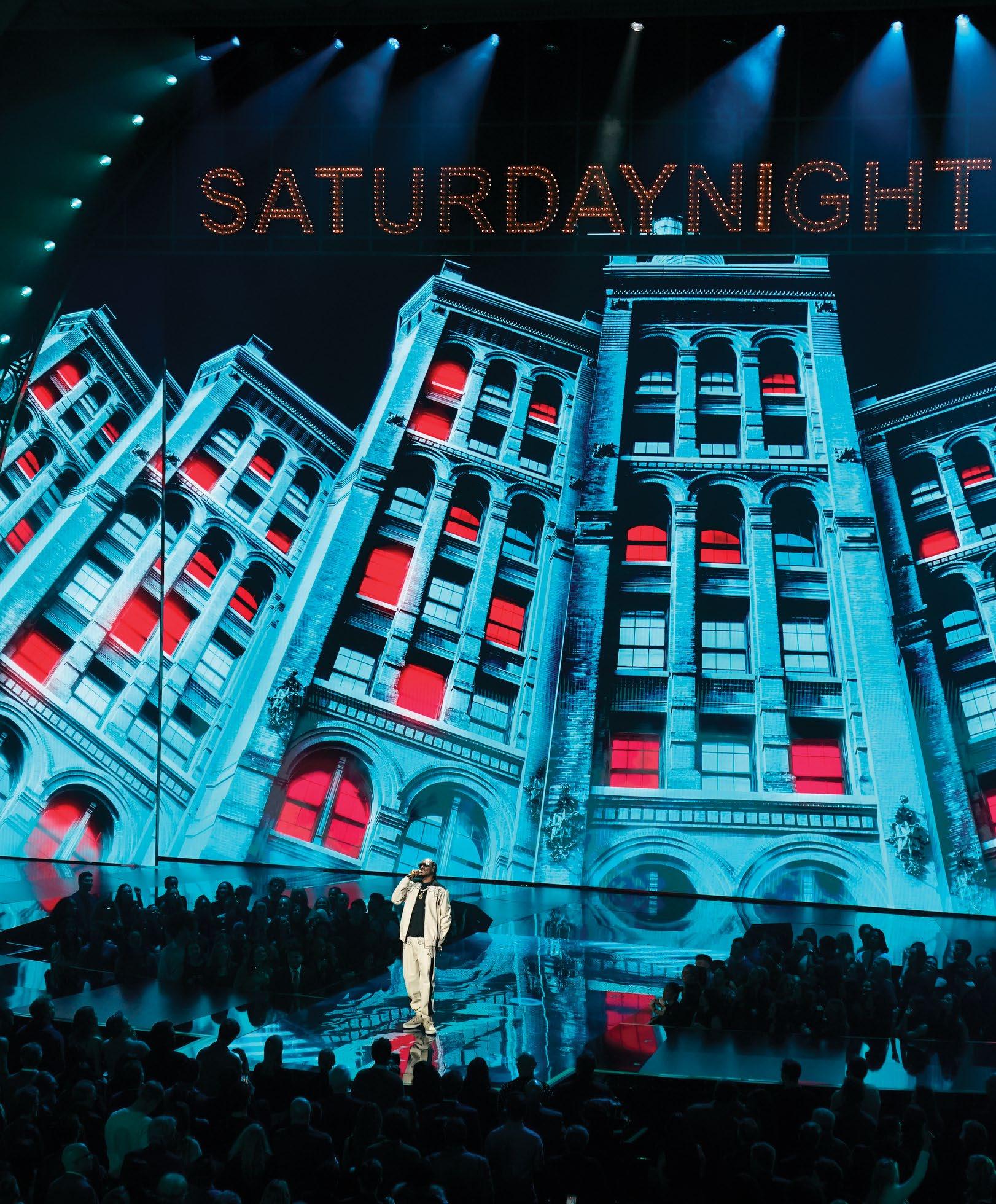


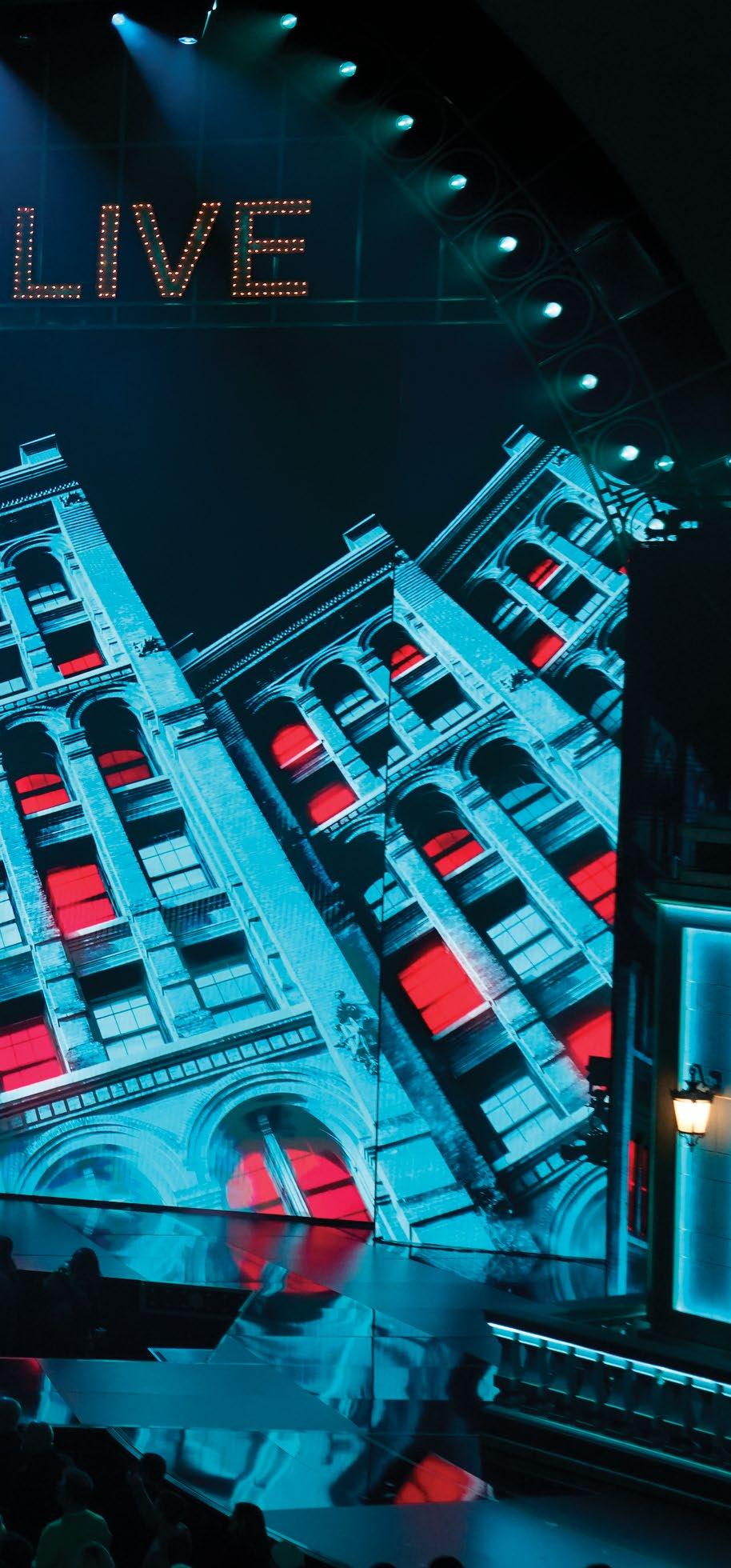
In February, Saturday Night Live celebrated its 50th anniversary with a live, Sundaynight primetime special highlighting the hit show’s comedic history. Two days earlier, however, its musical legacy was fêted with SNL50: The Homecoming Concert, an equally epic event held at New York’s Radio City Music Hall, just across the street from SNL’s studios.
Broadcast live on Peacock, the three-and-ahalf-hour show featured a who’s who of former SNL musical guests, likely making it the only non-awards show ever to feature as broad a lineup as Lady Gaga, Snoop Dogg, Bad Bunny, Jack White, Backstreet Boys, David Byrne, Eddie Vedder, Lauryn Hill, Bonnie Raitt, Wyclef Jean, St. Vincent, Preservation Hall Jazz Band, Jelly Roll, Chris Martin, Arcade Fire, The B-52’s, Brittany Howard, Mumford & Sons, Robyn, Brandi Carlile, Cher, Devo, Miley Cyrus, Nirvana with Post Malone, and The Roots.
bigger picture—the event was the final stop in a mad, three-week dash that also saw the company provide broadcast audio trucks for the Grammy Awards telecast in Los Angeles (16 years and counting), NBA All-Star Game events in San Francisco, and the Super Bowl LIX YouTube Tailgate Concert in New Orleans. “We own 10 full preamp racks for Lawos—that’s 560 channels—and they were all in use,” said Singer.
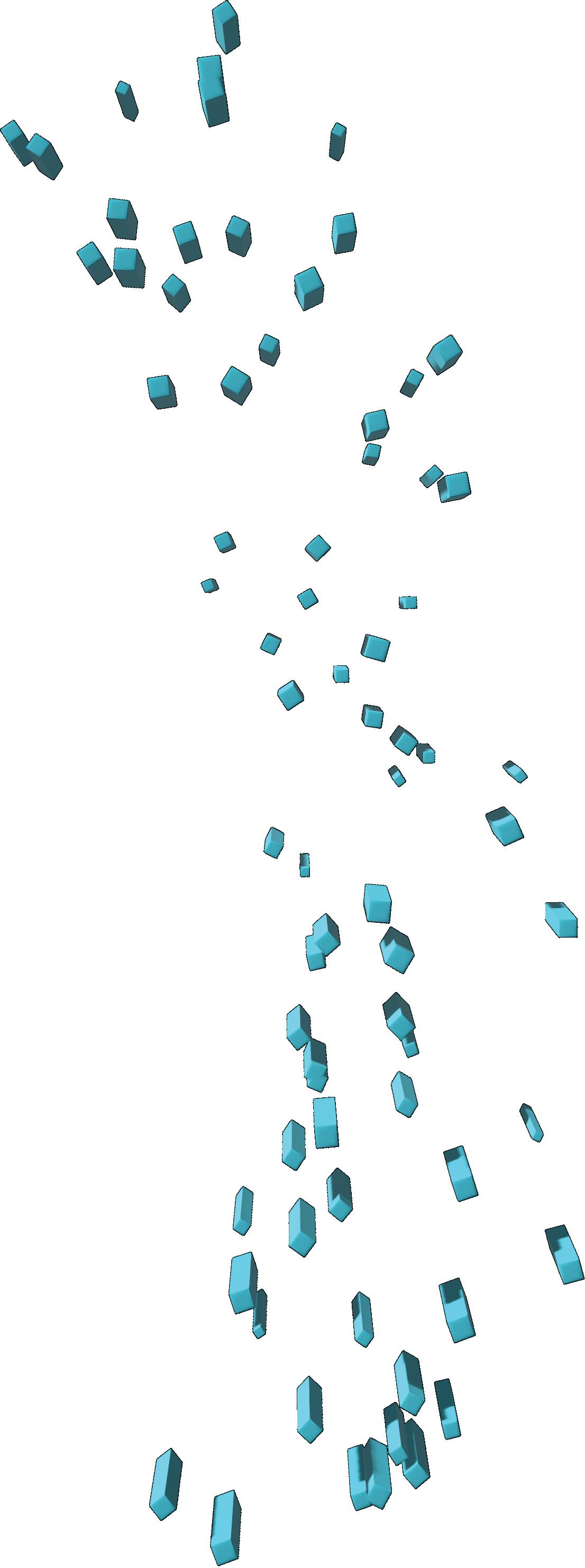
Keeping the musical audio flowing for broadcast was no simple task, and that duty was entrusted to Music Mix Mobile (M3), which had its Eclipse and Phoenix mobile audio trucks parked outside, each outfitted with a Lawo mixing system. “There were a lot of moving parts,” confirmed M3 co-founder Joel Singer. “Planning, we had meetings and emails back and forth with Tom Holmes, the A1 on the show. We were both working a week-and-a-half earlier at the Grammys, so we had additional conversations there, and it became an ongoing discussion.”
For M3, the SNL concert was part of a much
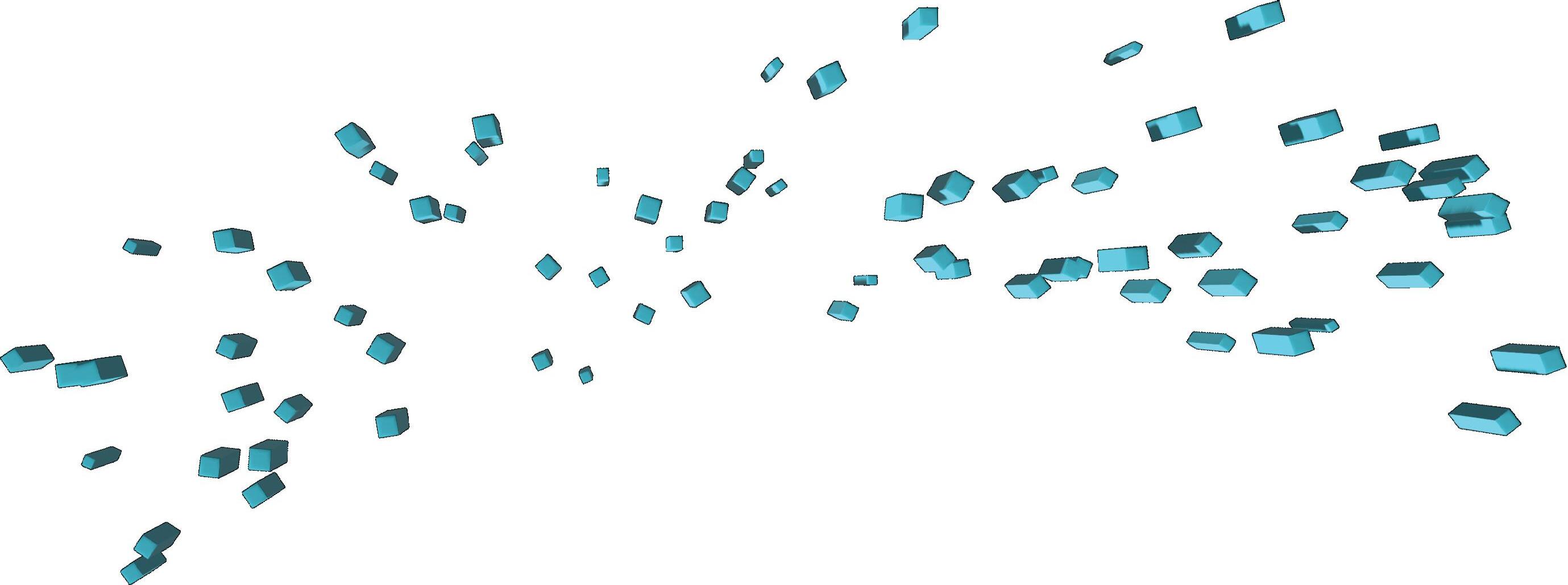

After the Grammys ended on Sunday, February 2, within hours, M3’s Eclipse truck was on the road, making the four-and-a-half-day journey back to the company’s homebase in New Jersey. “We were waiting for 336 channels of our preamps to come back from across the country,” said Singer. “I had to pre-build configurations on my flights going back and forth to L.A., so I knew it was all going to work; I just had to load it all up. We also had to reconfigure the Lawos in advance, because you just can’t add a preamp rack, bring it to a gig, throw it on a piece of fiber and go, ‘Oh, there it is.’”
More importantly, doing that wouldn’t fit with M3’s meticulous methods. “We pre-test everything that goes out the door, 100 percent,” said Singer. “The trucks came back on Friday, and we unloaded everything, hooked up all our preamp racks, tested every single signal source and went through the whole system. When you’re dealing with highprofile, once-in-a-lifetime broadcast events— which is the core of our business—there’s no room for equipment failures. We loaded the preamp racks into our Sprinter, sent them to New York for
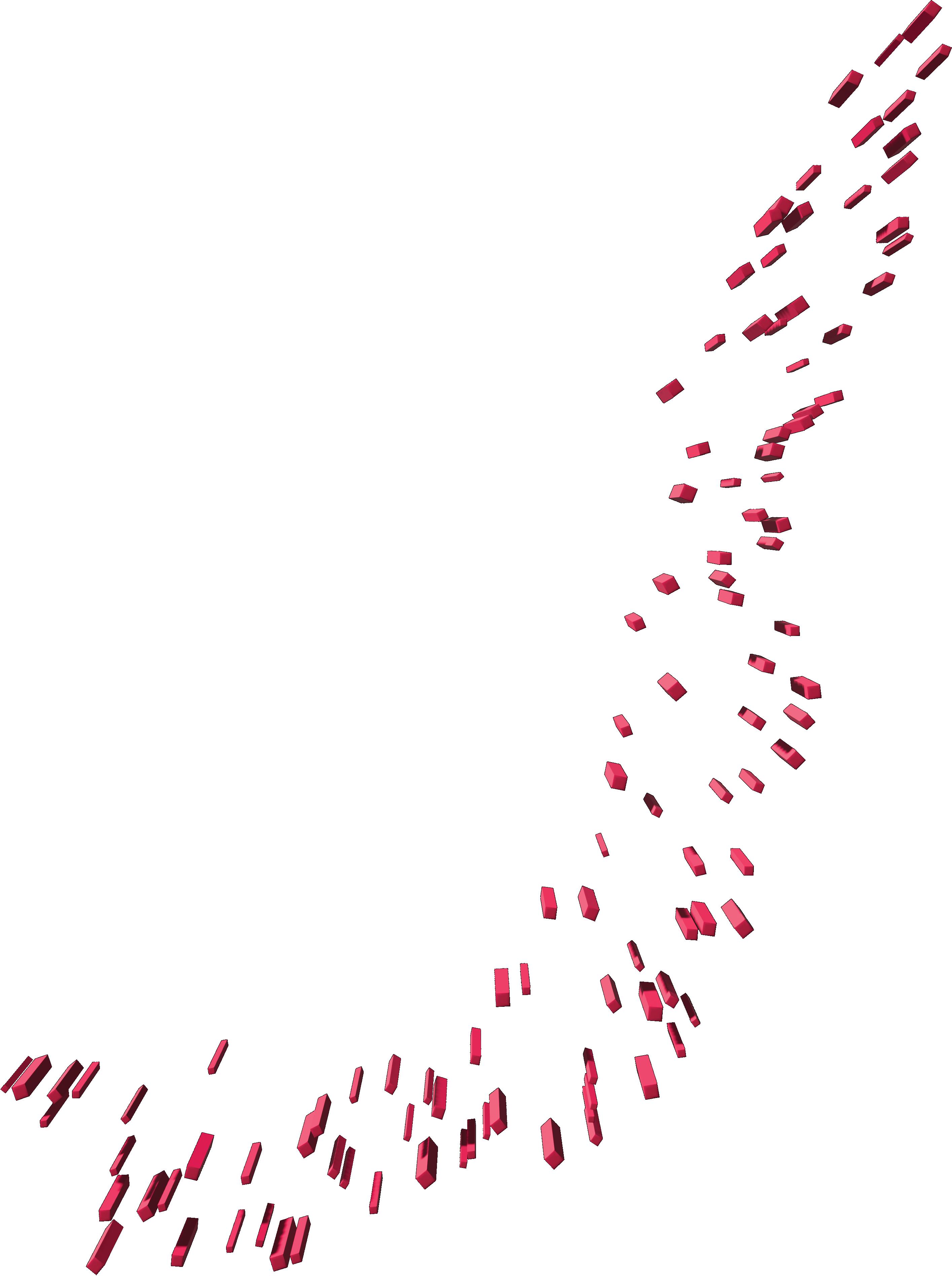
delivery on Saturday, and loaded the rest of the trucks to arrive onsite Monday.”
M3 delivered its preamps to Radio City on Saturday due to load-in order, which was dictated in part by space constraints within the venue. Once inside, the preamps were placed on a 30-foot-by-20-foot deck at stage right and hoisted 10 feet up so that the space below would be available for other uses. “The planning that went into this was intense, hence why we had to bring gear in early,” said Singer. “The only real egress to Radio City for bringing equipment inside is a set of doors that go onto a ramp, and at its end, a forklift comes and brings it all down two floors—so it’s quite a feat to load a big show in and out of there.”
Two days later, on Monday, the trucks arrived and parked along 70 feet of 51st Street. “Monday morning, we got the trucks up and running, got the start of builds done, started to find out any last-minute changes as far as input lists or structure of the show, and sat down with the engineers,” recalled Singer.

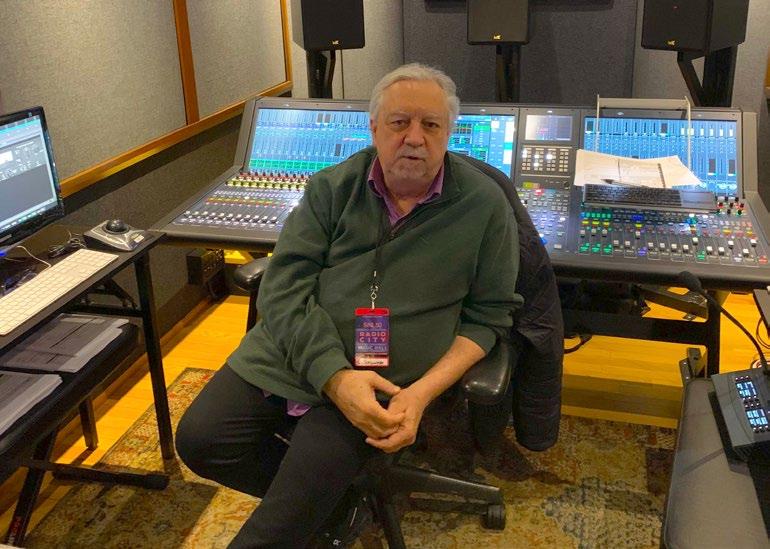

There was a lot to keep track of, as the production required M3 to use 224 channels of preamps rack per truck. “That’s four racks for each truck,” Singer explained. “I don’t think any show has been that large for us. When we did the Taylor Hawkins tribute oncert at The Forum in L.A. with Bob Clearmountain mixing, that was 224, but that was to one truck—this was double. It might be the most I/O that has been put on a stage to date; it was just insane as far as how much patching had to be done. Hats off to my guys, Jimmy Goldsmith and Mike Fortunato, who did it all and made sure every single channel worked right. It was stellar.”
Because M3 avoids preamp-sharing, each truck had its own set of four identical racks. Inside the venue, the main stage featured a spinning platter with A and B sides—and thus A and B racks—while a C rack covered a side stage and a D rack handled all performance RFs and Pro Tools systems’ playbacks. Throughout the show, the two trucks alternated mixing performances, but it was crucial that both have access to all channels. “We wanted accessibility to either the A or the B, because if something changed during the show and all of a sudden an act had to be on the B split from this truck that went to the A truck, you needed access to it immediately,” Singer explained.
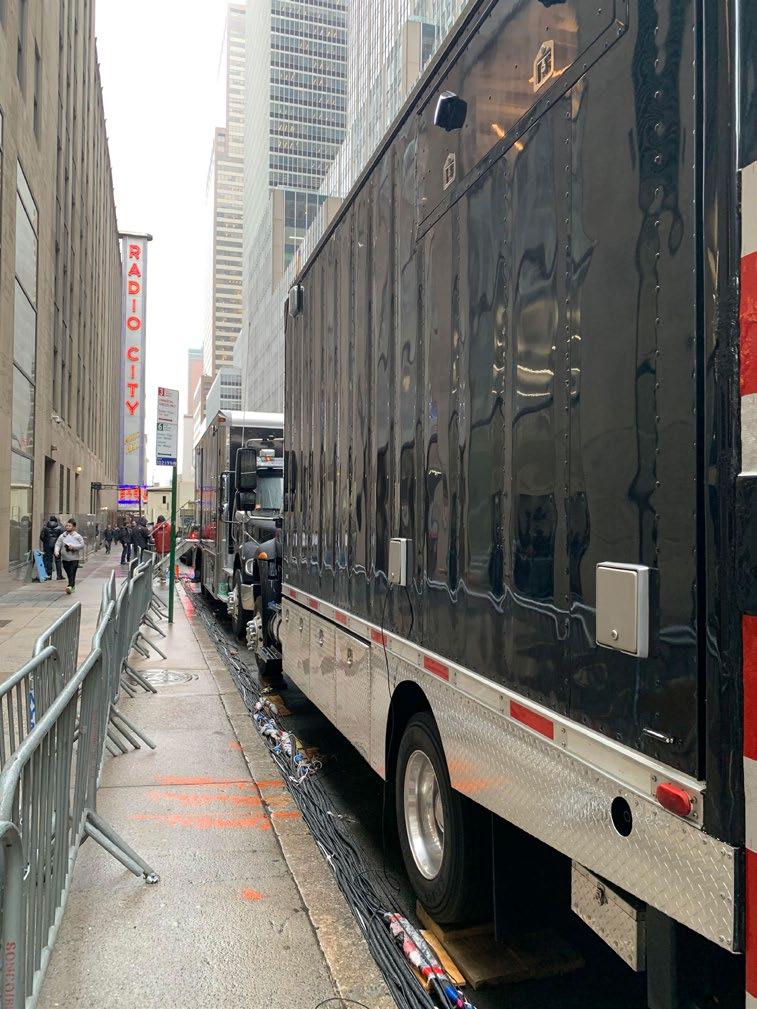
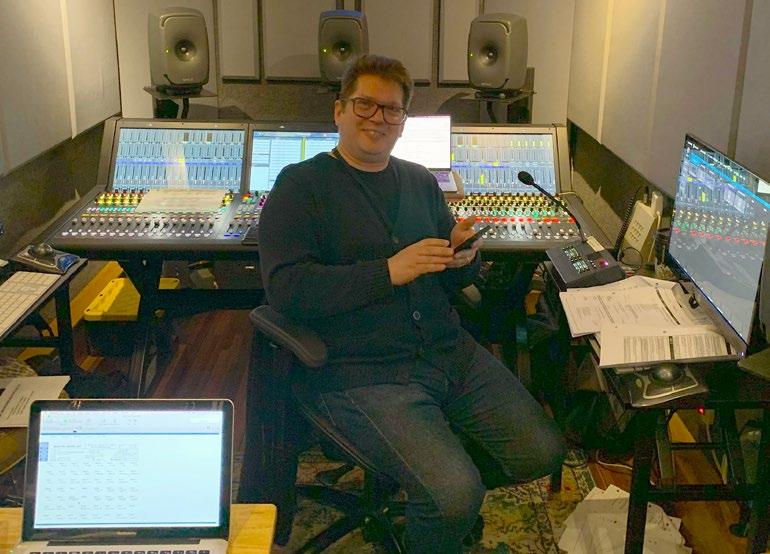
channels of Pro Tools, doubled-up so that there’s a master and a safety in each truck.
As the week progressed, New York’s winter weather dumped snow and rain on the trucks, but M3’s focus remained on the rehearsals inside Radio City, as the team worked to hone and refine mixes in collaboration with artist reps. Come Friday, it was time for the rubber to hit the road.
“We had one of the oddest dress rehearsals I’ve had in a long time, where certain things weren’t working and it took almost four hours to do,” Singer recalled. “We all sat down as a group and said, ‘This is what we have to do to solve this’—and we did. The show went off without a hitch, and that’s a true testament to the entire audio team, from Firehouse Productions who did sound inside Radio City, to deck A2s, to truck people, to the unions onsite, to everything.”

The A truck was Eclipse, where Eric Schilling mixed acts that came on and off the A side of

the rotating stage, such as Bad Bunny and the appropriately named Post Nirvana, with Nirvana fronted by Post Malone. Meanwhile, Phoenix became the B truck, with Lawrence Manchester mixing the B side, where The Roots stayed set up throughout the show, backing different performers.
The Eclipse and Phoenix trucks, though different sizes, have similar systems based around identical Lawo MC256 48-fader surfaces. Though Phoenix is smaller, it has become more advanced, being used for immersive mixing (though not for the SNL event) due to its new Genelec Ones monitoring system of 8341 and 8331 three-ways, 8330 top speakers and 7360 subs. Otherwise, the trucks are similarly outfitted, each sporting a Waves SuperRack, a t.c. electronic 6000 and 192

Out in the trucks during the show, the audio team had the additional moral and, if needed, technical support of top brass from different manufacturers, such as Tony Staires, Lawo’s North American sales director, and Will Eggleston, marketing director of Genelec, plus pros from Waves. “It’s something that you don’t come to expect,” said Singer, “but when it happens, it’s great to have them around, just in case.”
The weeks of planning, trekking across the country and more paid off, as the show came together for an enjoyable, entertaining evening.
“It was good, it was funny, it was heartwarming, it was every adjective you can use to describe what a great music show is,” said Singer. “Music is the most fun stuff you can do in your life, and I’m fortunate enough to be part of events where you sit there and go, ‘Wow!’ We’re not solving cancer, and this is not rocket science, but at the same time, it makes a lot of people happy for a good amount of time, and it’s great to be a part of that.” ■



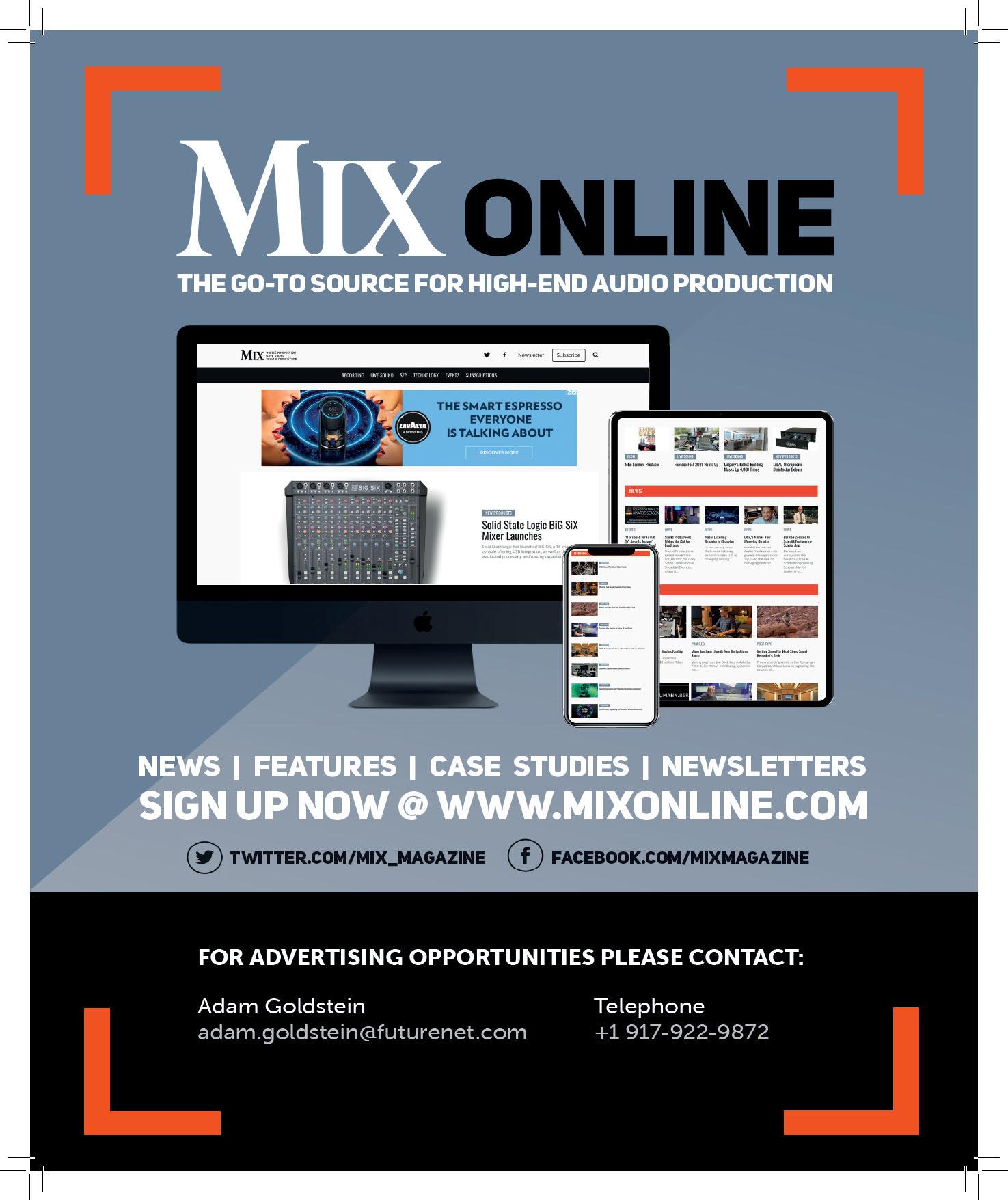

Unlike stereo recording, there are no ‘standard techniques’ for mic placement when capturing spatial music at its source— in the studio. So…let the innovations begin!
By
Steve Harvey
Over the last several years, various record labels have been working hard to remix back-catalog recordings for immersive presentation on streaming platforms such as Apple Music, Amazon Music Unlimited and Tidal HiFi. But when are we going to start hearing new projects conceived, written, recorded and mixed specifically for some form of spatial playback?
The short answer is that such projects do exist, but they are still relatively few and far between. Of course, there are all sorts of challenges associated with adapting traditional stereo or 5.1 recording methods for the new immersive formats, especially for certain types of music and instrumentation. Nonetheless, one straightforward approach to immersive recording is to put a group of musicians playing acoustic instruments in a room and capture the results using a microphone array such as the Fukada Tree, Hamasaki Square, 2L Cube or some other configuration.
At a daylong recording session at EastWest Studios in Hollywood during this year’s NAMM Show, Adrian Weidmann, CEO of Immersive Design Labs, demonstrated one such livetracking workflow using the company’s wares. IDL, which launched in August 2024 and is based
in Minnesota, offers just a handful of products: an omni-directional, measurement-grade microphone with either a half-inch (IDL-3561) or one-inch (IDL-3562) capsule (also available in boxed sets of matching pairs), a carbon fiber immersive 7.0.4 mic-mounting array, and a stereo bar.
Weidmann started out as a mechanical engineering student at the University of Wisconsin, Madison, beginning in the late 1970s and working on Wisconsin Public Radio live radio productions in his spare time. He went on to work in Denmark for sound measurement specialists Brüel & Kjær for nearly 10 years before joining AMS Neve, where he was director of sales and marketing until 1998. He then spent the next few decades in other industries.
Last year, Weidmann was persuaded to return to audio and help capture part of the mic market. Based on his previous pro-audio expertise, he decided the best way to convince people to jump into immersive recording was to demonstrate it. “I’ve got to educate people,” he says.
IDL’s first demo day was during the 2024
AES Convention, when Weidmann organized a tracking session in the big room at Power Station at BerkleeNYC. He engaged singer-songwriter Willy Porter, a Wisconsin-based musician who just happened to be touring the Northeast, to perform. Porter introduced Weidmann to his friend Neil Dorfsman, who engineered the session.
Weidmann next booked a day at EastWest Studios in Hollywood for late January, inviting NAMM attendees to witness the event. He brought in Matt Wallace and Will Kennedy, who have extensive experience working in Dolby Atmos, to engineer, produce and mix the tracking session, which once again featured Porter and his band. Kali Audio installed and tuned a 7.1.4 monitor setup in Studio One’s control room, comprising seven SM-5 speakers on the horizontal plane, with four IN-8s overhead plus a pair of WS-6.2 subwoofers.
With so much to do in just one day, the engineers chose to divide and conquer. “I said to Matt, ‘You take care of everything from the microphones to the console, and I’ll take care of everything from the console to the speakers,’” Kennedy recounts. “Normally, on a tracking date, the hard part is getting the microphones set
and getting the musicians comfortable, and the control room stuff is a little less fraught. While Matt was handling all of the musician- and microphone-centric stuff, I was working with the Kali Audio folks on getting the speakers set up properly.”
“We were walking such a high-wire act,” Wallace adds. “Will and I figured out we both put in 13 hours that day. We were both operating at about 95 percent of our capabilities all day long.”
To highlight IDL’s products and to keep things as simple as possible, the engineers began the day with the intention of relying solely on the 11 mics—seven 3561s plus four upward-pointing 3562s—on the immersive array. “Our goal was to see what we could do if we just put up an array and moved the musicians around until it worked,” Kennedy says.
The four musicians were seated facing the array and surrounded by gobos, to limit room reflections. However, they had been rehearsing in a lively room, Wallace notes, “So I ended up flipping the gobos around to the hard surfaces so they could hear each other.”
Porter was positioned at the center-channel mic with singer Carmen Nickerson to his left, in the right-front channel. Ryan Pearl, on resonator guitar and mandolin, sat at the midright channel mic, also to Porter’s left, with cellist and vocalist Mai Bloomfield, guesting with the band, sitting opposite him. Bloomfield and Pearl each sent their instruments through a pedalboard to a QSC speaker diagonally opposite their respective locations, adding ambience to the immersive array’s rear channels.
“I have to give credit to Matt Wallace for that

suggestion,” Porter says. “It was a great way to utilize the soundfield in all of its dimensionality.” Porter also used a QSC wedge, behind him, to bolster his acoustic guitar’s low end.
Immersive and Dolby Atmos have become almost interchangeable terms, but there was no Dolby software involved during the session. “Each of those 11 mics went through the Neve [8078] console to ‘tape,’ no EQ, then went to their corresponding speaker in the array,” Weidmann explains. The engineers adjusted the control room monitor level within Pro Tools. That said, the engineers are mixing the tracks in Dolby Atmos at their Studio Delux in Van Nuys, Calif., which features a Kali Audio 9.2.4 rig.
“The microphone array is based around Atmos speaker placements,” Kennedy points out. “From that perspective, we were very much thinking about Atmos the whole time.”
Once everything was set up, Weidmann adds, “I put a calibrator on each of the mics. It puts exactly 94 dB at 1 kHz at the diaphragm.”
That was crucial, Kennedy notes: “It allowed us right out of the gate to set all the mic pre’s at, say, -18 dB, and gave us a stable platform. You don’t really want to have one mic balanced higher or lower than the others, because it skews
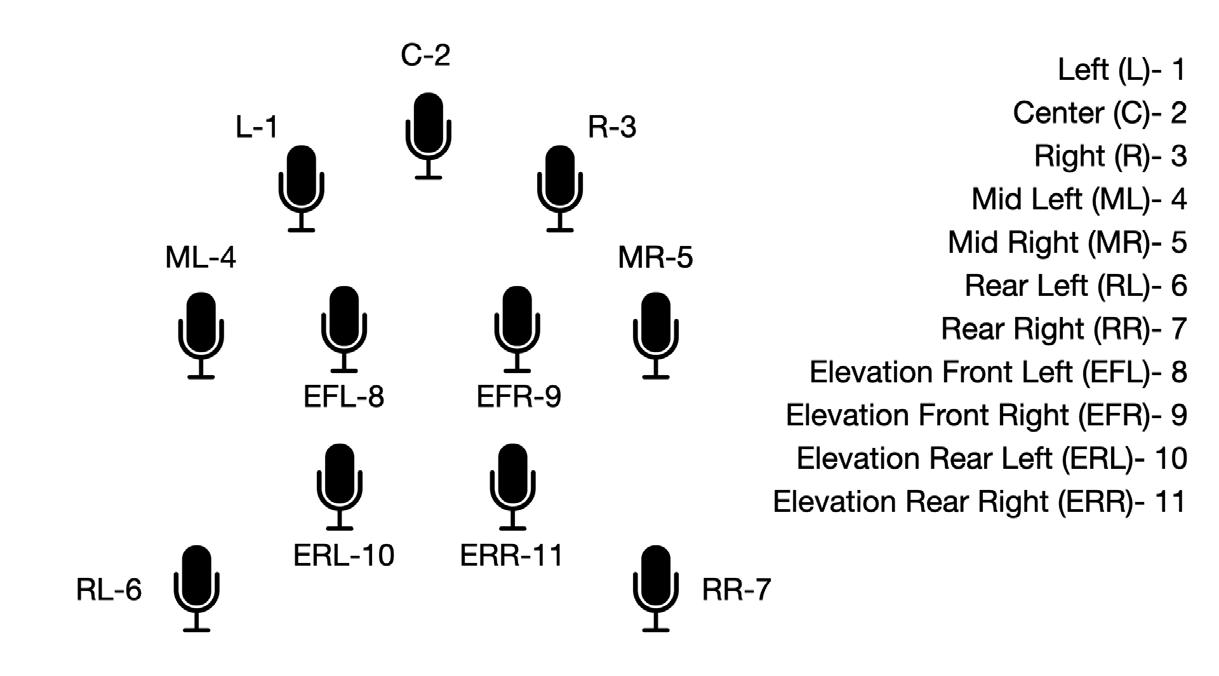
the whole spatial feeling of the room.”
Ultimately, the engineers added two more microphones—an AKG C12 for Mai’s vocals, allowing them to balance the two backing vocals either side of Porter, and a Neumann KM 54 to better control Pearl’s guitar and mandolin in the mix. “We were trying as much as possible to pull all of the sounds that the audience in the control room was hearing from the mic array and have what few close mics we were using be secondary,” Kennedy stresses.
With zero opportunity to overdub or fix anything, the recording method requires exemplary musicianship, and Porter’s ensemble was up to the task. “The part that’s so appealing to me is that you can’t really edit anything,” Porter says.
Tracking an ensemble live flies in the face of most modern recording workflows. “We’re being trained to hear perfect pitch, to hear everything so metronomically,” Porter says, “and this is a reintroduction of humans in a room. We really had to mix ourselves so that not one of us was dominating the sonic field. In that context, without monitoring, it was fun, and very liberating.”
The next IDL immersive recording day with Willy Porter and his band is scheduled for June 12, 2025, at Ocean Way Nashville. ■
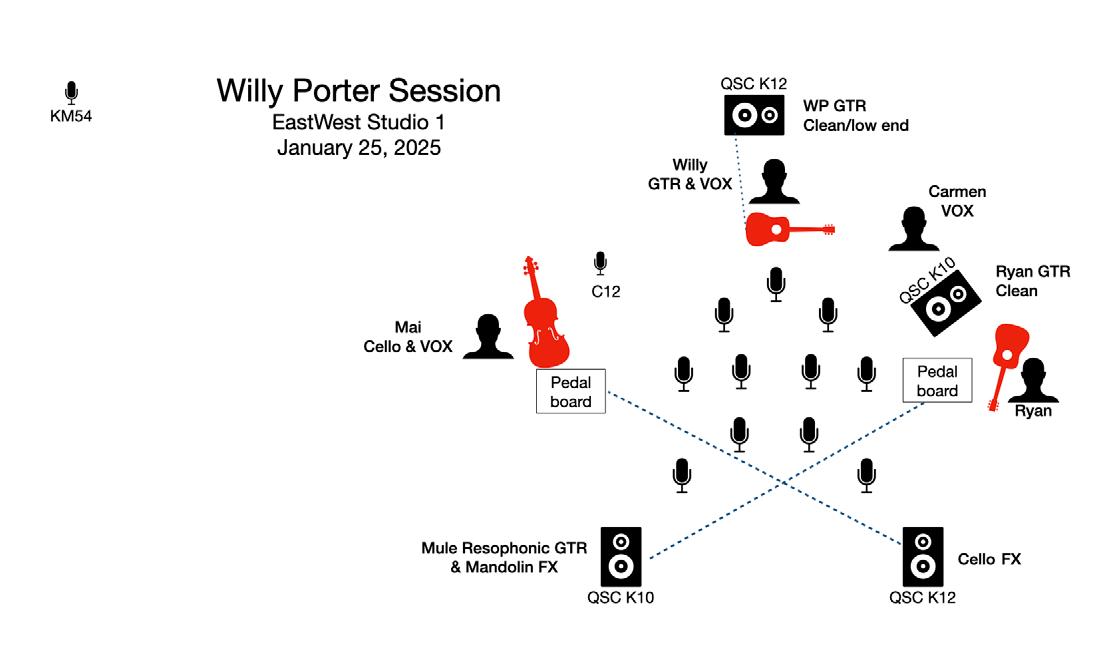
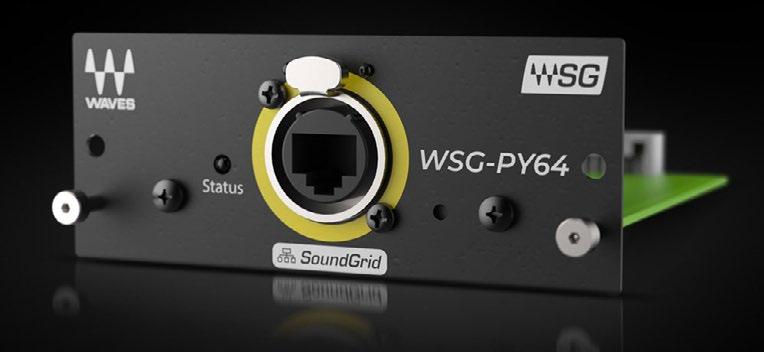
In collaboration with Yamaha, Waves Audio is bringing its plug-ins to DM7 Series consoles with the new Waves WSG-PY64 I/O card. The card integrates with the Yamaha DM7 console, allowing live sound engineers to run Waves plug-ins with 0.8 ms latency, complete with multitrack recording and playback. The card connects to SoundGrid systems and SoundGridcompatible devices, and allows users to both record and play back in parallel to processing on Windows and Mac systems. With a setup consisting of a WSG-PY64-equipped DM7 console, a Waves SoundGrid DSP server, Waves SuperRack SoundGrid and a Mac or PC, users can process 64 audio channels at 44.1 to 96 kHz sample rates, allowing them to dive into Waves’ various EQs, compressors, effects, analog emulations and more.
German manufacturer KSD Studio Monitors is jumping into the U.S. marketplace via a partnership with pro audio marketing, sales and distribution agency Sound Vision Works. The partnership kicks off with the launch of the A200mk2 three-way active monitor, constructed with a 3-inch midrange dome and 1-inch tweeter in an aluminum waveguide, reportedly resulting
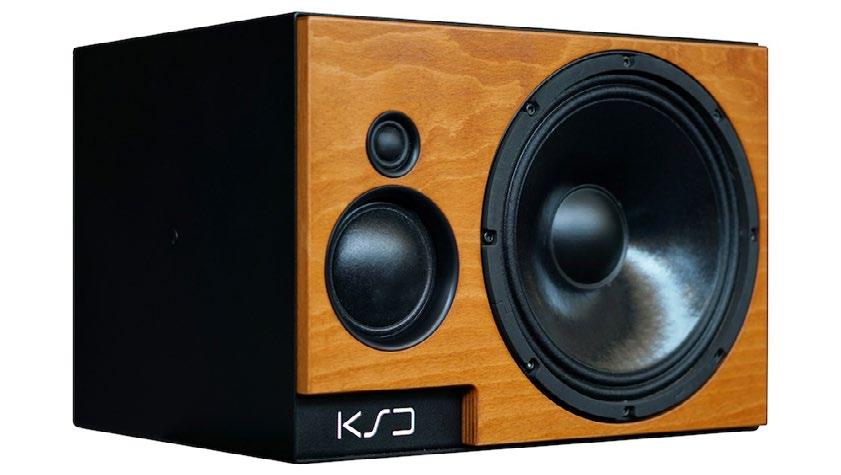
in a homogeneous sound field, and allowing for both horizontal and vertical orientation. The A200mk2’s 10-inch bass driver is said to provide low-frequency response down to 28 Hz without the use of a subwoofer. It offers adjustable high and low shelving filters on the amp for acoustic adjustments, with additional control options available via the KSD-RC remote.
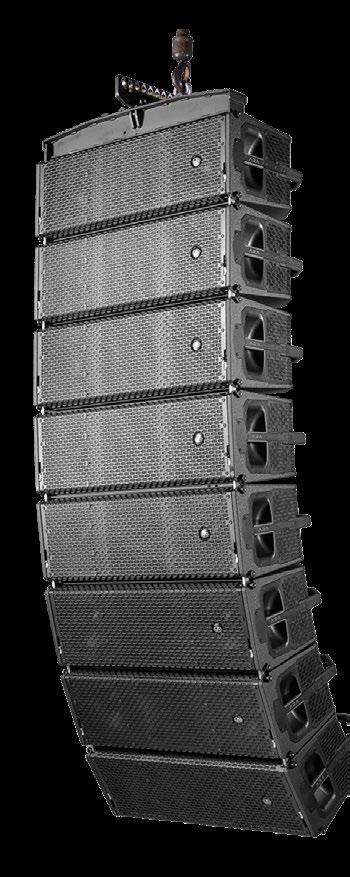
DAS Audio has unveiled MARA, the newest addition to the company’s ARA Series of line array systems. The MARA Series consists of the MARA-80 and MARA-100, both of which are self-powered, symmetrical line array systems, plus the MARA-SUB, a self-powered cardioid subwoofer. MARA-80 features dual 10-inch woofers with 3-inch voice coils, plus two 6-inch drivers in a cardioid configuration for the low end. MARA-100 employs two 10-inch woofers with 3-inch voice coils, plus two 6-inch drivers in a cardioid configuration, all for the low end. MARA-SUB utilizes a front-firing 21-inch woofer and a rear-firing 18-inch woofer (both with 4-inch voice coils) in a bass-reflex design, whereby the rear-firing driver creates the cardioid dispersion pattern.
Solid State Logic’s latest offering is its new SSL 18 rackmount USB audio interface. As a single 19-inch rack unit, SSL 18 sports 32-bit/192 kHz converters and dynamic range performance of 120 dB across all its mic, line-level and instrument inputs. The unit features a 125 dB dynamic range on its monitor and line outputs, and its integrated high-current amplifier has dual headphone outputs offering 120 dB dynamic range. There are eight mic preamplifiers with switchable Mic/
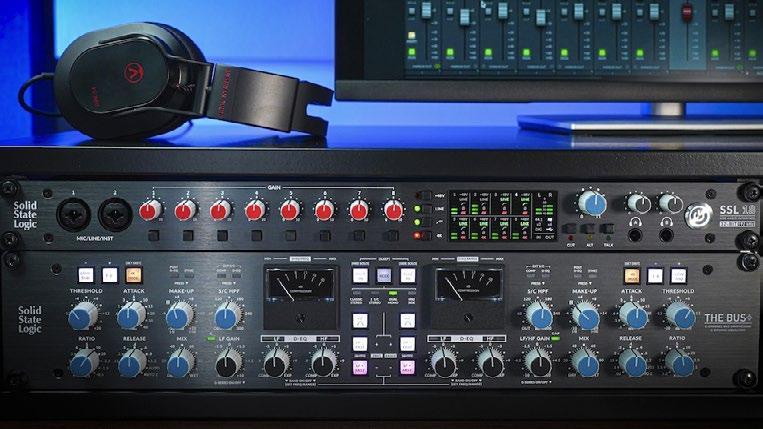
Line configuration; each input can be flipped into Legacy 4K Analogue Enhancement Mode, which adds analog saturation and a high-frequency boost, allowing users to access the 4000 Series sonic character. Inputs 1 and 2 are located on the front panel and offer instrument/Hi-Z inputs.
A convolution reverb plug-in developed in partnership with Troy Germano, CEO of The Hit Factory Studios, HitVerb aims to bring the vibe of the studios to DAWs via impulse responses from a dozen recording spaces across The Hit Factory’s various locations, including New York and London. The plug-in serves up a variety of environments, from tight, intimate spaces to expansive live rooms. Users can adjust virtual microphone distance and positioning, selecting from Neumann U67s, Coles 4038 Studio Ribbons, and Sennheiser MKH 800 Twins. Additional shape controls include lowand high-cut filters, tail length adjustments, and the ability to add or remove carpet to fine-tune reflections. Custom settings can be saved for future use as well.
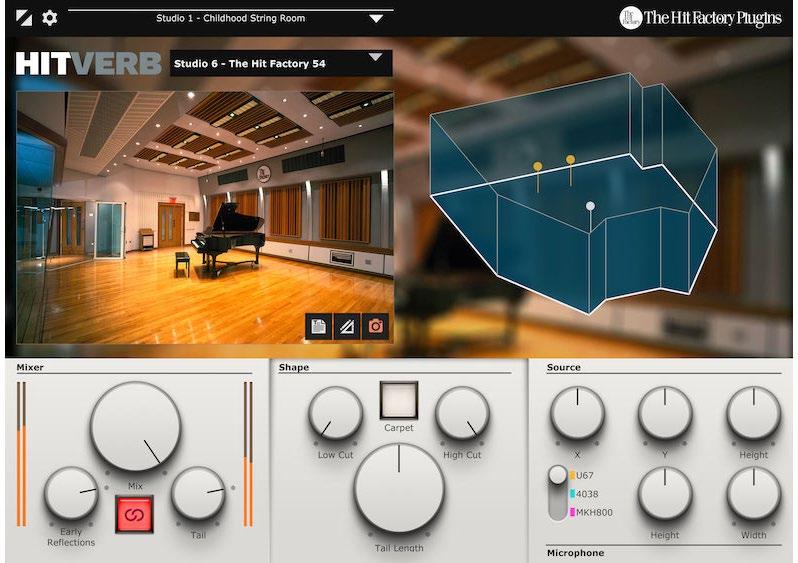
The archive of the BBC Radiophonic Workshop, responsible for the sound and music of productions such as Dr. Who and Living Planet, has been made available for the first time. The library features sampled sound from the original tapes, as well as new recordings and experiments by workshop members. Users will be able to use modern techniques of bending, stretching and morphing to create something new, as well as have access to a variety of mics, the EMT turntable and Rogers loudspeakers made especially for the BBC, including the Maida Vale plate and spring reverbs, modular synthesizers, tape machines, EMS Vocoder, Echo chamber, Roland Vocoder SVC-350 and Eventide
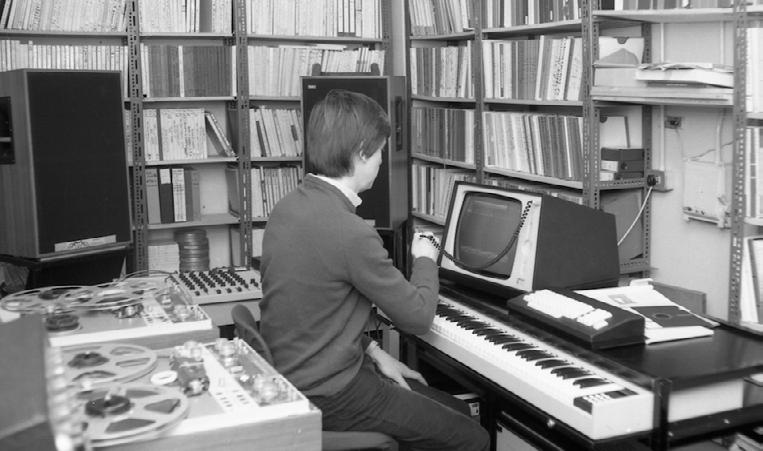
H3000. The package is divided into Archive Content, Found Sounds, Junk Percussion, Tape Loops, Synths and a Miscellany.
SPL has created a plug-in version of its discontinued tape emulation processor, Machine Head, and was able to port the original source code into the plug-in, making it an extremely close replication, sonically, of the original unit created in 1996. SPL decided to add more digital features that take advantage of today’s faster DSP, so it offers two operation modes. “Original’’ strictly replicates the sound quality and controls of the hardware unit, while “Ultimate” provides a more precise tape machine emulation and includes another parameter,
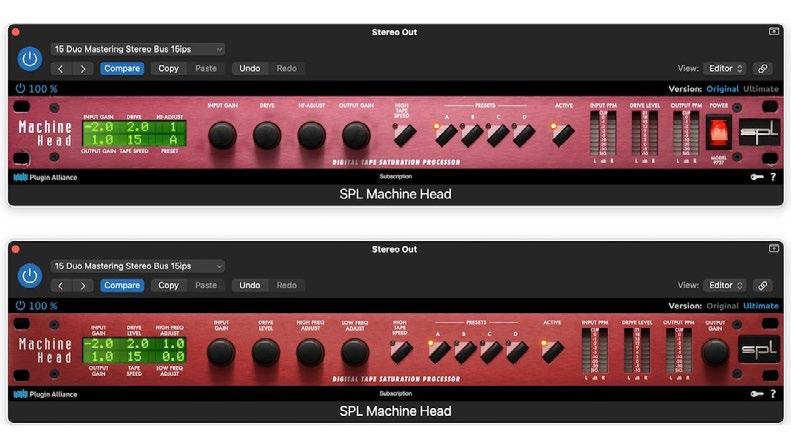
Low-Frequency Adjust, allowing the user to “calibrate” the processing through over- or under-compensation. Both modes have knobs for Input Gain, Drive (called “Drive Level” in Ultimate mode), High Frequency adjust and Output Gain.
Powersoft is expanding its Unica line of amplifiers with the debut of the Unica T, the company’s first new touring amplifier since it launched the T Series in 2019. Built in a 1RU form factor, the Unica T front-panel interface was designed specifically for live applications, with the goal of providing a fast control workflow, enabling quick and precise adjustments. Unica T leverages a third-generation amplifier technology architecture; design elements include a fastening system for Phoenix connectors and improved galvanic insulation for analog
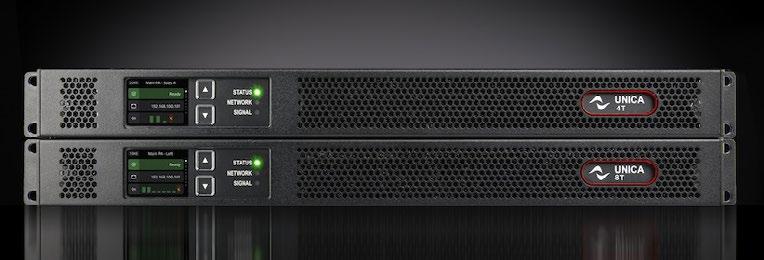
inputs. The unit supports a variety of connectivity options, including configurable GPIOs and networked audio and control. Its Easy Swap functionality, enabled by an automatic USB backup system, allows for replacement without the need for reconfiguration.
Heritage Audio’s O.H.M Amp is reportedly the first impedance-matching headphone amplifier. The front panel features ¼-inch and 3.5 mm headphone outputs, and output level is controlled using an Alps “Blue Velvet” potentiometer. Additional controls include an impedance
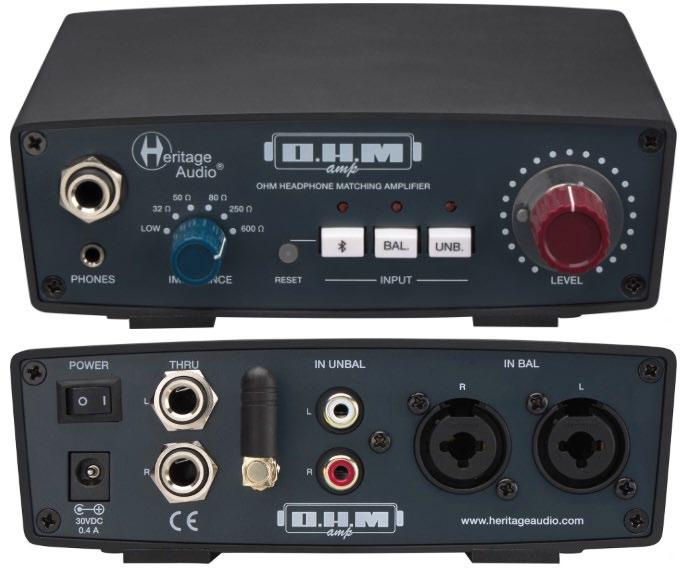
switch with settings ranging from Low (approx. 6 to 8 Ω) to 600 Ω, and an input selector switch. The impedance switch can be used to match the output impedance of the O.H.M. Amp to a wide variety of headphones. Input is on the rear panel, with options of unbalanced RCA, balanced TRS/ XLR combo jacks, or a high-quality Bluetooth receiver (codecs: APTX, APTX LL, AAC, APTX HD and SBC) with Burr Brown DAC.
Launched last spring and then briefly withdrawn from the market, Boss’ Katana:Go headphone guitar amp/USB audio interface has returned with a new exterior but the same features, including use of spatial audio technology to provide users with a 3D audio experience. The minuscule unit plugs into an instrument’s
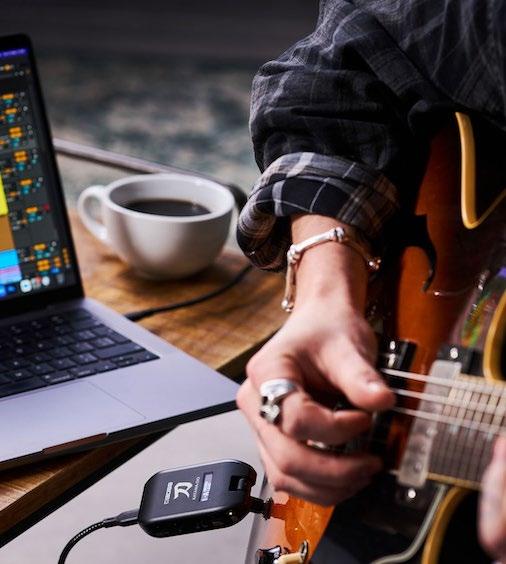
¼-inch jack and can be tied into a smartphone app that in turn offers wireless music streaming, sound editing, learning tools and more. The spatial audio aspect is in the Stage Feel feature, which allows the user to position the amp sound and backing music in different places in the sound field. The unit also works as a USB audio interface for music production and online content creation on a computer or mobile device.
Relab Development has launched its Maselec MLA-4 Triband Compressor/Expander Plug-in, an officially endorsed software emulation of the
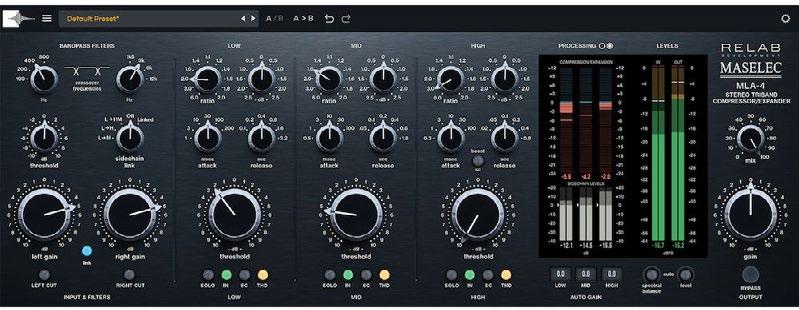
hardware unit. Aiming to avoid phase distortion, transient smearing, and tonal imbalance, the hardware MLA-4 was designed for deep control, able to apply compression and expansion simultaneously per band. The new emulation plug-in reportedly provides this, along with adaptive sidechain linking and crossover filters to provide multiple tools for shaping dynamics. Some typical uses of the MLA-4 include tightening low-end weight, enhancing vocal articulation or restoring lost transients. The plug-in offers mastering-grade crossovers, auto spectral balance, per-band THD control and a variety of advanced monitoring tools, allowing users to solo bands, cut left/right channels and more.
Shure has launched its MoveMic 88+, a wireless direct-to-phone stereo microphone with selectable polar patterns—stereo, cardioid, bidirectional, and raw mid-side. The mic can be attached to most tripods or mic stands using the two included 5/8-inch or cold shoe mic clips. The mic pairs directly with a mobile phone
of three configurations, with up to 64 inputs/ outputs: digital only, analog audio only, or mix of both audio types. It supports 16 isolated GPI (input and output capable) interfaces.
Live sound industry mainstay Greg McVeigh has released his first book, Just 100* Questions, available on Amazon. Sharing insights from sound mixers, musicians and executives in the field, the book takes its inspiration from a series of online posts McVeigh developed for Heil Sound as the tome explores what it takes
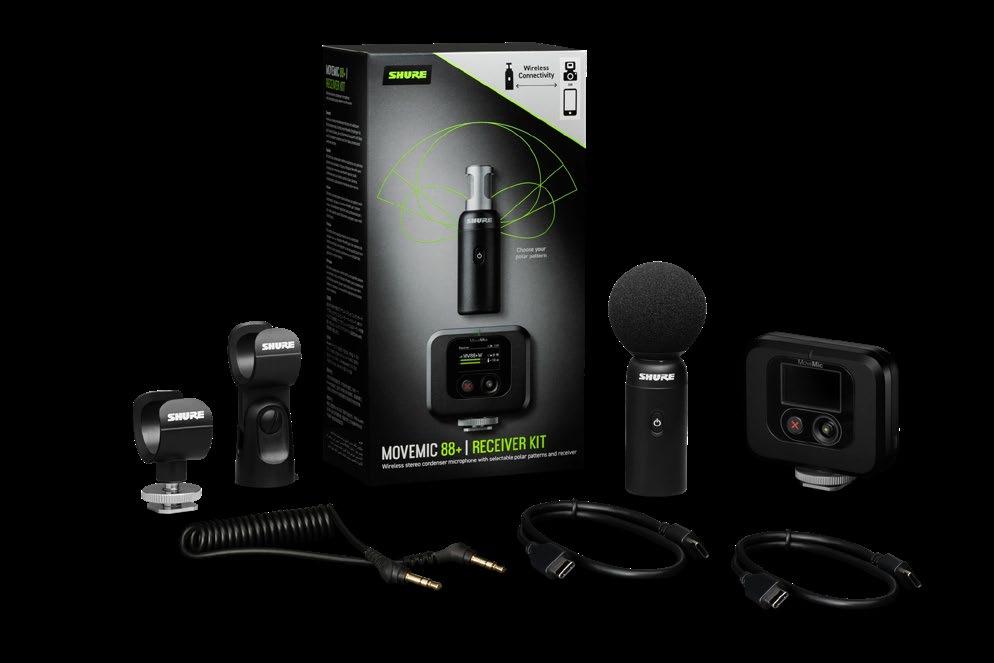
Adamson Systems Engineering’s FletcherMachine spatial audio solution has a free V2.3 software update adding new features and capabilities, including remote software, engine firmware, virtual software and a plugin. The software brings improved network connectivity, particularly on computers with multiple network adapters. Users can now
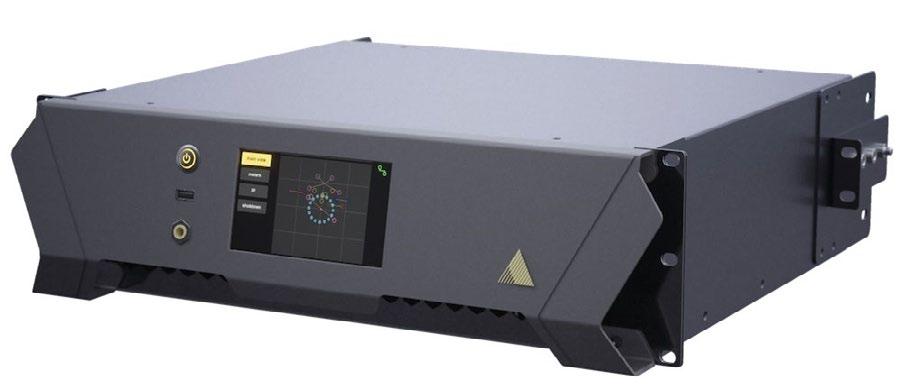
choose the direction of initial sync between the remote and engine, and preferences from previous remote versions can be imported seamlessly. Redundancy Mode has been further improved, and a Dedicated Show Mode prevents accidental changes to setups during performances. Other additions include Leader/ Follower hierarchy updates; Trajectory Engine updates; distance attenuation enhancements; binaural rendering improvements; and GUI and workflow updates.
via the Shure MOTIV apps without needing the MoveMic Receiver; that said, the MoveMic 88+ can also be paired to the Receiver, allowing users to use DSP to fine-tune audio recordings with gain, EQ, presets, high-pass filter, mute, and noise reduction controls. The MoveMic 88+ has a wireless range of up 100 feet, sports a reported eight hours of battery life that can be charged via USB-C, and features built-in headphone monitoring.
Virtuoso SoniX is a high-density converter for audio signals between AES3/Analog and MADI, allowing more sources to interface with the Virtuoso media node. Virtuoso is used to transport, process and monitor signals in realtime, and while it can process many audio signals in a single unit, a limiting factor can be the physical interfaces required for inputs and outputs that are not IP-based. Virtuoso SoniX allows users to interface a mix of analog and digital audio signals, as well as GPI, to Virtuoso. SoniX has an optical interface and offers a choice
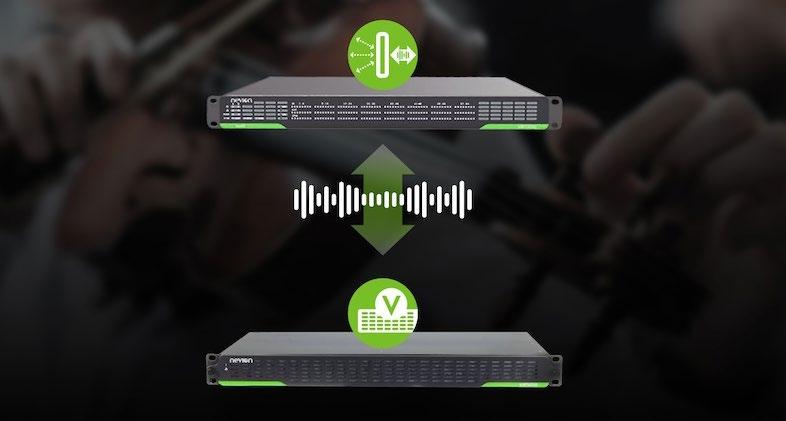
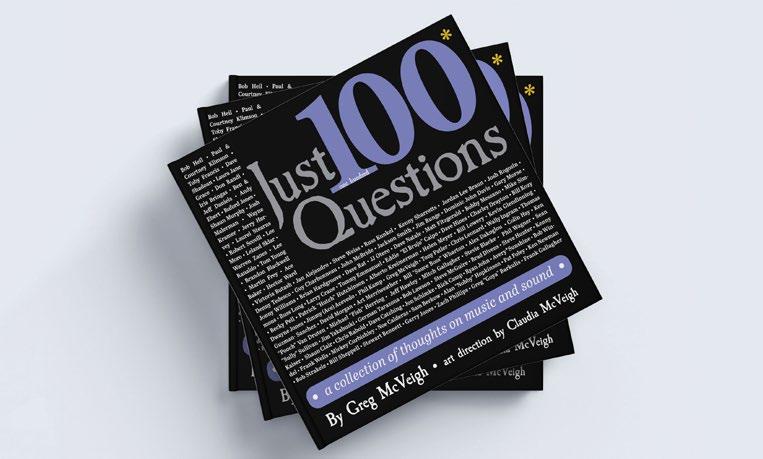
to be successful in the touring world, asking 100 professionals each a specific question based on their background and expertise, capturing advice and knowledge from a veritable who’s who of the industry. A portion of each sale of Just 100* Questions will be donated to help support the mission of The Roadie Clinic.
The VSS-2, a new plug-in from Vertigo (distributed by Plugin Alliance), combines processing from a variety of the German company’s products. These include the VSE-2 Gyrator EQ and VSC3 Quad Discrete Compressor hardware units and the VSM-4 Mix Satellite ’59 and VSE-4 Big
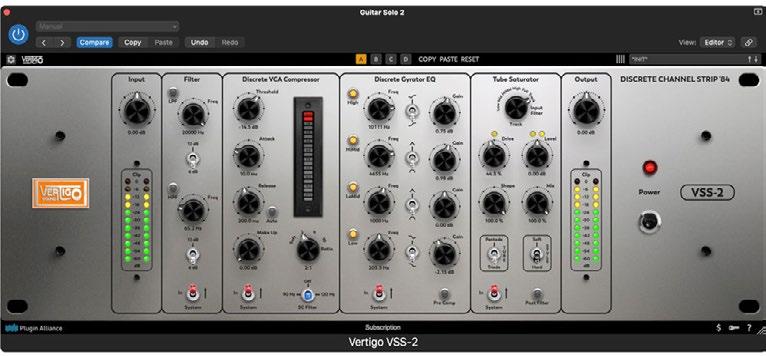
Discrete Gyrator EQ plug-ins. VSS-2 takes filters from the VSE-2, the quad VCA compressor from the VSC-3, the discrete Gyrator EQ from VSE-4, and the tubes from VSM-4, and then combines them all into a curated signal chain that aims to sound like a high-end analog console. ■
By Mike Levine
When I first heard about UJAM’s UFX Reverb 2.0 and saw its price, I assumed it would be just another cookiecutter algorithmic reverb—but, wow, was I wrong! UFX Reverb punches well above its price range, offering surprising sound quality and powerful multi-effects capabilities that allow you to do more than just add ambience to a track.
The plug-in has a resizable GUI and features 20 reverb types, called Modes, an increase from the 10 in version 1. In addition to standards like Plate, Room, Hall and Spring, there are less common choices such as Scoring Stage, Parking Garage, Shimmer and Courtyard.
The Dimension section is a cluster of four knobs to the left for Time, Size, Pre-Delay and Early Reflections. The Character section features single knobs for Diffusion, Damping and Modulation.
On the bottom left and right are Input and Output sliders with corresponding meters next to them. Then there’s a large Mix (Dry/ Wet) slider with a Preset Lock. When the lock is on, you can step through the large collection of presets without changing your Mix settings. Because the presets are configured only as insert effects, you can compare presets with the Mix locked at 100 percent wet if you have the reverb on an aux bus.
Other controls include a Ducking knob, which lets you set the reverb to duck when the dry signal is present, preserving transients and making the source more intelligible. A Freeze button sets the reverb tail to infinite and turns off the damping, thereby creating sustaining, ethereal effects without loop artifacts.
The Dual Mode button enables a second, slightly different reverb in the effects chain, adding width and dimension. Although you can’t choose the secondary reverb type, it’s still a compelling effect that adds significant richness to the sound.
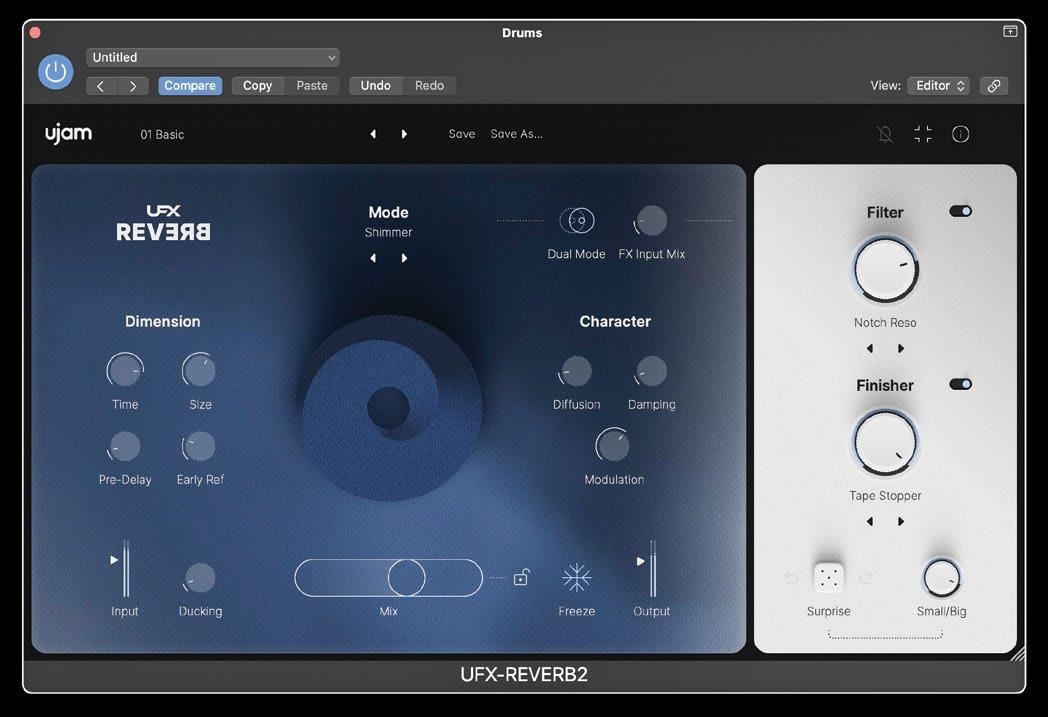
Meanwhile, there’s plenty to discover over on the GUI’s right side. Each knob has a drop-down menu of effects below it and an on-off switch. The knobs control the amount of the effects.
The Filter section includes more than 40 presets, including boost and cut filters for highs, lows and mids, notch and comb filters, and special effects presets such as Radio, Telephone and Megaphone. It also offers distortion effects and a Ring Modulator.
The Finisher section appears on other UJAM plug-ins and includes eight categories: Basic, Beyond, Character, Delay, Glitch, Move, Pitch and Tone. The Basic category mainly offers standard effects like Tremolo, Auto Pan, Slicer, Gate, Chorus and so on. The Delay category provides a variety of presets that help add motion and complexity.
Things really get interesting in the other categories, many of whose presets are multi-effect combinations. Many essentially fold, spindle and mutilate your audio, particularly with the Mix slider up high. You can summon alien voice effects, tape stop effects or a lo-fi cassette tape emulation, to name just a few.
COMPANY: UJAM
PRODUCT: UFX Reverb 2
What makes these features even more effective is a knob called FX Input Mix, which lets you apply the Filter and Finisher effects on the dry signal in any proportion you want. A button labeled Surprise creates random effects configurations and settings. The Small/ Big knob next to it controls the degree of randomization.
WEBSITE: www.ujam.com
PRICE: $49
PROS: 20 different reverb algorithms. Filter and Finisher sections provide multi-effects capabilities. FX Input Mix knob lets you add effects to the dry signal. Lock lets you step through presets without changing Mix settings. Plenty of useful presets. Excellent value.
CONS: No choice of secondary reverb type in dual mode. Filter and Finisher effects are preset-only.
UFX Reverb 2 is an excellent-sounding, versatile plug-in at a surprisingly reasonable price. It has plenty of useful reverb sounds, but its real strength lies in its ability to combine multi-effects with the reverb. I enjoyed experimenting with it on drums, vocals, guitars and keyboards, and was able to dial in compelling effects, some subtle and others not. This was the first UJAM plug-in I’ve tried, and I’m now excited to check out the rest.
By Barry Rudolph
Audio Engineering Associates was founded in 1964 by Wes Dooley. In the 1970s, it was a repair shop for RCA 44 ribbon microphones, and the company continues to service vintage RCA and Coles ribbon mics. In 1998, the AEA R44C, a replica of the RCA 44BX, was manufactured using RCA’s original methods and techniques, and the first original-design AEA microphone, the R84, debuted in 2003.
Currently, AEA, based in Pasadena, Calif., makes 10 different ribbon mics that are individually voiced by way of their motor design (transducer), grille and the various acoustic materials throughout. Some of the mics are flatter, some have a pronounced high-frequency roll-off, and others more/less proximity effect and character/color. Most use AEA’s standard Big Ribbon transducer, which measures 2.35-inches long with a 1.8-micron-thick ribbon.
The AEA Nuvo active ribbon microphone line debuted in 2013 with the N22, followed by the N8 in 2014 and N13 in 2024. All Nuvo mics use 99.95 percent pure aluminum-leaf ribbons that vary in the way they are voiced to support their recommended applications, including the ideal distance from a source. The line also has sufficient gain to work well with a console’s preamp without using an inline booster (which blocks phantom powering).
Compared to the other AEA ribbon mics, these are smaller and lighter, allowing them to easily fit into any setup. The Nuvo N22 is designed for near-field applications—1 to 18 inches from the source—and can take high SPL levels. Its ribbon has minimal proximity and works well for close-miking instruments and vocals by naturally rolling off the low frequencies. This is a different sound than using a high-pass filter.
The Nuvo N8 uses the same ribbon but is a far-field microphone for distant miking at least 12 inches or further away. It is similar in characteristics to AEA’s full-size R88 stereo ribbon mic.
The Nuvo N13 is a mid-field ribbon mic, ideally placed anywhere from 8 to 36 inches from the source. It has a new motor design and a 1.2-micron-thick ribbon, which is only 1.3 inches long. The N13 uses the thinnest ribbon of all the AEA mics. Thin, corrugated, aluminum ribbons capture high frequencies better but are fragile and more easily damaged.
Finally, fourth in the line is the newly designed Nuvo N28. It is a side-address, stereo ribbon microphone with two carefully matched, bi-directional (figure-of-8) ribbon transducers in Blumlein configuration—and it is not a pair of N22s in one mic.
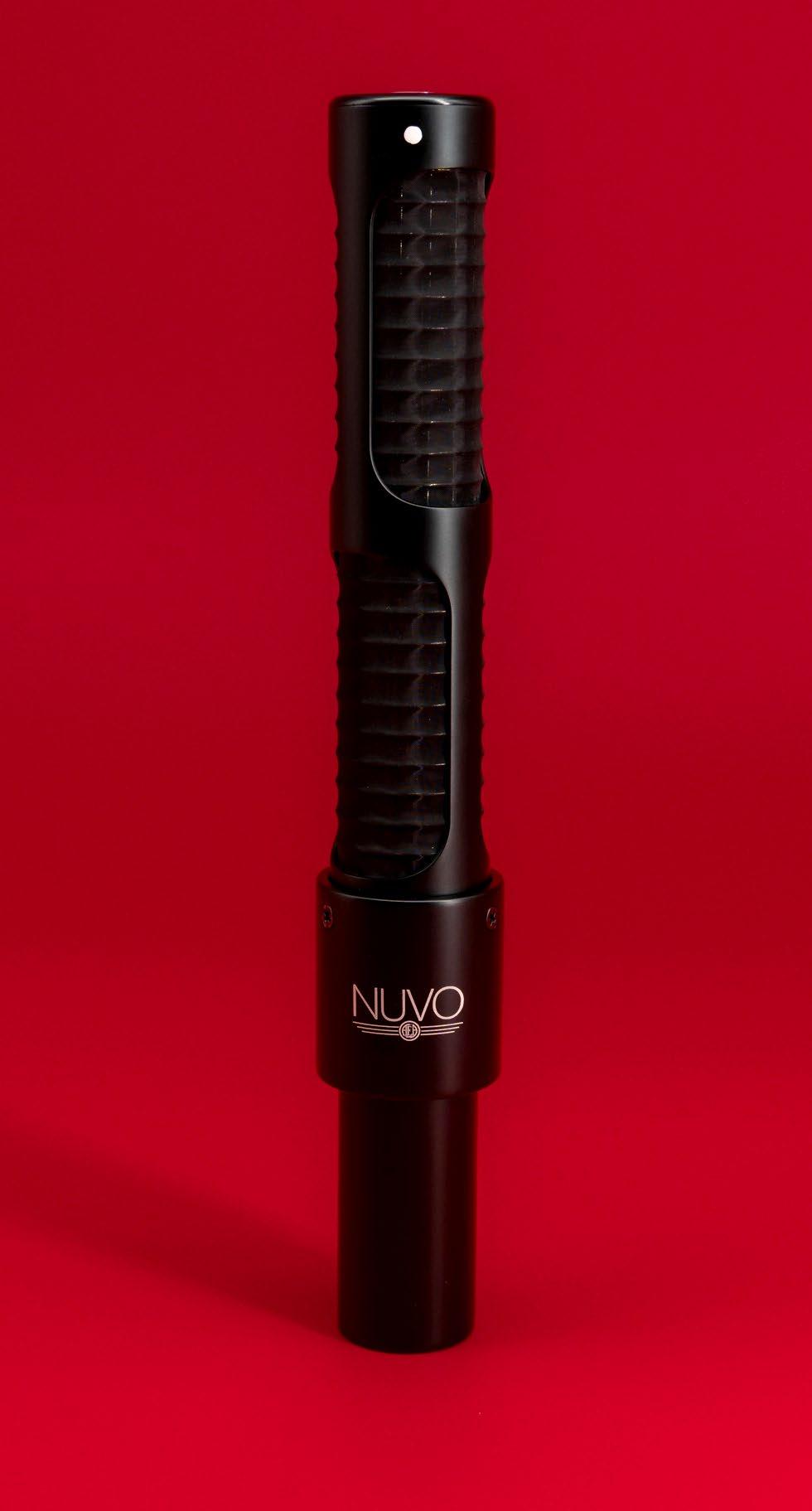
The Nuvo mics are of a different design than the other AEA models, beginning with the interior signal chain. The voltage coming from the motors goes through a Lehle toroidal transformer—two for the N28—and each transformer has a 1:89 (turns) ratio. A J-FET buffer amp circuit, designed by Fred Forsell, follows the transformer to work as an impedance converter. The broadband output impedance is 92 ohms. A variation of this circuit is used in all AEA active ribbon mics, as the company avoids using any internal electronics that would boost gain and/or add noise.
The two ribbon transducers in the N28 are positioned vertically, one above the other, and set in a fixed Blumlein configuration that cannot be changed, as Blumlein stereo requires that the two figure-of-eight pattern lobes be rotated 90 degrees from each other. Again, the ribbon transducers measure 1.31 inches long and
1.8 microns thick.
The two ribbons measure 3 inches apart (center-to-center) to provide better phase coherency and time accuracy than when using two individual microphones. To assist in getting the right angle for the N28 at the source, there is a white “aiming dot” engraved at the top and front of the mic’s black body. It’s a great feature, but I’d like to see this dot duplicated on the top of the mic so that I could aim while standing over it. A minor quibble.
The N28 measures 10.66 inches tall (270 mm) and 1.62 inches (41.1mm) in diameter. Frequency response is stated as 20 Hz to >20 kHz, with a max SPL rating of 135 dB. The ribbons are each protected by an elaborate screening mesh material in a frame that locks into a groove within the mic’s body, providing another layer of protection for the ribbon.
The kit comes with a foam windscreen, basic shock-mount clip, soft-cloth storage bag, foamline storage carrying case and a 15-foot XLR breakout cable.
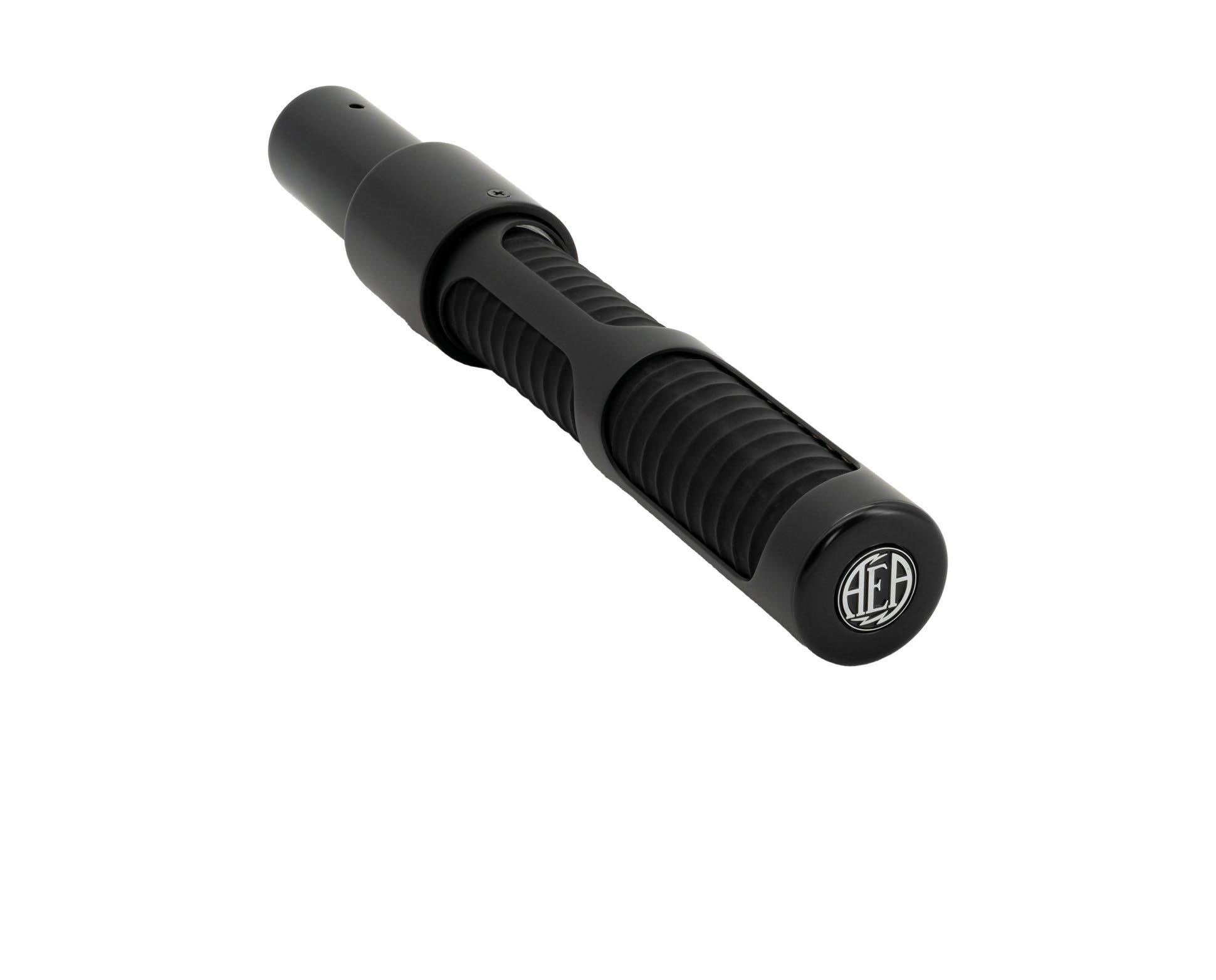
I used a Trident 88 console for recording drums in a live room measuring 26 feet long by 22 feet wide with a 12-foot ceiling. I placed the N28 in front of a Ludwig Legacy mahogany drum kit with the bottom of the N28 1.3 meters (laser-measured) above the hardwood floor. I aimed it at the snare drum approximately 2.1 meters away.
I record mostly Pop/R&B music, and for all the tests, I used a separate kick drum mic for more presence, control and additional low frequencies, if later required. Back in the control room, the stereo imaging using only the N28 was intense; it accurately portrayed the panoramic locations, left to right across the kit audience’s perspective. The snare, toms and cymbals and kick copied the balance I heard out in the room.
Mic positioning is critical—in using this midfield recording technique, you’ll clearly hear any drum tuning problems, buzzes, rattles, resonances and overly bright cymbals. Using just the N28, I had enough kick drum level in the stereo drum mix, but it was a bit roomysounding for my tastes. Adding the closer kick drum mic fixed that.
I also tried using the mic at the same floor height but closer in, at about 1 meter. Here,
Located beneath the microphone in this photo, the aiming dot helps determine the best right angle for mic positioning.
The N28 will work as a Mid/Side pair by aiming the top transducer straight on to the source, not at 90 degrees. The aiming dot would “look” at 45 degrees to the left of the direction to the source. That would make the top mic transducer the Mid and the bottom one the Side mic. With the N28 in the same spot as it was in the Blumlein position, it produced a narrower stereo image, but now the stereo width is adjustable post-recording.
For the rest of the tests, I used Blumlein stereo and changed over to a Millennia Media HV-37 pre-amp going into a Manley NuMu stereo compressor/limiter. The NuMu was for extra gain or slight compression (when needed) during the recording session I was doing. The HV-37 is stable at all gain settings with no increase in
COMPANY: AEA Ribbon Mics, Inc.
PRODUCT: N28 Nuvo Compact Active Stereo Ribbon Microphone
WEBSITE: www.aearibbonmics.com
PRICE: $2,499 MSRP
PROS: Pleasing, beautiful, accurate stereo recordings.
CONS: Mic clip is not my favorite; a little pricey. Could use second aiming dot on top.
noise. For the most part when recording very quiet instruments, the HV-37 was nearly or at max gain. The N28’s sensitivity is measured at 6.10 mV/Pa (-44.3dBV).
For recording acoustic guitar, I started by aiming the N28 at where the neck joins the body. I had the N28 at 0.8 meters above the carpeted floor and 1 meter away from the player’s Breedlove 12-string. The N28 is a very warm and thick sounding mic that is ideal for smoothing bright acoustics and for getting fat tones on single-string picking arpeggios and melodies. The N28 has a powerful lower register at this mic position; for loud rhythm acoustics, I would have to use a high-pass filter or move the mic further away. Again, mic positioning and distance are more critical. Further away at 1.5 or even 2 meters, the stereo imaging was there but, in this small dry room, the ambience was boxy.
For recording electric guitar, I had the N28 placed at 0.4 meters away and directly pointing in between the center and surround suspension of my 30-watt Hellatone, 12-inch speaker mounted in an Avatar open-back cabinet. The overall warm tone helped to smooth out the guitar sound’s harsh high-frequencies. The guitar track sounded better in the control room than out in the studio! Compressing with the NuMu sounded excellent to dynamically-flatten out the guitar part—this was a good sound.
The best sound/performance of the day came from a solo violinist! This mic seems made for this instrument used in this way. Again, setting up on the carpet, I placed the N28 1.86 meters above the violinist’s head with the aiming dot “looking” down at the instrument. This setup produced a fantastic “picture” of the instrument fully-balanced and with enough ambient space around it. Moving the mic higher would get more room in the picture.
The Nuvo microphones are winners because they are designed to be used like any other studio microphone on any instrument or voice, but the N28 is special. It is fantastic for treating overly shrill-sounding sources and capturing the whole space around it, and I love the way it captures a source’s sound and the room’s tone as it actually exists. In that way, it offers a universe of sonic possibilities for the recording engineer/ producer.
By Michael Cooper
Since SPL introduced its groundbreaking, analog Transient Designer in 1998, plug-in emulations have essentially hewed to the pioneer’s seminal two-stage design, using gain controls to modify the attack (transients) and sustain (decay) envelope stages of an audio signal.
Three-Body Technology’s new Trinity Shaper plug-in revamps the paradigm, adding an additional gain stage—acting between attack and sustain—to sculpt your track’s sound with even greater control. Add Trinity Shaper’s multiband processing and comprehensive sidechain facilities to the mix, and you’ve got a real powerhouse at your fingertips.
Raise the Sustain control (affecting the envelope beginning 50 ms after each transient’s expiry) on a lead-guitar track to lend solos David Gilmour-esque sustain, or plunge it to make chicken-pickin’ country licks sound more clipped.
Each of the three envelope controls are joined by two knobs you can use to adjust the corner frequencies of their dedicated high-pass and low-pass filters. Used together, an HPF and LPF pair let you narrow the frequency range over which its corresponding Attack, Body or Sustain control will act. For example, by narrowing the Attack control’s range of influence to just low-midrange frequencies, you can lend snare strikes a meatier thwack without making the stick hits sound clickier.
To home in on optimal HPF and LPF settings, click a headphone button next to the Attack, Body or Sustain knob to monitor the sound of the equalized envelope stage in isolation. A vertical meter to the right of each headphone button displays how much gain is being increased or decreased (as much as ±24 dB) in its associated envelope stage.
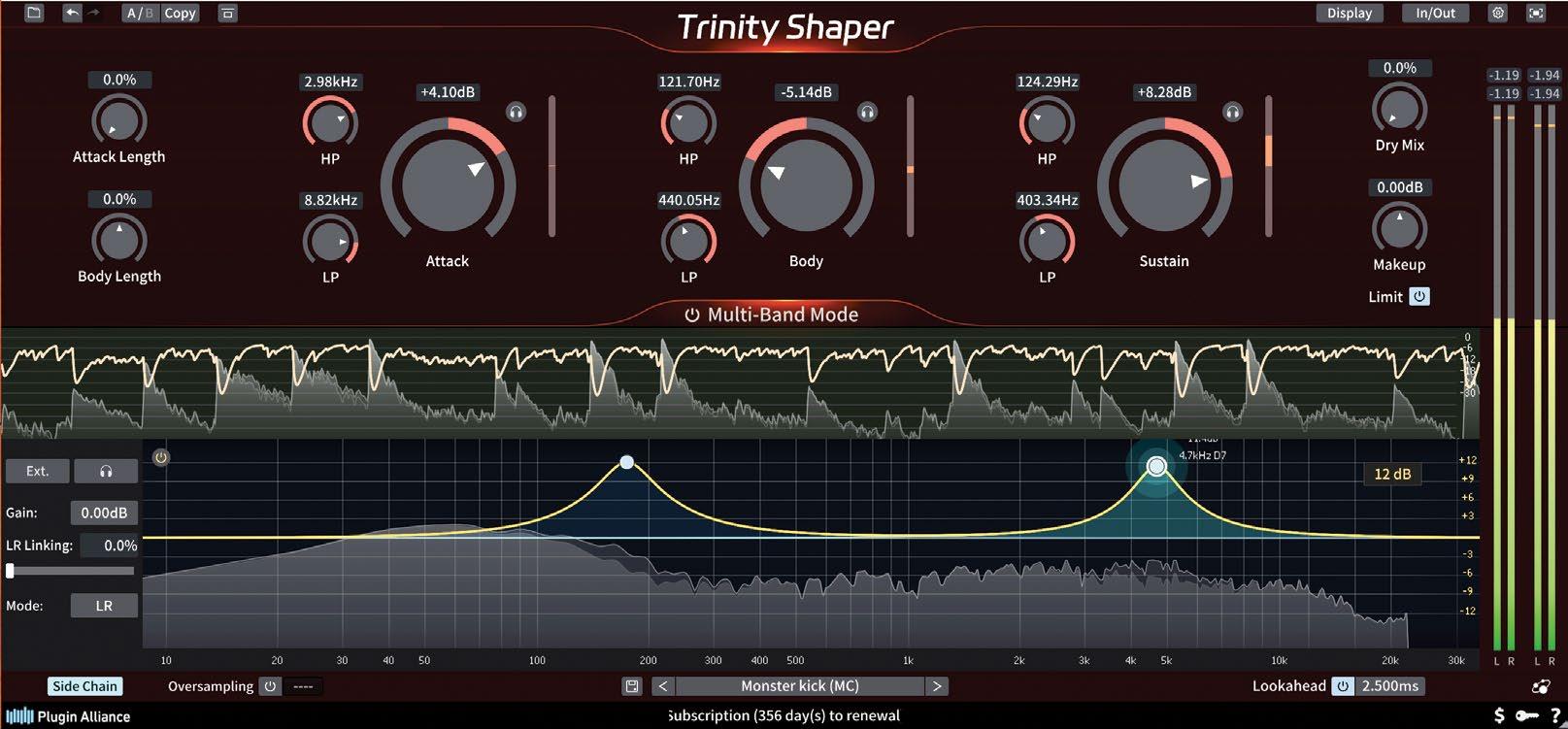
TIME AFTER TIME
Central to Trinity Shaper’s operation are its large Attack, Body and Sustain knobs; each knob boosts gain during its associated envelope stage with a clockwise turn from the noon position, and cuts gain with a counterclockwise turn.
For example, raising the Attack control on a snare drum track increases the volume of transients, creating a snappier sound during the first 10 ms of each signal peak, whereas lowering the control diminishes them. Boosting the Body control on a kick drum track adds weight for a default duration of 50 ms after each beater slap’s transient expires, while cutting the control makes the sound level dive after the transient click and then rebound during the shell’s sustain.
Of course, striking the bell of a 4-inch splash cymbal and finger-plucking a bass guitar string produces attack and body envelope stages of different lengths that don’t neatly conform to a plug-in’s fixed detection algorithms. So, Trinity Shaper lets you tweak its detectors to adapt to each track’s idiosyncratic envelopes: Raising the plug-in’s Attack Length knob extends the attack stage’s processing duration to as much as 60 ms to better handle instruments with meatier transients. Turning the Body Length knob clockwise from its noon position progressively increases the body stage’s processing duration from the default 50 ms to as high as 120 ms, whereas a counterclockwise turn lowers it to as little as 10 ms. Here again, the headphone (monitoring) buttons help you to arrive at the best settings.
A Makeup knob boosts or cuts overall gain following attack-, body- and sustain-envelope processing, and a bypassable softclipping Limiter guards against digital “overs.” The plug-in’s Dry
Mix knob blends dry and processed signals, enabling parallel processing. Stereo I/O meters grace the GUI’s right side.
So far, I’ve been talking about Trinity Shaper’s single-band mode. To process complex tracks such as a drum bus or full mix with even more discriminating firepower, click the plug-in’s power button to enter multiband mode.
Now the HPFs and LPFs are disabled, and, opening in a panel below, a four-band envelope shaper takes over. Adjusting the crossover frequencies between adjacent bands, you can now apply processing within each delimited frequency band using its dedicated set of Attack, Body and Sustain controls. Each band has its own mute, solo and headphone (monitoring) buttons, plus a dual-layer display in which a yellow trace showing real-time, post-processing gain changes overlays a gray input-signal waveform for each band.
The large Attack, Body and Sustain knobs above the multiband panel now become global controls whose gain changes are summed with those you applied with every same-named knob in the multiband panel. For example, if the large Attack knob is set to +6 dB, the lowfrequency band’s Attack knob is trimmed to -6 dB and the high-frequency band’s Attack knob is set to +6 dB, the net effect will be 0 dB Attack change in the bass (6–6=0) and 12 dB gain in the highs (6+6=12). Attack Length and Body Length controls remain active in multiband mode.
A horizontal bar along the bottom of Trinity Shaper’s UI hosts buttons for activating oversampling (switchable from 2x to 16x in four steps), enabling lookahead detection (to help preserve the contour of transients), managing presets and opening a panel containing sidechain controls. The latter allows you to switch between internal and external sidechain activation, apply gain to and monitor the selected sidechain’s signal, and adjust the degree to which left and right, or, alternatively, mid and side channels, are linked (from 0% to 100%).
The (internal or external) sidechain signal can also be equalized using an 8-band parametric EQ boasting fully 10 types of filters borrowed from Three-Body Technology’s impressive KirchhoffEQ plug-in. Boosting a band makes the Attack, Body and Sustain controls more reactive in that spectrum.
Although Trinity Shaper is a mono/stereo processor, setting the sidechain’s channel linking
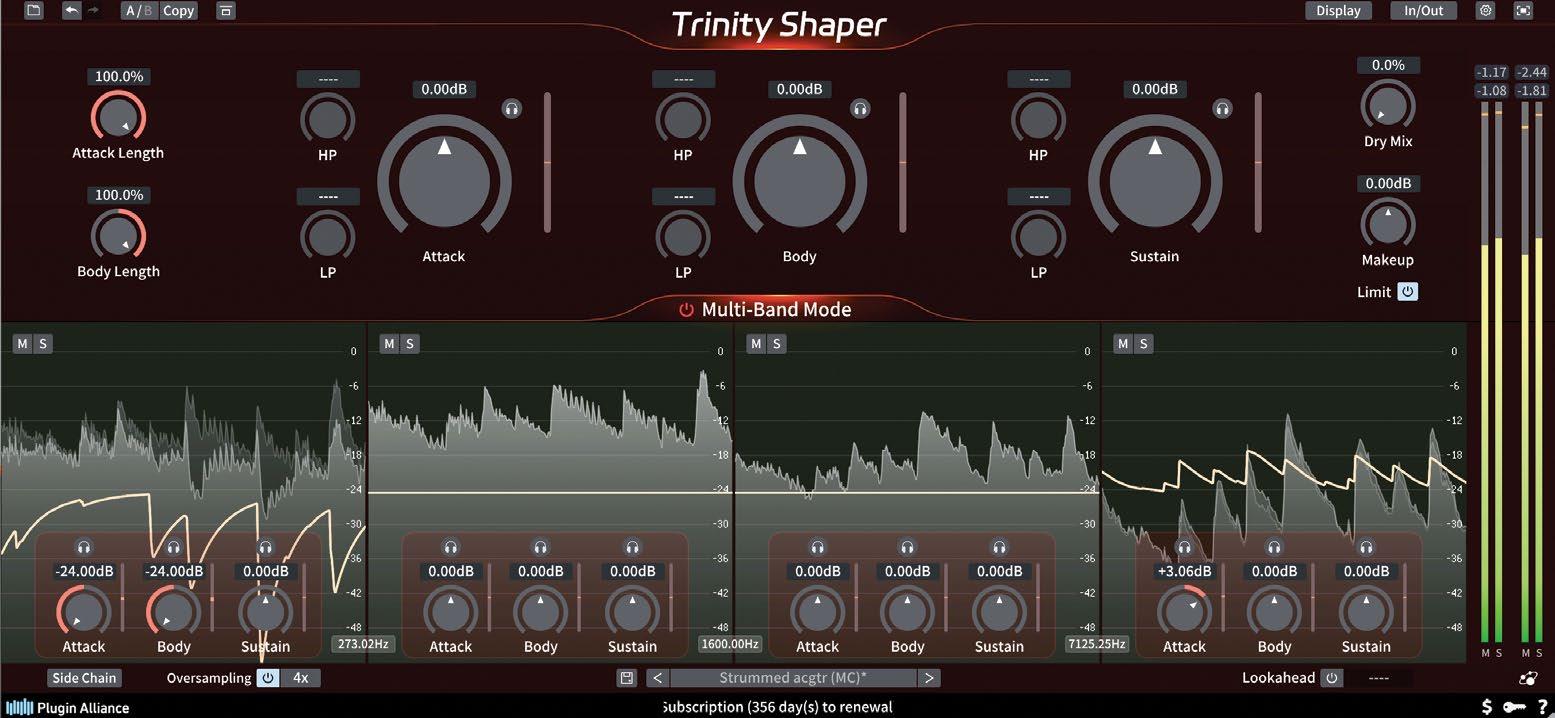
to 0% allows left and right (or mid and side) channels to be processed to entirely different degrees, with neither channel’s gain changes influencing the other channel’s. Because the two channels share the same control settings, this isn’t true dual-mono or mid-side operation, but unlinking channels gets you partway there.
Rounding out Trinity Shaper’s feature set are tooltips; undo and redo buttons; A and B workspaces; global I/O gain and pan controls; a phase-inversion switch; full-screen mode; and user-adjustable settings for customizing the look and behavior of the GUI in a zillion ways.
During mixing sessions, Trinity Shaper rescued a thin-sounding snare drum track from the garbage heap. Cranking the Body control for the lower midrange (delimited using the singleband mode’s LPF and HPF) gave the drum sorely needed heft. I nosedived the Sustain knob (active from 776 to 3830 Hz) to stifle an annoying batter-head ring, and I cranked the Attack for high frequencies to sharpen the stick strikes. Deliberately bypassing the plug-in’s
COMPANY: Three-Body Technology
PRODUCT: Trinity Shaper
WEBSITE: www.plugin-alliance.com
PRICE: $199
PROS: Sounds great. Superb GUI. Intuitive operation.
CONS: No bypass switches for Attack, Body and Sustain controls.
limiter clipped the output like mad, squaring off the peaks for a dirtier sound that rocked!
On an overly dry kick drum track, boosting Trinity Shaper’s Sustain knob—tuned to affect only 124 to 403 Hz—and lowering the Body knob for roughly the same frequency range produced a classic Bonham boom with a slightly clearer and more distinct beater slap. Cranking the sidechain’s Kirchhoff bell filter 12 dB in the same band was instrumental in achieving the effect (see screenshot).
Next up was stereo-miked acoustic guitar strumming in a dense mix. Placing Trinity Shaper in multiband mode and cutting the Attack and Body controls below 273 Hz—with mid and side channels fully unlinked, and Attack Length and Body Length controls cranked—made the instrument sound less clunky and more sparkly. I wish the global Attack, Body and Sustain controls each had a bypass switch so I could make on/off comparisons without undoing my boost/cut setting for each. I’d also like to see a sensitivity or threshold control for the attack stage, which would prevent grace notes on guitar and snare drum tracks from triggering processing, but that’s moonshot dreaming, not reasonable criticism.
The bottom line is that no other envelope shaper besides Trinity Shaper provides completely discrete level control over a track’s “body” envelope stage. Being able to process attack, body and sustain independently—and to a different degree in four frequency bands—brings precision control to the sub-atomic level. And yet, due to its outstanding GUI, Trinity Shaper’s operation is quite intuitive. Most importantly, Trinity Shaper sounds terrific.
By Mike Levine
DAACI Natural Drums is a virtual drum instrument for Mac and Windows that is designed to make it easy to program MIDI drum beats in various styles. Although AI-based, it requires user input for optimal results. The AI, according to the company, has been ethically implemented.
DAACI, which stands for Definable Aleatoric Artificial Composition Intelligence, is dedicated to creating AI-based instruments for musicians. The company is affiliated with Queen Mary University in London and Abbey Road Redd (an “incubator” owned by Abbey Road Studios that seeks to nurture music technology innovations), among other organizations.
SYNC OR SWIM
When you open the Natural Drums plug-in as an instrument insert, it’s automatically synced to the DAW tempo and transport. It loops its active pattern while the DAW is playing. You can load a preset pattern or program your own. With a single button push, you can also turn off its built-in sequencer so that its internal drum sounds only respond to incoming MIDI from your DAW.
Another way to use it is as a MIDI effect, where its patterns trigger another virtual instrument and its internal sounds are unavailable.
Either way, its GUI is essentially the same and is divided horizontally into two main sections: a programming area at the top and a piano-roll display at the bottom. The display reflects the currently playing four-measure loop. A fill gets created at the end of the fourth measure when the Fill button is activated.
The Piano Roll itself is only for editing velocities, not changing the rhythmic placement of notes. You can select and adjust the velocity for groups of snares, hats, etc. (the plug-in determines the groups based on similarity), but not individual hits. It’s helpful but limited. The best part of the Piano Roll is that it provides visual feedback of the changes you make as you adjust the various aspects of the beat. Rudimentary mix controls are provided for changing velocity levels and muting or soloing kit elements.
SKELETAL STRUCTURES
Before getting into the plug-in’s options for creating and arranging drum parts, let’s start by looking at how to program a single bar.
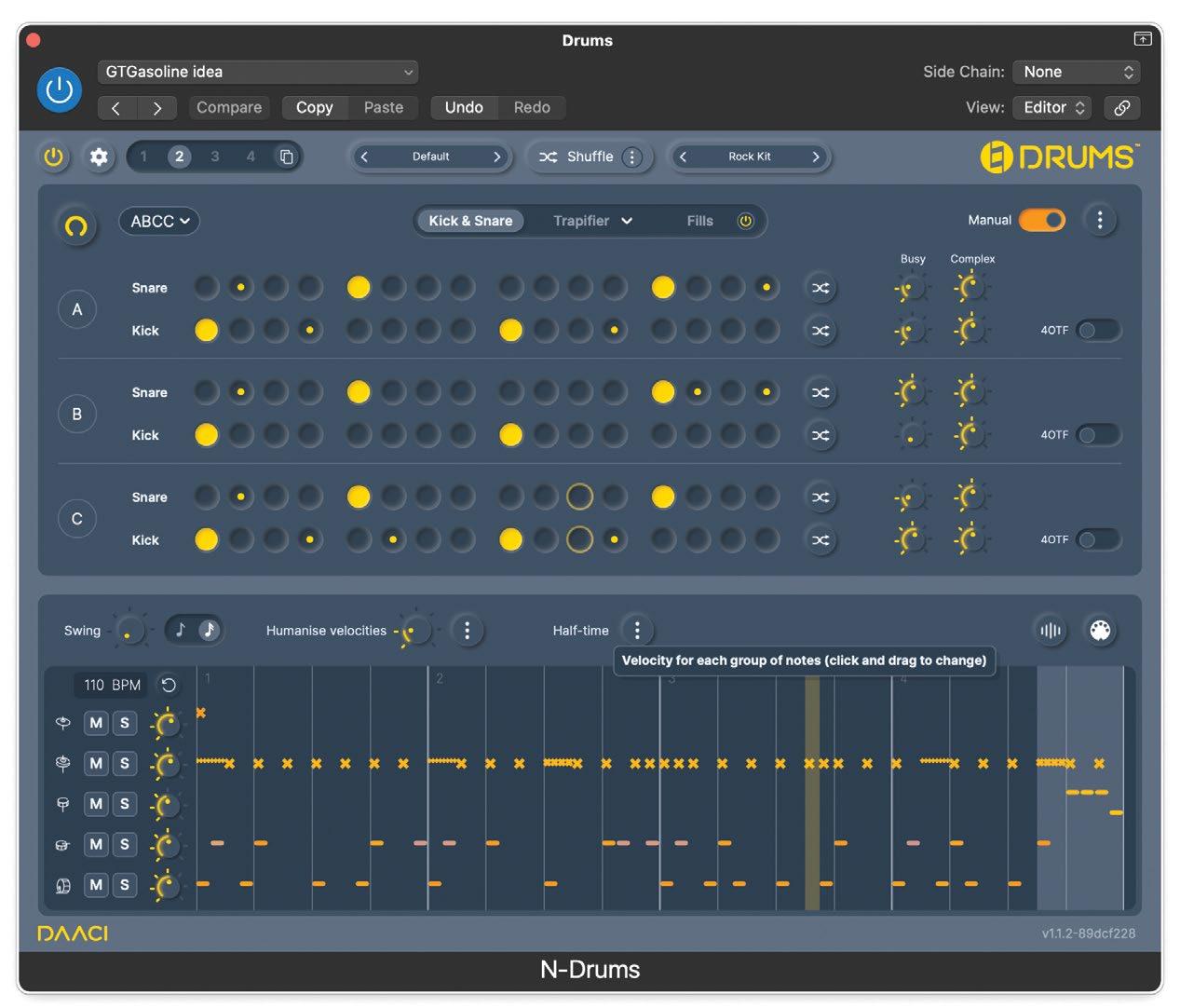
Natural Drums provides a 16-segment grid where you can select the beats on which each drum or cymbal will play. Instead of programming everything in a single grid, Natural Drums splits up the process. First, you establish the kick and snare pattern, which DAACI refers to as the “Skeleton,” and then, in a different window, you add the cymbals. The smallest rhythmic value you can access is a 16th-note.
Hi-hat hits can be open or closed. Ride hits can be on the main part of the cymbal or the bell. Having the hi-hat pedal playing along with the ride is also possible.
A third cymbal option is labeled Trapifier. It creates “Trap”-style hi-hat rolls that include many complex ghost-note phrases that use subdivisions as small as 128th-notes. .
There is no way to generate beats based on a floor-tom pattern. You’d have to create the part without the floor-tom hits, export it as a MIDI pattern, and add them via your DAW’s MIDI editor.
One of the strengths of Natural Drums is its ability to create variations. When programming the kick and snare parts, they each have knobs called Busy and Complex. The higher you turn them, the more intricate their patterns become. You can add accents and specify off- or on-beat hits when programming the cymbals.
Individual Shuffle buttons are available for each drum and cymbal. They’re designed to create intelligent variations of the “embellishments” of your beat, often adding ghost notes to the snare or cymbal phrases. The results are informed by the AI engine and its “drummer-like” intelligence.
There are Swing controls, too, which let you adjust the amount of swing and choose whether it’s based on eighth- or sixteenthnotes. In addition, a knob called Humanize Velocities dials in minor variations that make the part feel more natural.
If you activate the Fill button at the top of the programming area, Natural Drums places a fill at the end of every four-measure section, and you have significant control over their content. You can adjust their length and turn the toms on or off. Several fill styles are available, including a couple that include ghost notes.
Programming MIDI fills that sound like a drummer played them is never an easy task. I’ve found the best ones to be those played on MIDI kits by real drummers. That’s obviously not the case with Natural Drums, which generates its own fills. Depending on the musical context and the type of kit you’re using, they’re usually pretty good, but there were times when they sounded too “programmed” for my taste.
Part of the issue is that the fills created can only consist of snares and toms. That’s a shame because some of the coolest fills you hear from real drummers also feature subtly placed hi-hat and kick drum hits.
Natural Drums is a powerful tool, whether you’re experienced at programming drums or not. For those in the novice category, it offers a simplified programming interface option called Compact Mode. It eschews the grid for a series of circular control sliders for Kick, Snare, Hats and Fills, which increase their complexity.
Above are style buttons for Dance, Funk, Pop, Trap and Swing. Clicking on them creates a new beat variation in the appropriate genre. Another way to access style-specific beats is by opening one of the many patterns provided in the Preset menu.
One significant limitation of Natural Drums is that it only supports 4/4 time. On its website, DAACI says, “We are working on adding more time signatures shortly to expand its versatility.” Nothing more definitive has been announced at the time of this writing.
Natural Drums allows you to program and play back a four-measure loop. Up to three separately programmed measures, designated A, B and C, can make up that loop. You can select the order in which they play back over the four-bar duration by choosing AAAA, AAAB, ABAC, AABC or ABCC from a drop-down menu.
Once you have programmed the measures and chosen the order, you can export your loops to your DAW over MIDI or as audio using an easy drag-and-drop method. What’s more, there are four Snapshot slots into which you can save loops for instant recall.
Unlike some drum instruments, Natural Drums doesn’t support the creation of songlength parts. However, it’s easy to construct such a part in four-measure segments. One way would be to create beats for the different song sections using the A, B and C parts. For example, A for verses, B for Choruses and C for the bridge. You could then drop those into your DAW at the appropriate places and generate variations in the fills and subtle changes in dynamics or hit placement to build a natural-sounding part over the course of the song.
DAACI Natural Drums is more than just a drum programming environment; it’s also a MIDI drum instrument with 17 included kits, which are broken down into Acoustic, Electronic, LoFi and Experimental categories. There’s also a link to download additional kits through a collaboration with Spitfire Audio LABS, a sound subscription service.
One drawback to the internal kits is that they only have 11 drum sounds in each. For example, each kit only has one snare sound, so there are no cross-sticks or rimshots.
Despite that limitation, the included kits sound quite good. They’re not just raw drum samples;
COMPANY: DAACI
PRODUCT: Natural Drums
WEBSITE: daaci.com
PRICE: $99
PROS: Intelligent and easy-to-use. AI implemented ethically. Works as a virtual instrument or MIDI effect. Kit sounds are processed and mix-ready. Easy drag-anddrop export of audio or MIDI. Can host other instrument plug-ins internally.
CONS: Currently supports only 4/4 time. Each kit has only 11 drums and cymbals. Rack toms can sound unnatural, as can some of the generated fills. No hi-hats or kicks in fills.
they’ve been processed to be mix-ready. Still, lacking a full-fledged mixer with effects is a limitation. One workaround is to solo each drum or cymbal and export each as audio, one at a time. Then, you can mix them in your DAW like multitrack drums.
If you want to access sounds beyond what Natural Drums offers, the plug-in lets you host other virtual instruments from within it. The first time you select Plugins from the Kit menu, Natural Drums scans your system for instruments, which then appear in the Kit menu’s Plugins category. Not only can you access other drum instruments with the patterns you’ve created, but also synth or sampler sounds, which can lead to some cool results.
If you need to compensate for instruments with different MIDI note-mapping, you can open the Settings window and quickly remap any kit element.
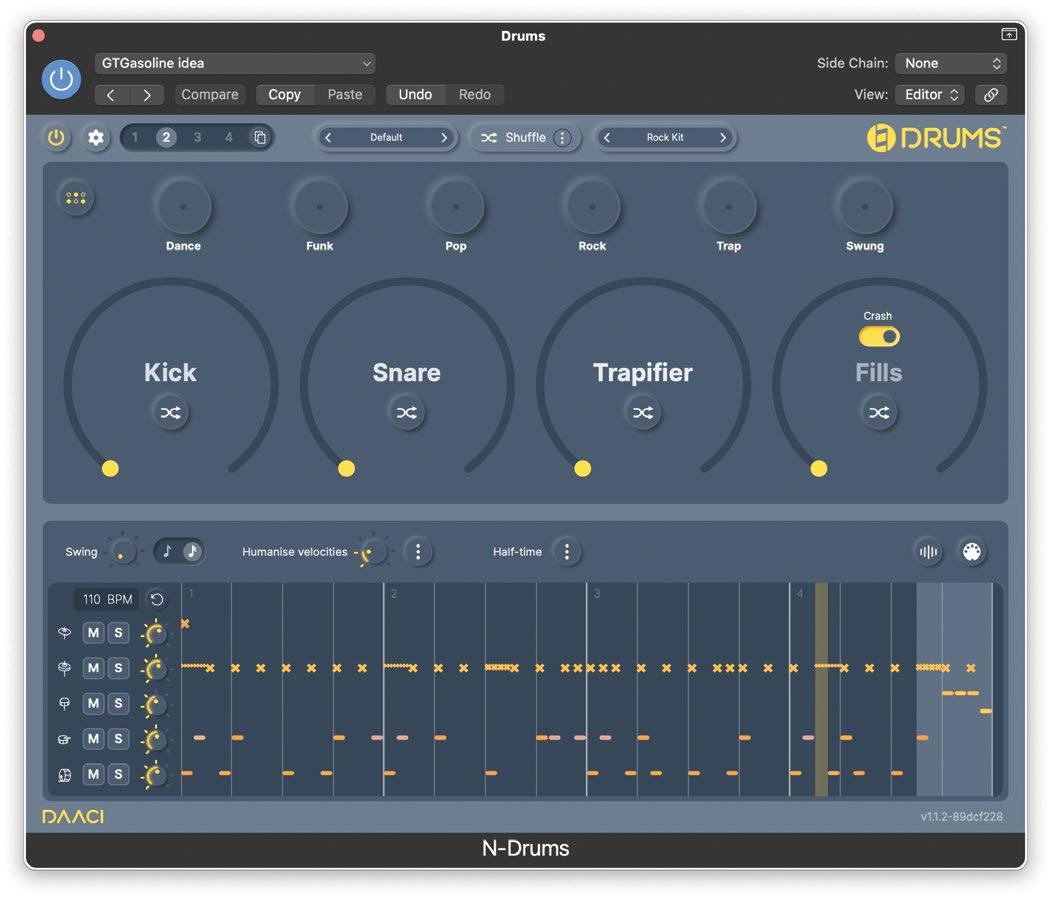
I’m impressed with Natural Drums and I am sure I’ll use it a lot on future projects. It makes programming beats or extended MIDI drum parts fast and easy. I love that its AI component is ethical and designed to think like a drummer. The ability to create variation in the parts for the different kit elements is helpful and a real time-saver.
The lack of support for time signatures other than 4/4 is a limitation that will hopefully be addressed in future versions. I’d also like to see additional mixing features and more creativity in fill generation.
With a price tag of under $100, this plug-in should prove a handy addition to the toolkit of anyone who uses MIDI drums in their productions.

By Craig Anderton
In 1964, U.S. Supreme Court Justice Potter Stewart gave up on being able to define “workflow” with a famous quote: “I shall not today attempt further to define [what] I understand to be embraced within that shorthand description; and perhaps I could never succeed in intelligibly doing so. But I know it when I see it.”
Oooops, sorry, slight mistake—he was actually talking about trying to define “pornography”...but, hey, if the shoe fits, wear it! People throw the word “workflow” around when it comes to software-based music production tools, but really, what is workflow? Is there a workflow meter that measures workflow?
Well, no…but I know it when I see it.
And so do you. Stewart’s comment underscored that some judgments will always be subjective. Then again, because the term workflow is so common, let’s attempt to define some of its characteristics. By doing so, when you encounter new products or techniques, it then becomes easier to evaluate whether something does—or does not—measure up to the ideal of improved workflow.
The word “intuitive” is so overused; let’s get back to its definition: “Something is grasped instinctively, without the need for conscious reasoning or deliberate thought.” Regarding studio tools, I’ll define it as: “I don’t like to read manuals.” Intuitive operation is a super-important part of workflow due to how the brain processes information. Although the dividing line between left- and right-brain activities is somewhat fluid, there’s no doubt that switching from the artist-oriented right brain to the left-brain work of solving problems disrupts the creative process.
Take note of how you react to a tool you’re trying for the first time. If it makes sense, it will likely continue to make sense to you as you delve further into it. A good example is Ableton Live. Some people simply cannot wrap their head around dividing the creative process into loops, scenes and traditional linear recording. Yet, for those not raised on traditional recording, working with Live can feel more natural than working with programs that trace their origins back to tape machine-based studios. It’s no wonder workflow is so subjective.
This is a crucial element of good workflow because, again, you don’t want to spend time solving problems instead of creating art. However, support comes in different forms. For example, mature programs like Cubase, Pro Tools, Digital Performer and others have manuals that are hundreds of pages long. Finding what you want can be challenging. Sure, it’s easy to look up details about something you already know—but try finding
information about a specific function when you don’t know what it’s called, or even whether it exists.
Fortunately, AI-driven search tools like ChatGPT, Copilot and Gemini are fantastic for support, especially with Pro Tools because it’s been around for so long in much the same form. When AI scrapes the internet, it finds much Pro Tools-related material. The same is true of other programs with a big user base. Can’t remember some weird keyboard shortcut? Ask the internet. You may never need to read a manual again.
Consider the iPhone. You can generally keep using a new model the same way you used the previous model, but you can dive deeper into new features at your own speed—or even ignore them if you want. The changes don’t impact your workflow significantly.
Software that rearranges existing functions breaks a cardinal rule of good workflow: Respect muscle memory. If you’re used to finding a certain function in a specific menu, you don’t want to have to re-learn where to find it.
However, there’s a fine line between efficiency and added complexity. Suppose a DAW introduces a better way to stretch time. Do you replace the way it used to do stretching with something unfamiliar, or do you leave the old option intact but also make the new option available?
Perhaps the best solution is adapting new features to existing paradigms. For example, when I found out Ableton Live was going to add MIDI, I questioned one of Live’s designers on whether this was a good idea— “people are going to ask for notation, event lists, sysex dump storage, and other features that mess up Live’s ease of use.”
He replied, “Don’t worry; we’ll do MIDI the Ableton way”—and they did. You could transfer how you worked with audio to working with MIDI. Another good example is how PreSonus’ Studio One integrated looping. Instead of treating clip launching as a separate function, they integrated it into standard audio and MIDI tracks. Like the iPhone, you could continue working as you always did…or not.
When you have fun with your tools, everything flows better. People sometimes diss skeuomorphic designs, yet skeuomorphic means “design elements that mimic the look of older, familiar objects to make new designs more intuitive.” Yes, it’s kind of indulgent to have virtual scratches on a virtual front panel so that it looks “authentic,” but having an intuitive front panel helps workflow.
So, as you navigate the maze of dizzying changes in studio technology, step back and ask yourself whether something encourages good workflow. Of course, “You’ll know it when you see it”—but it also helps to know what you’re looking for, otherwise you may not see it at all. ■
